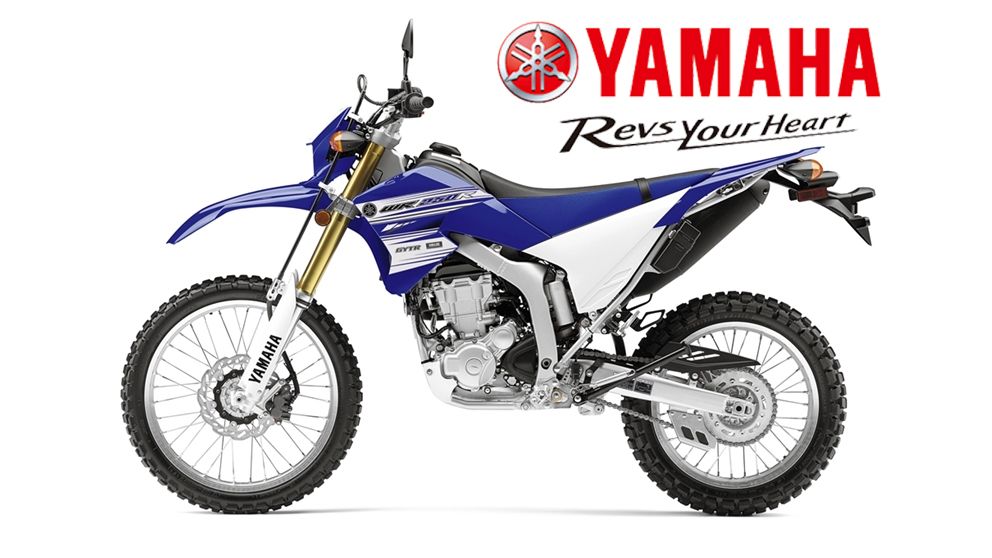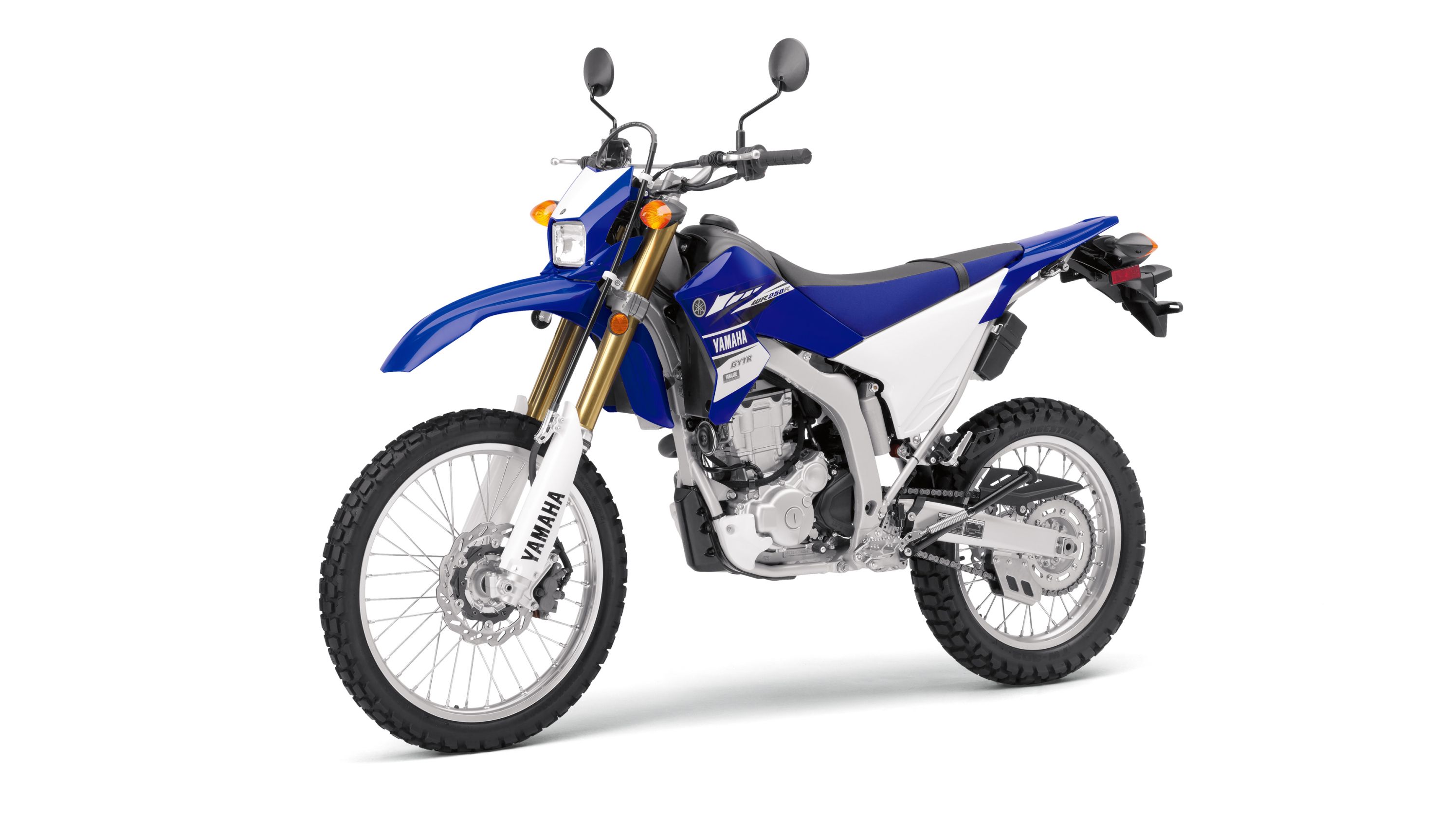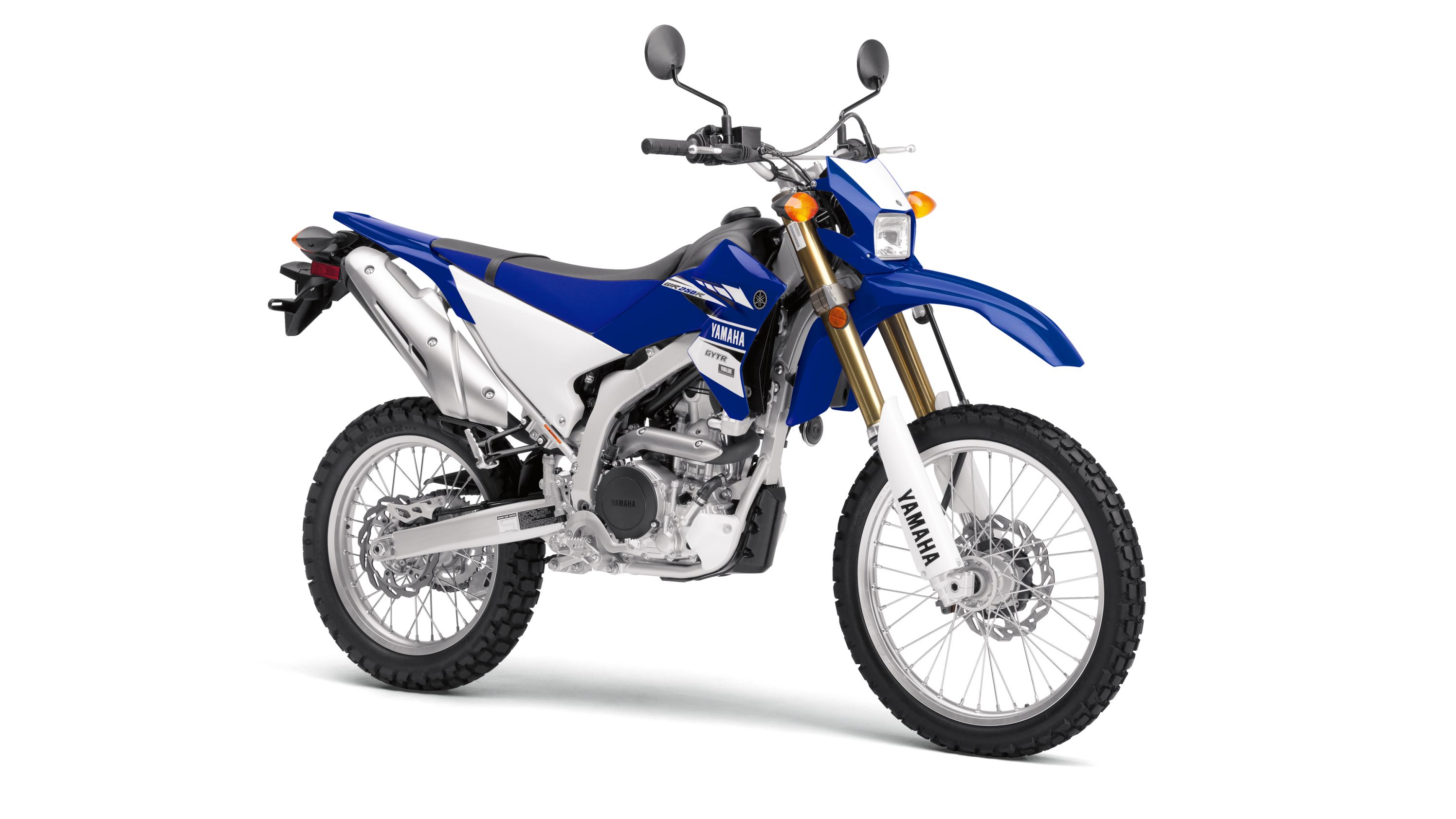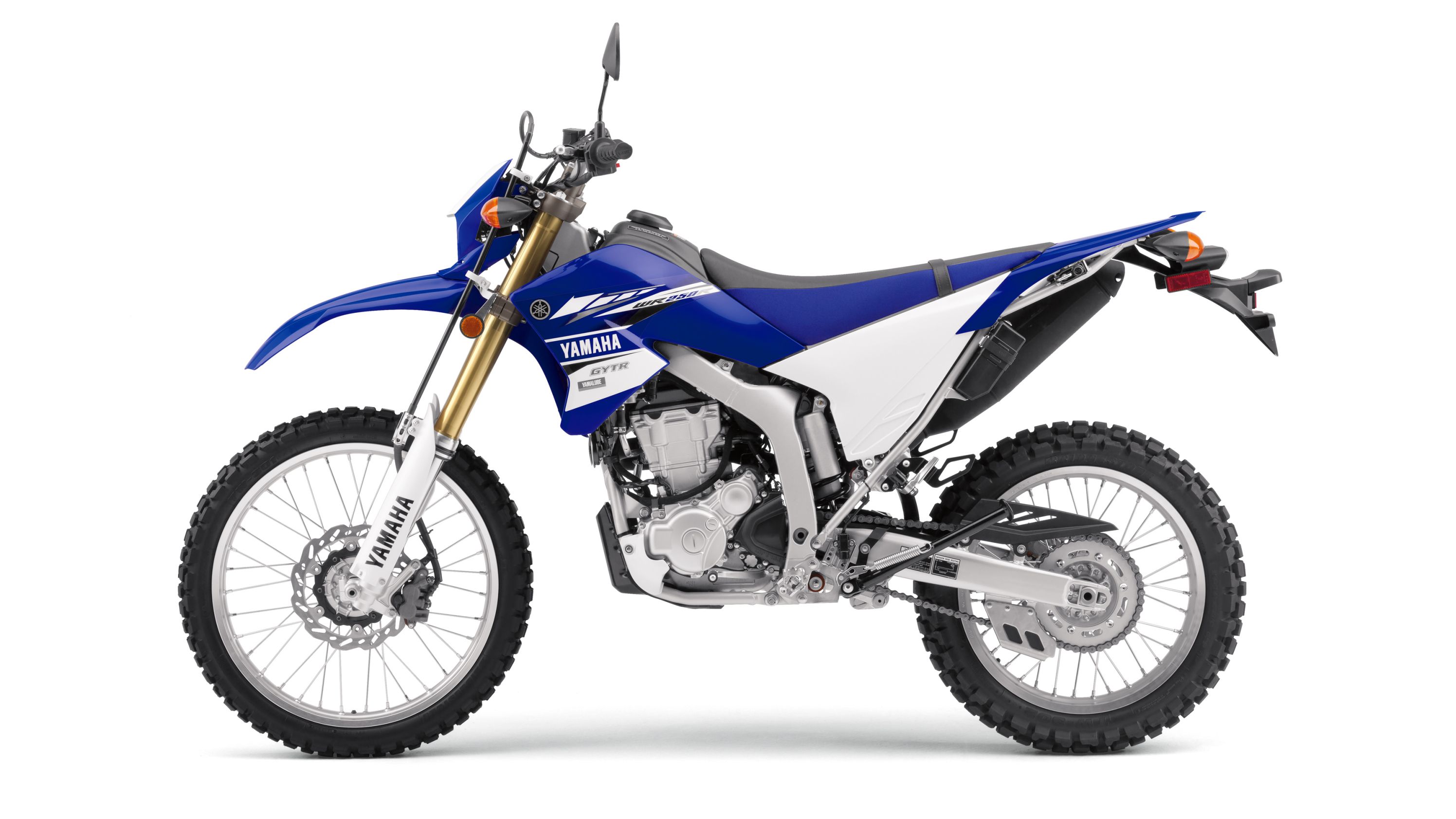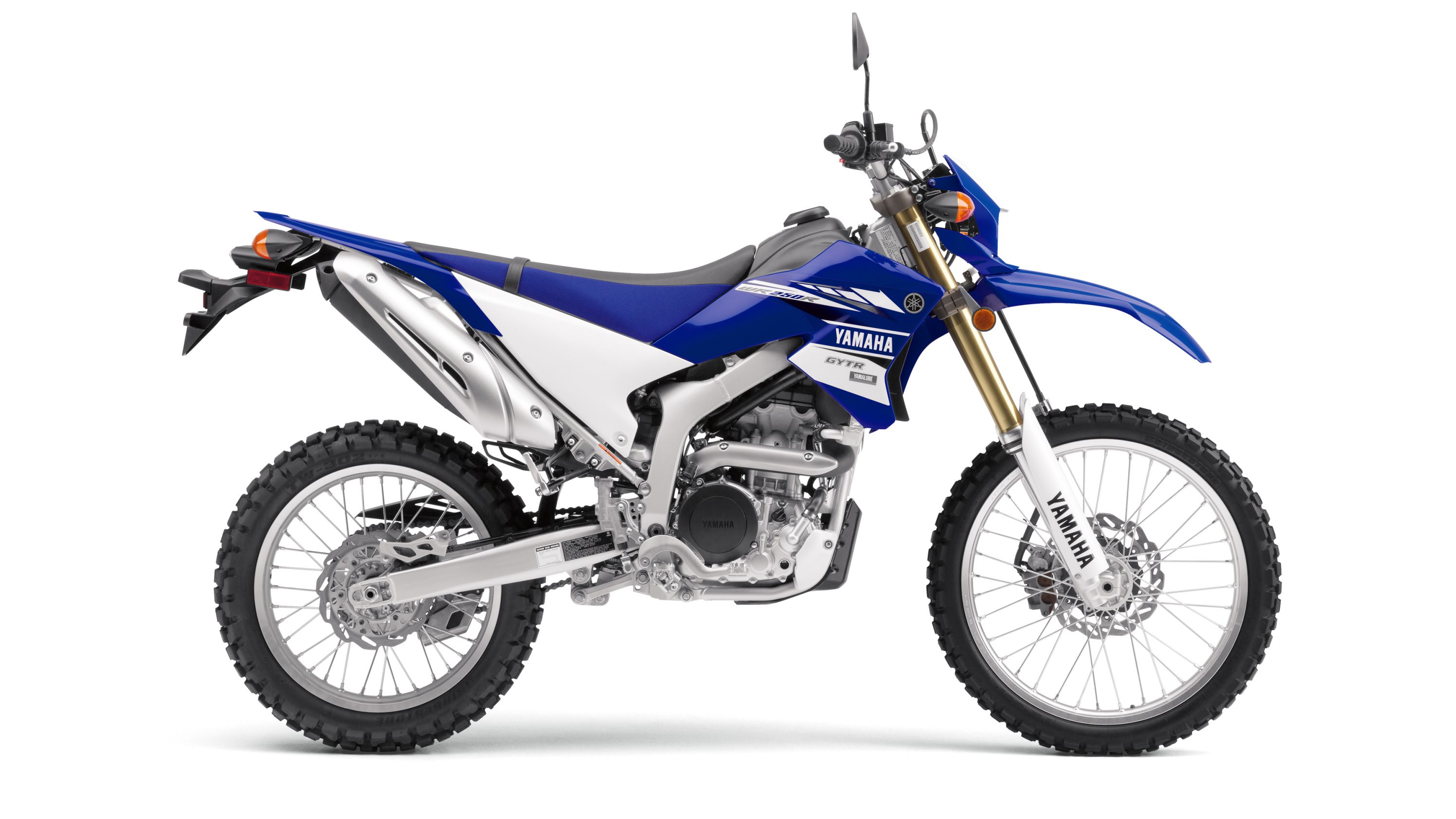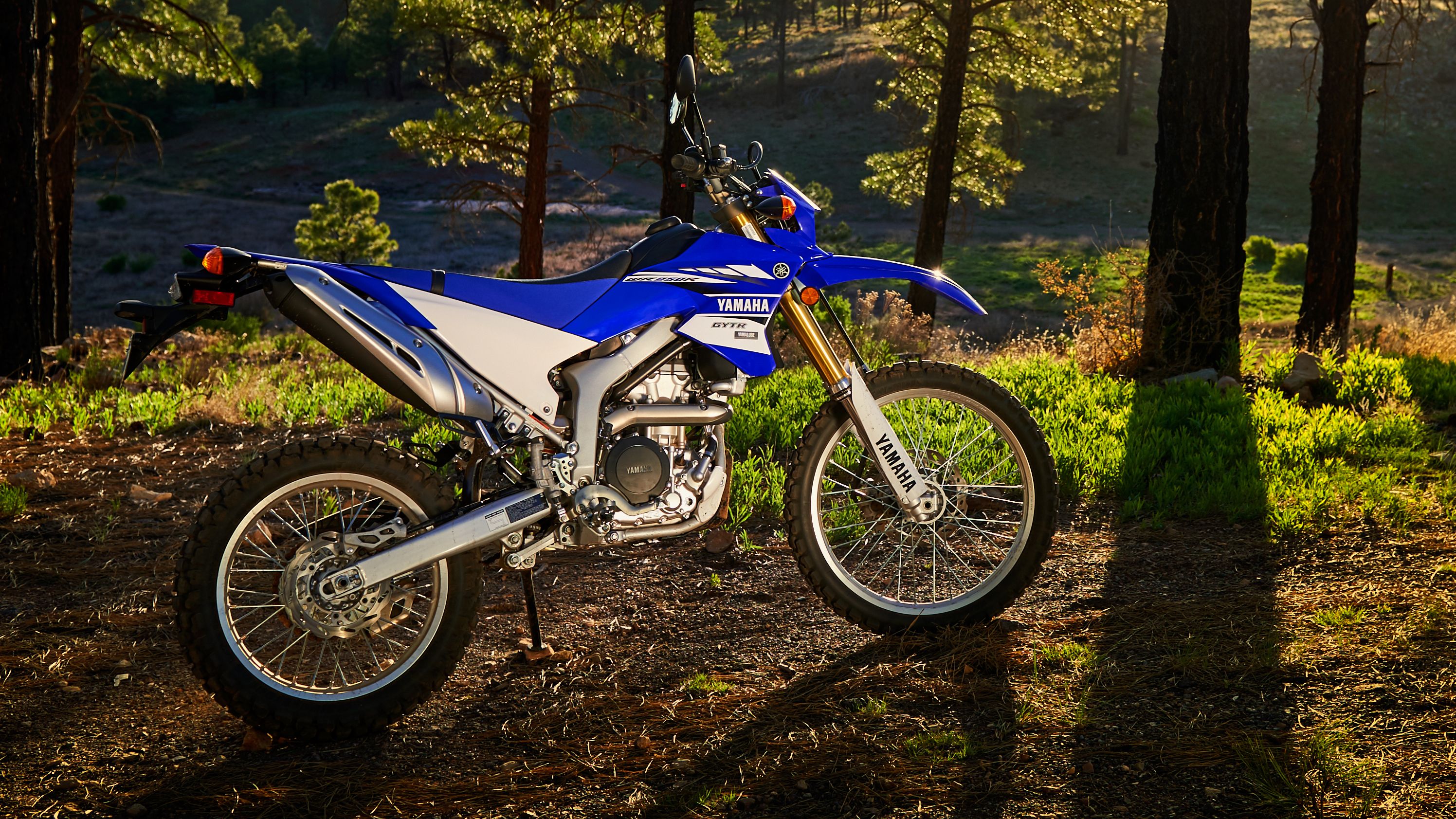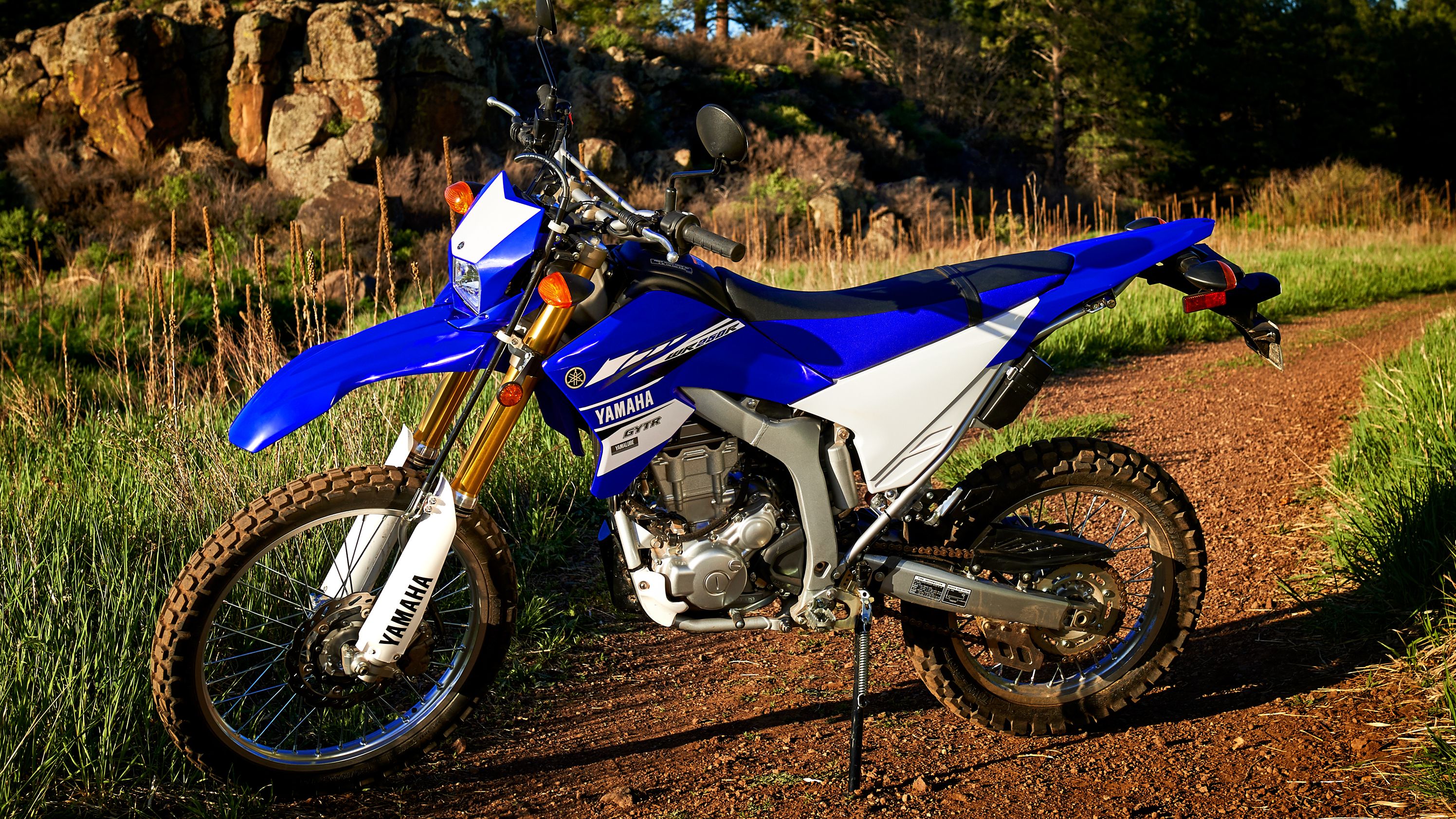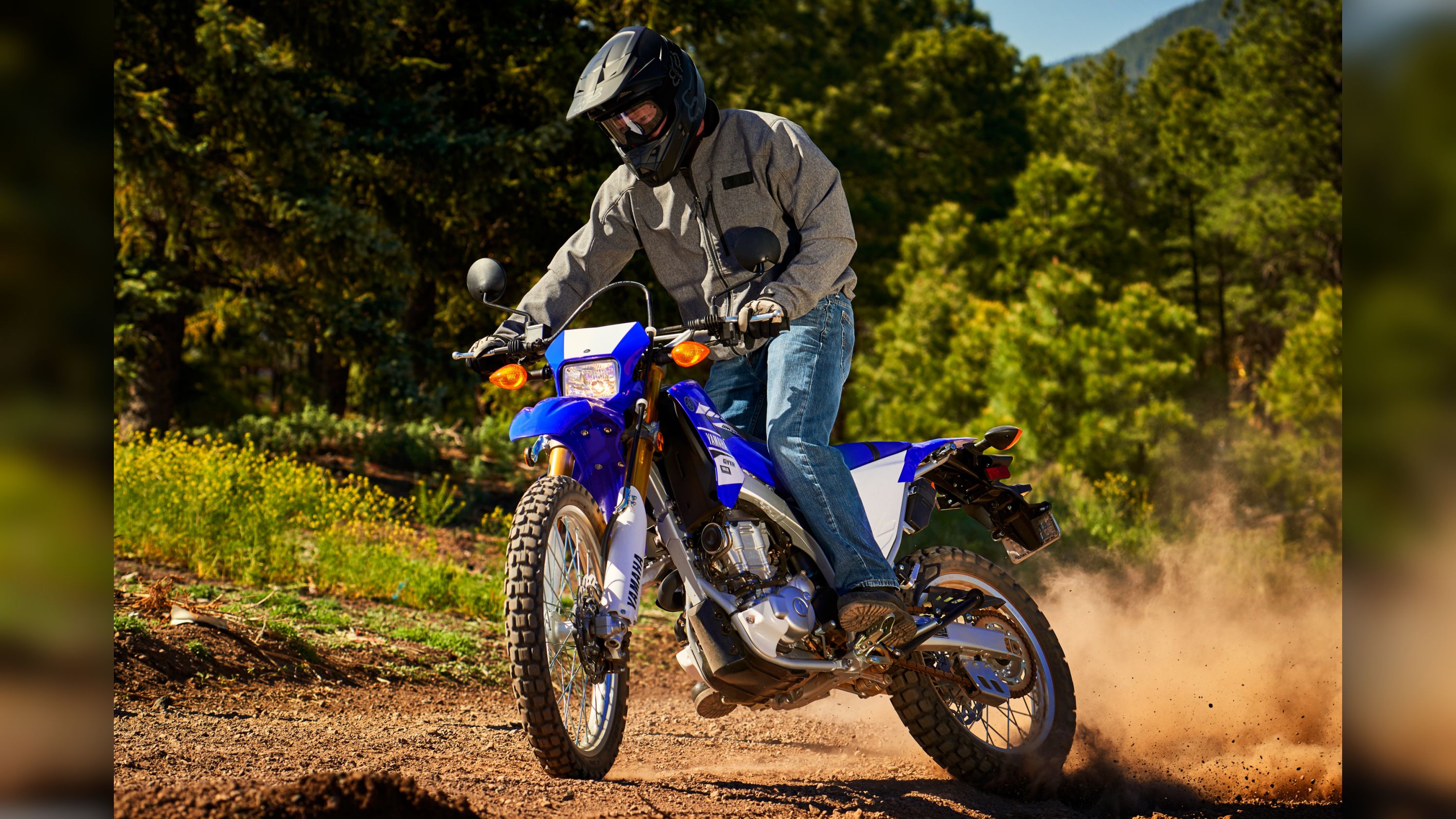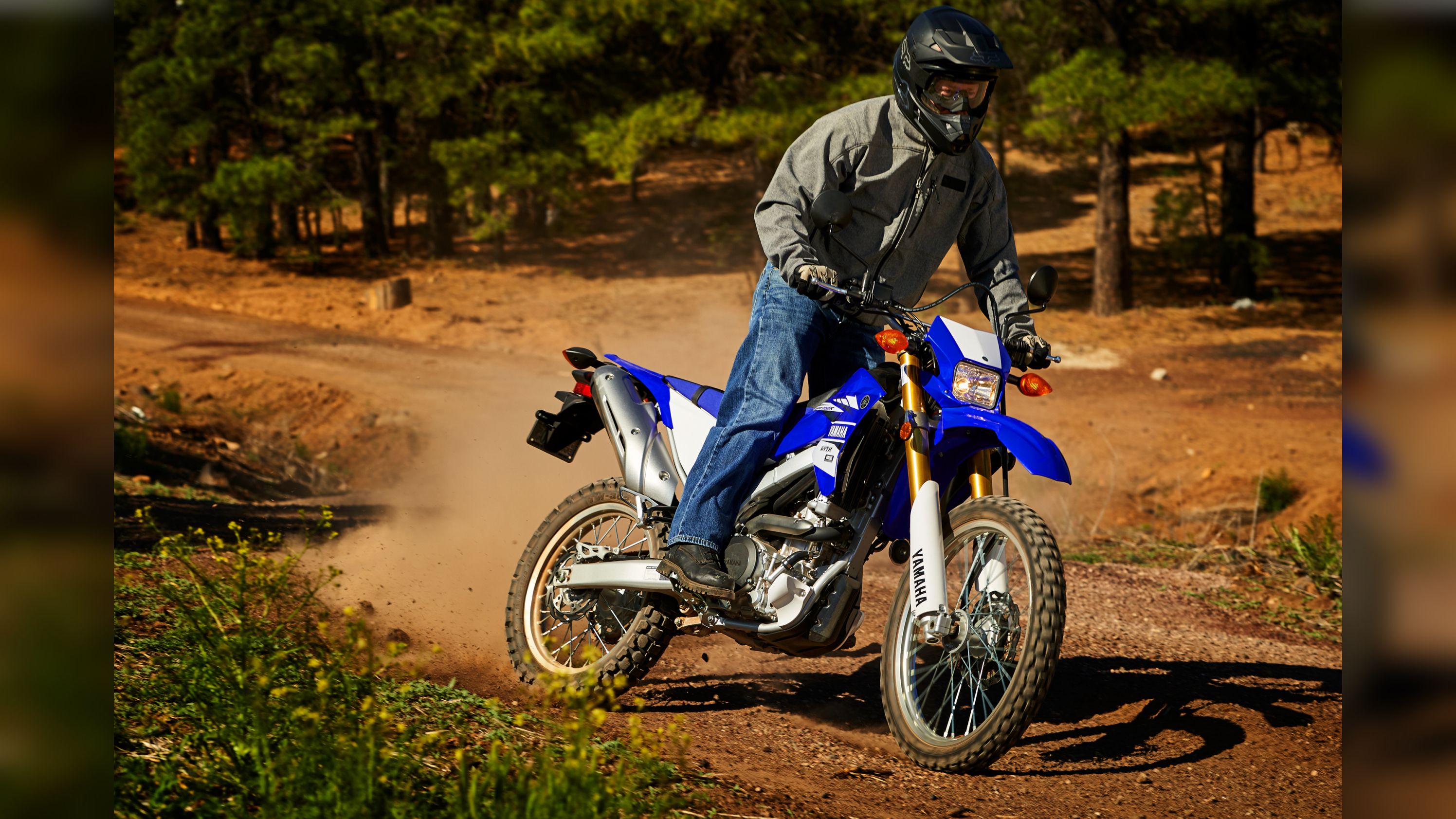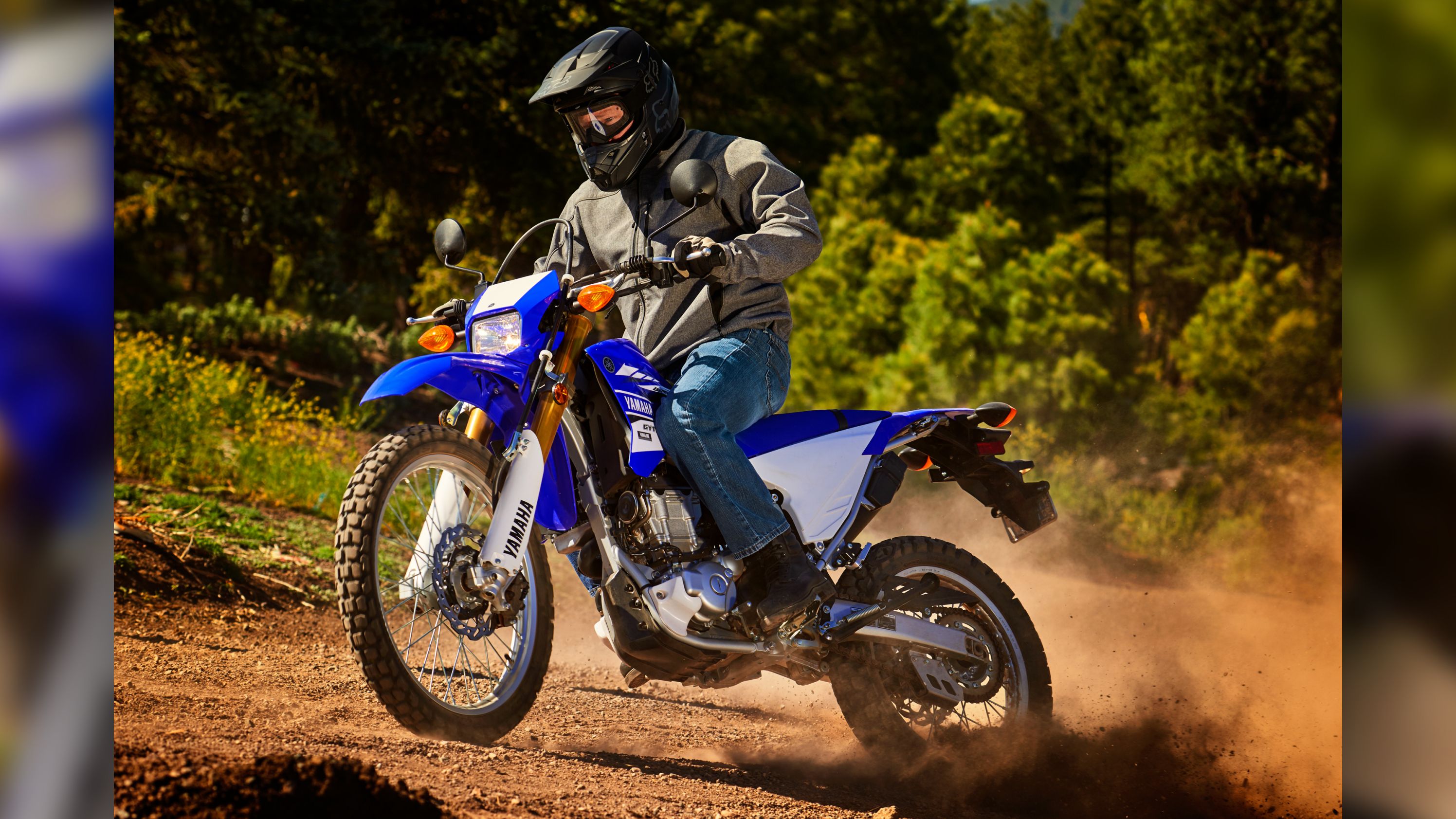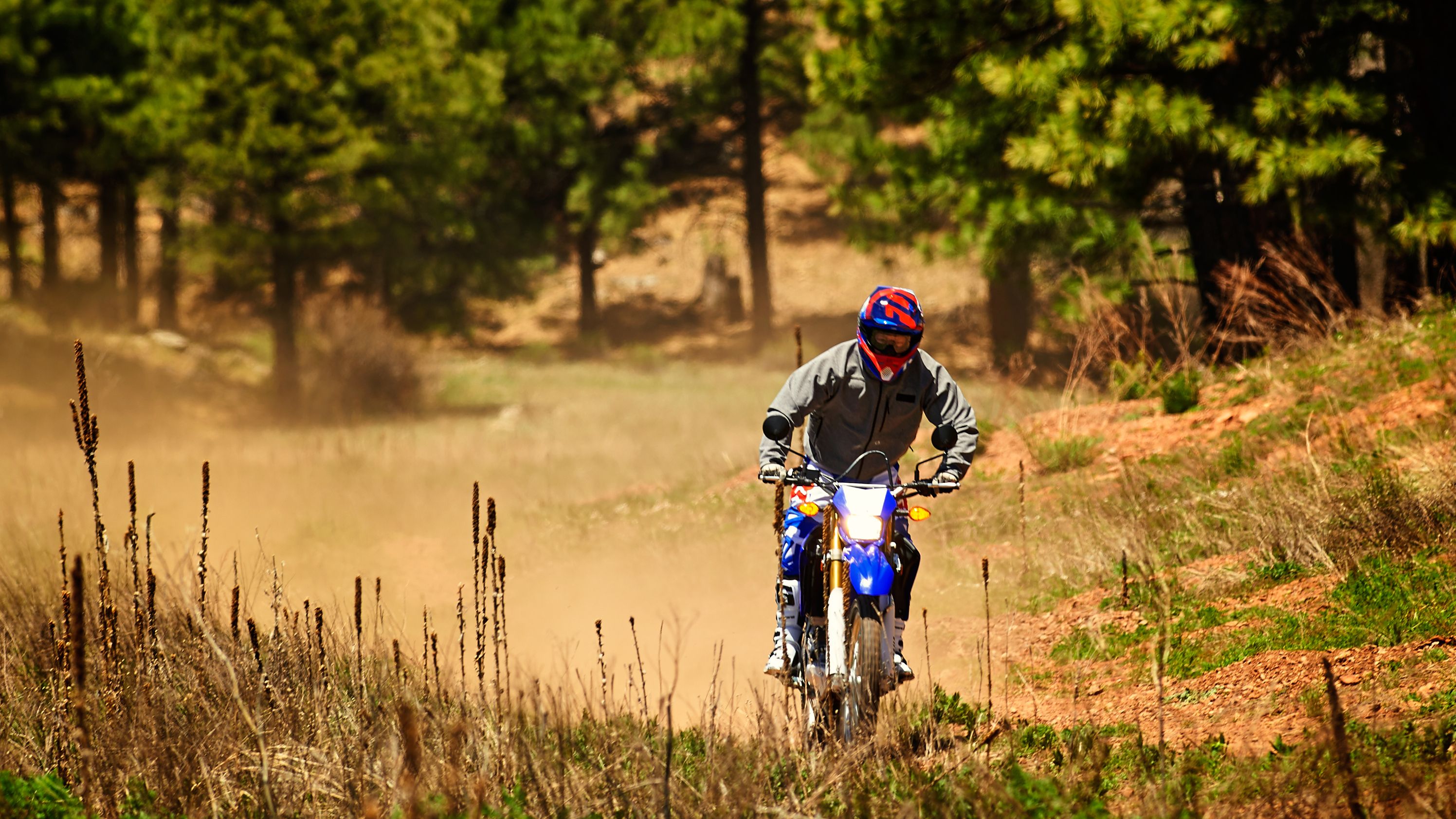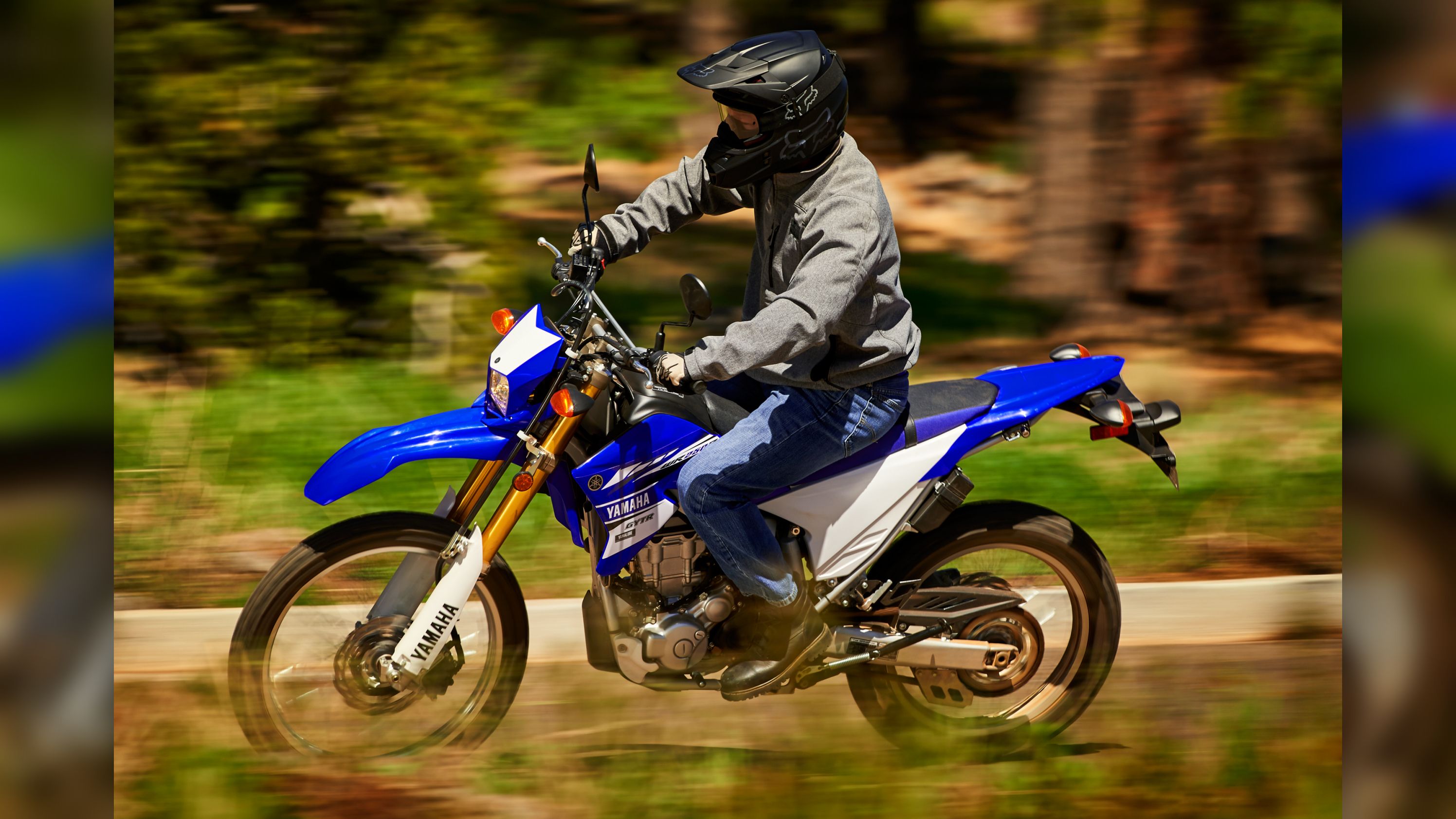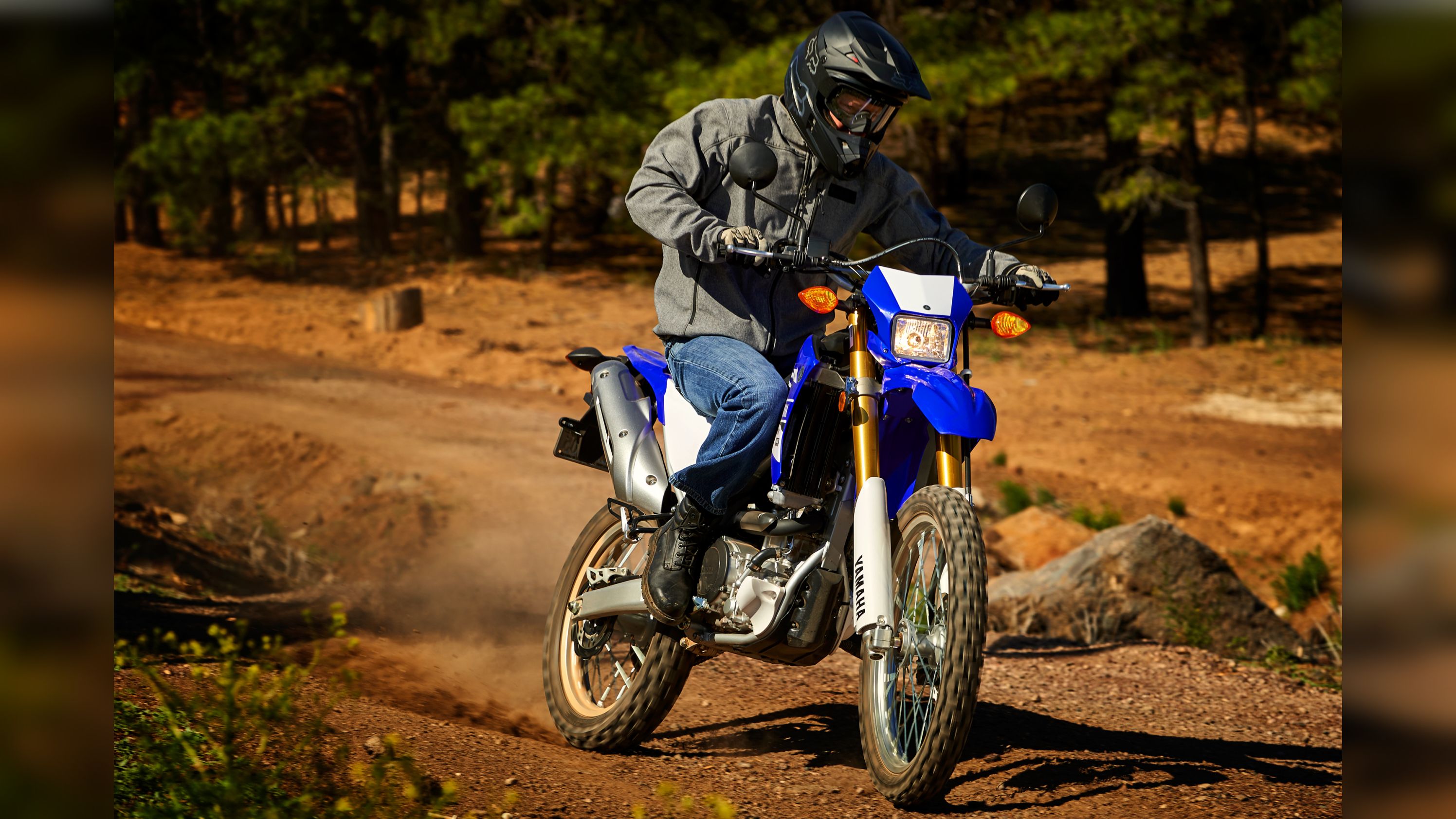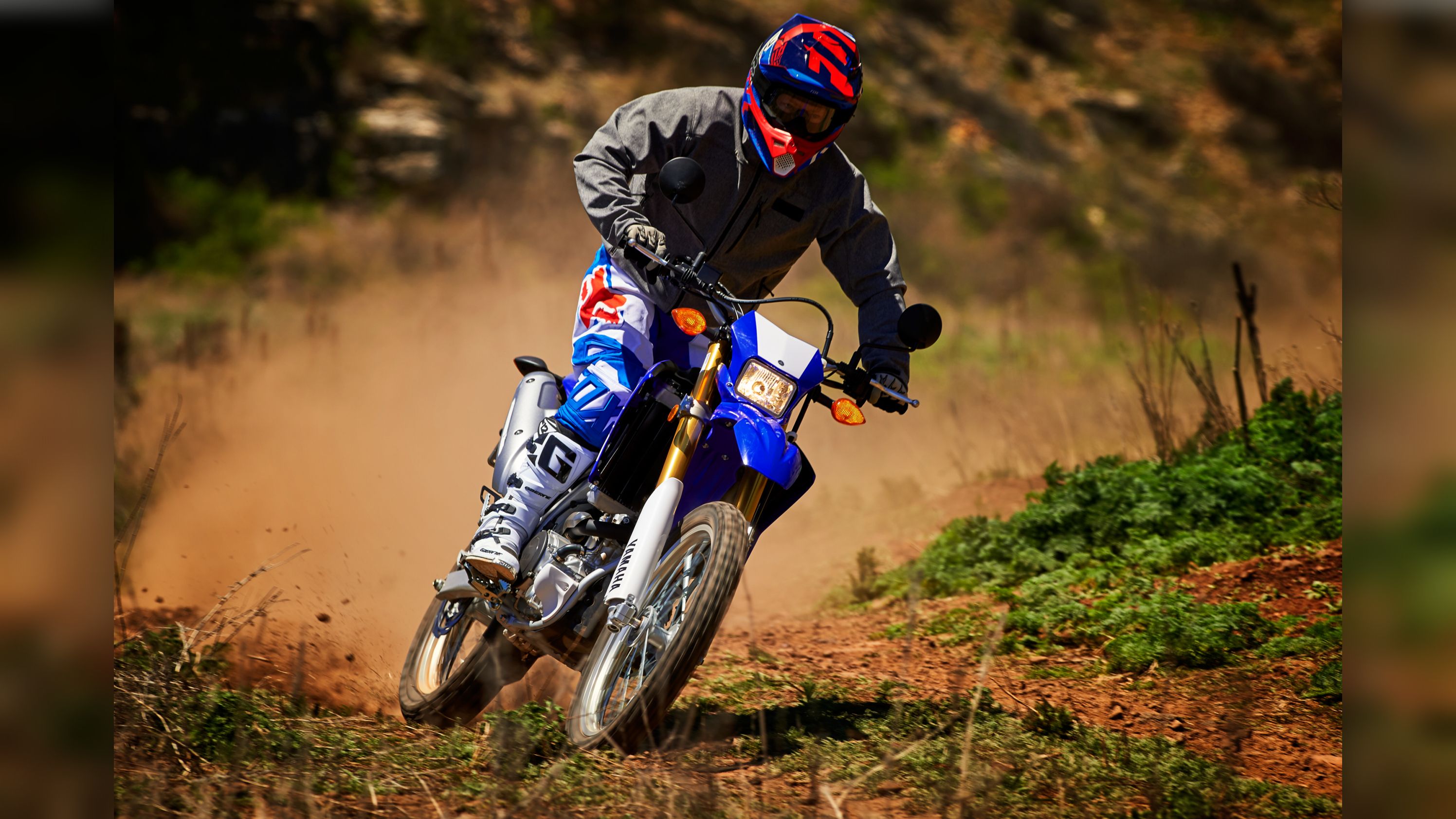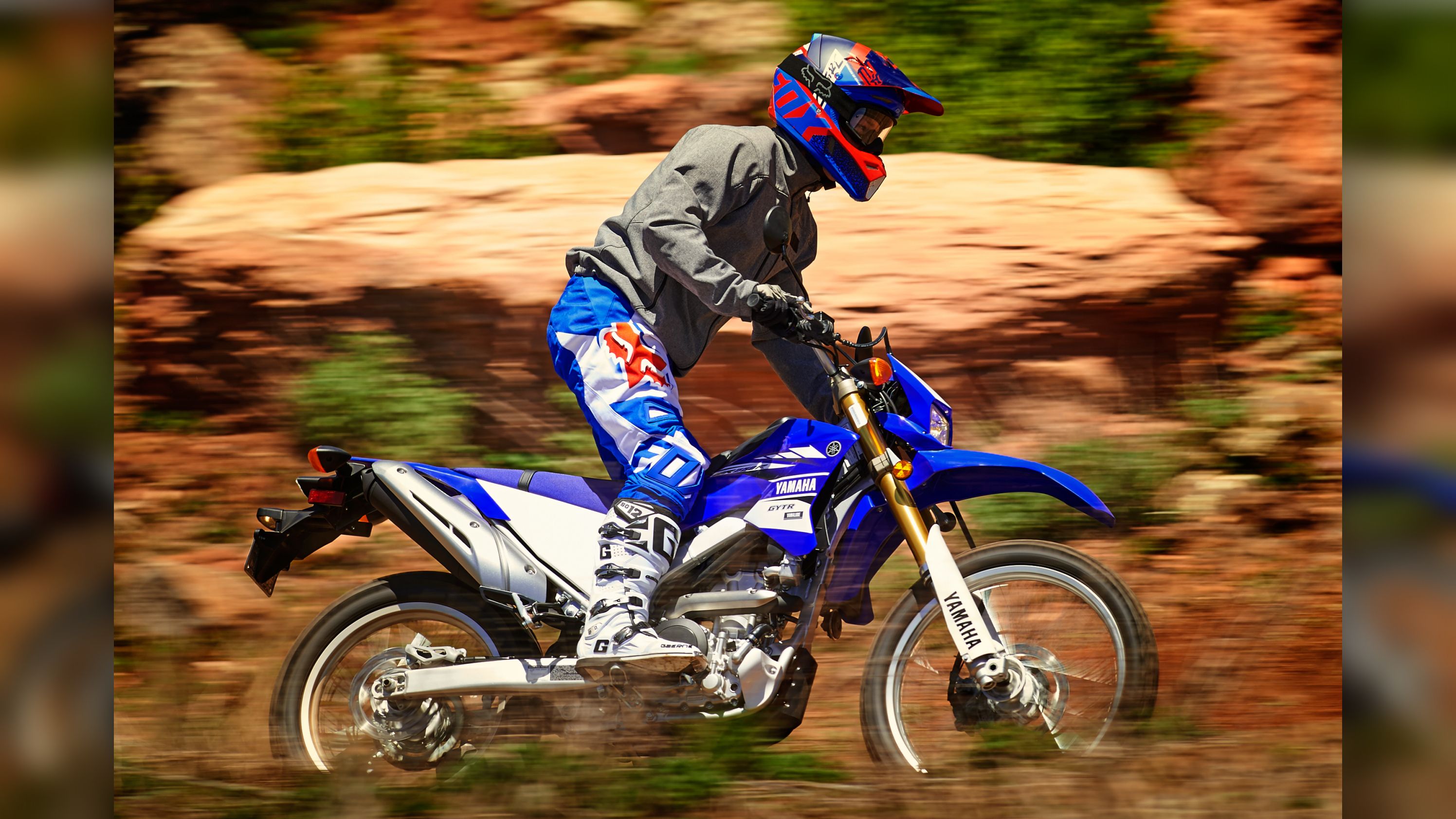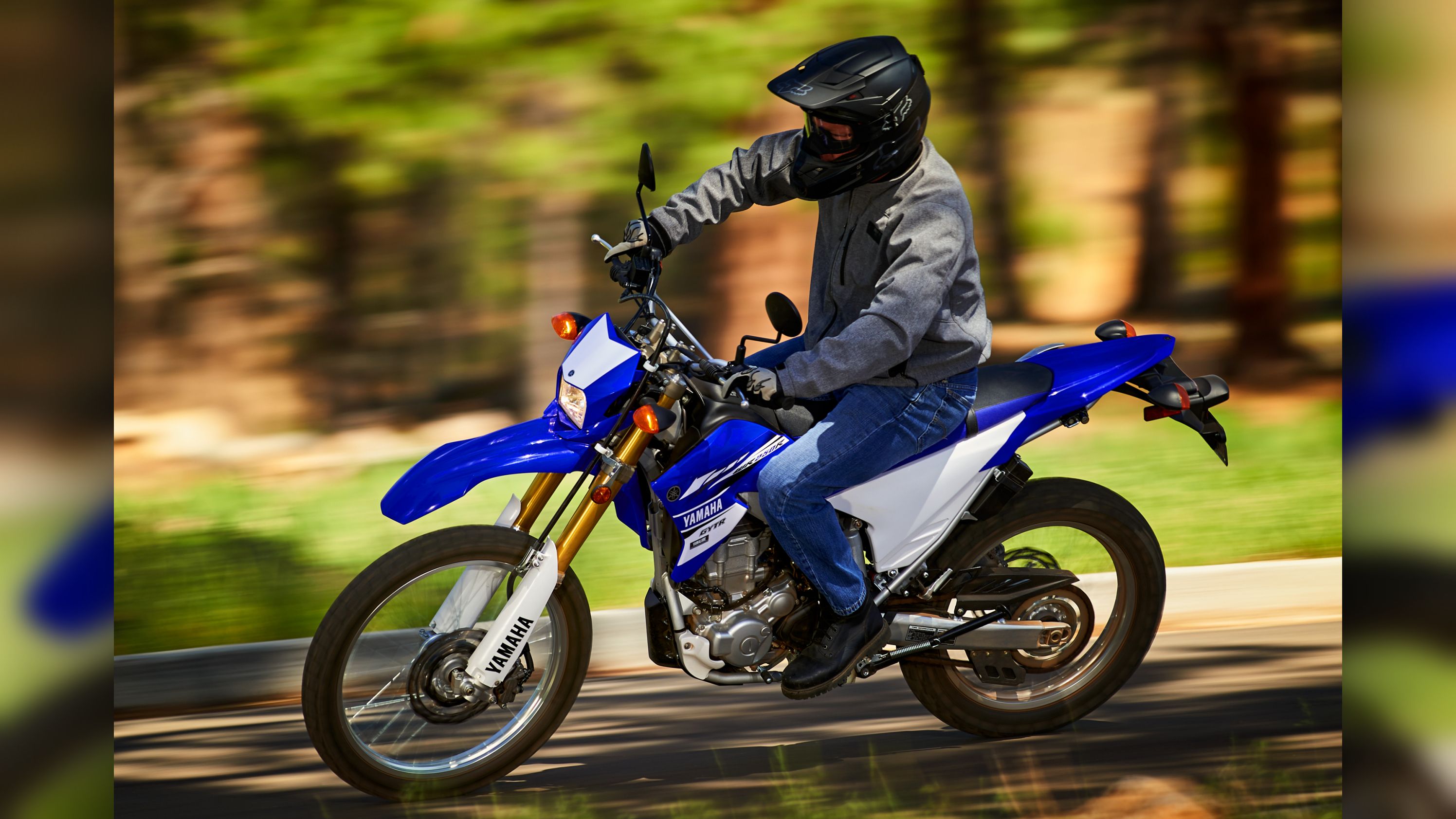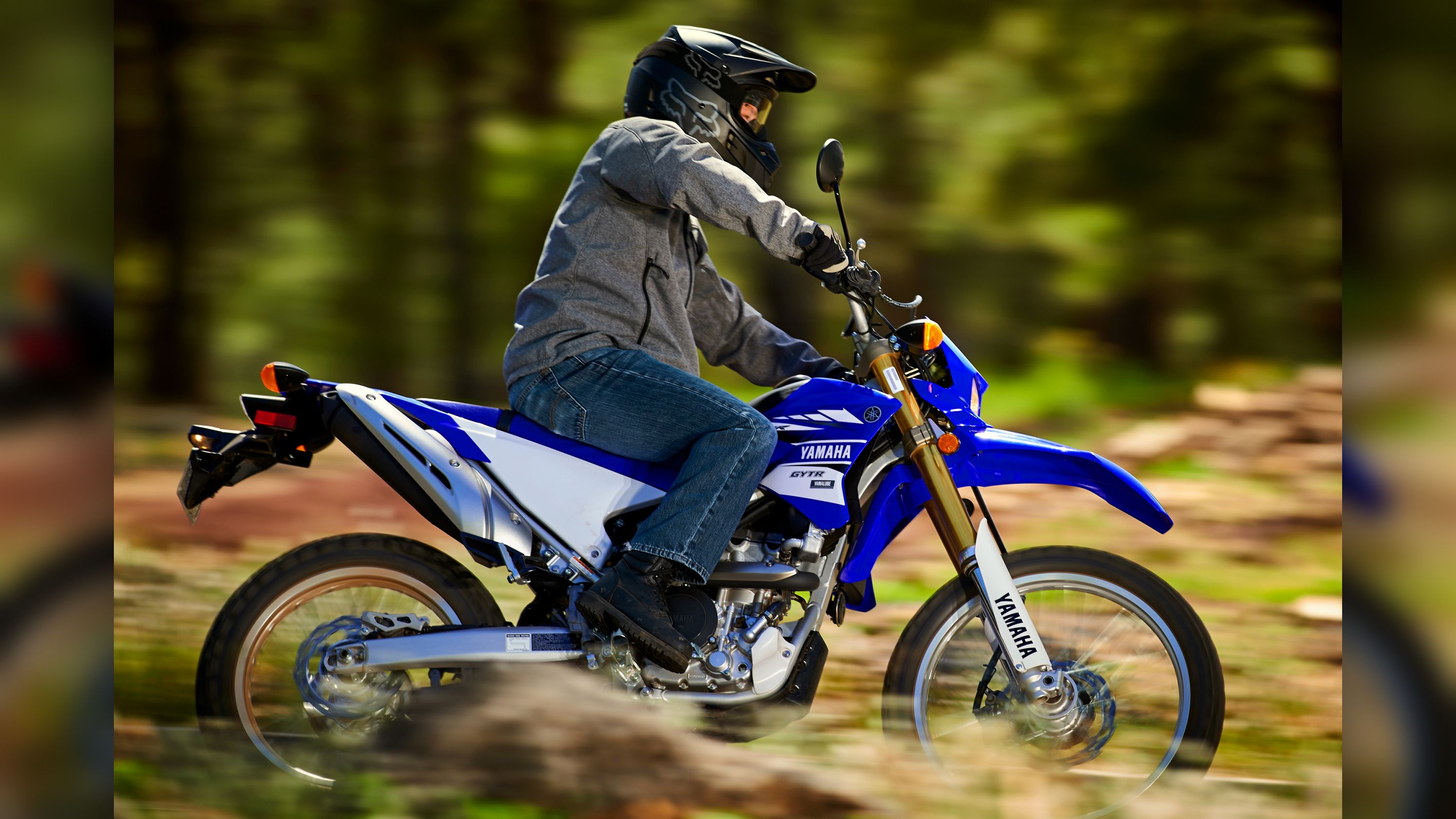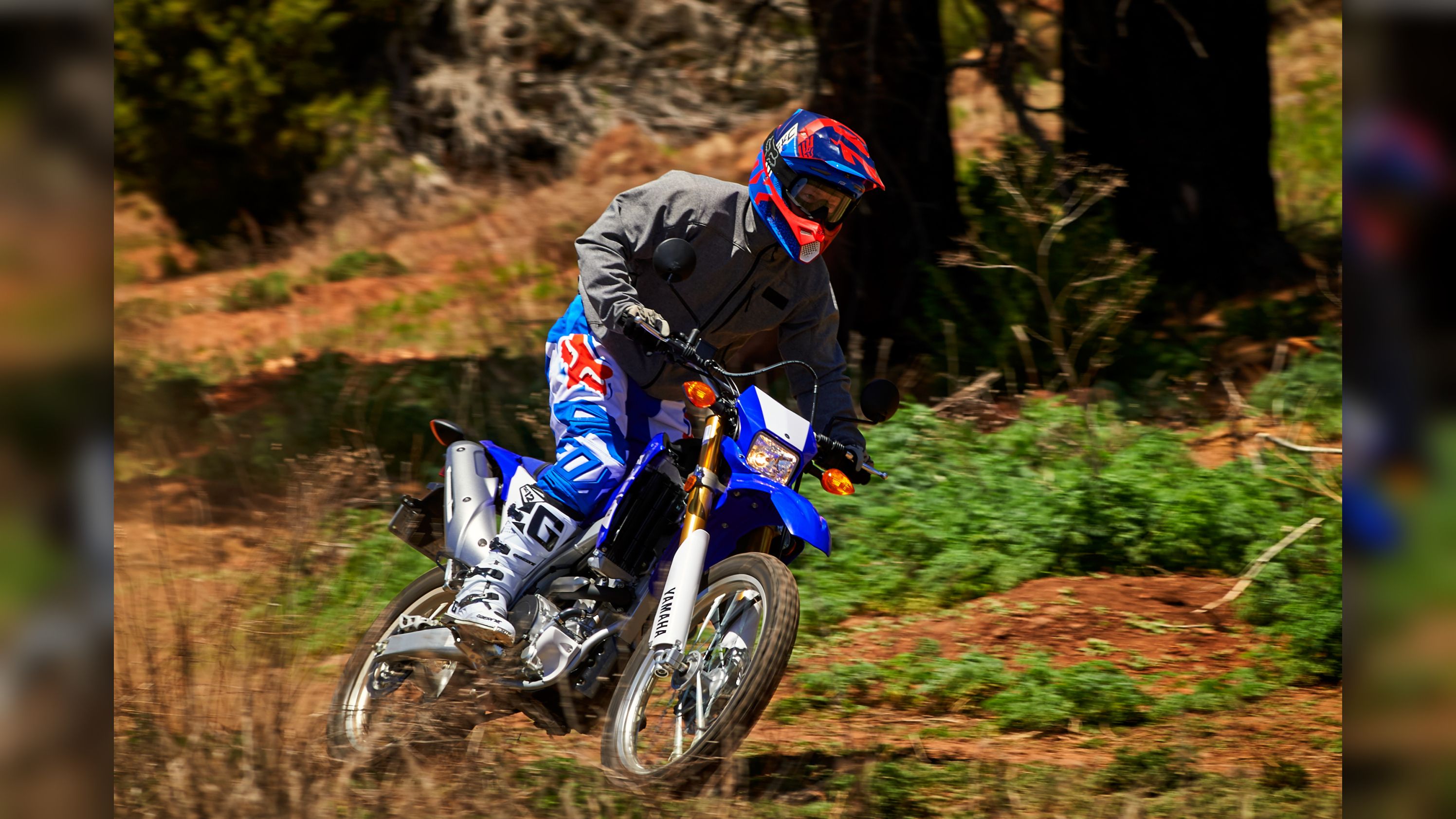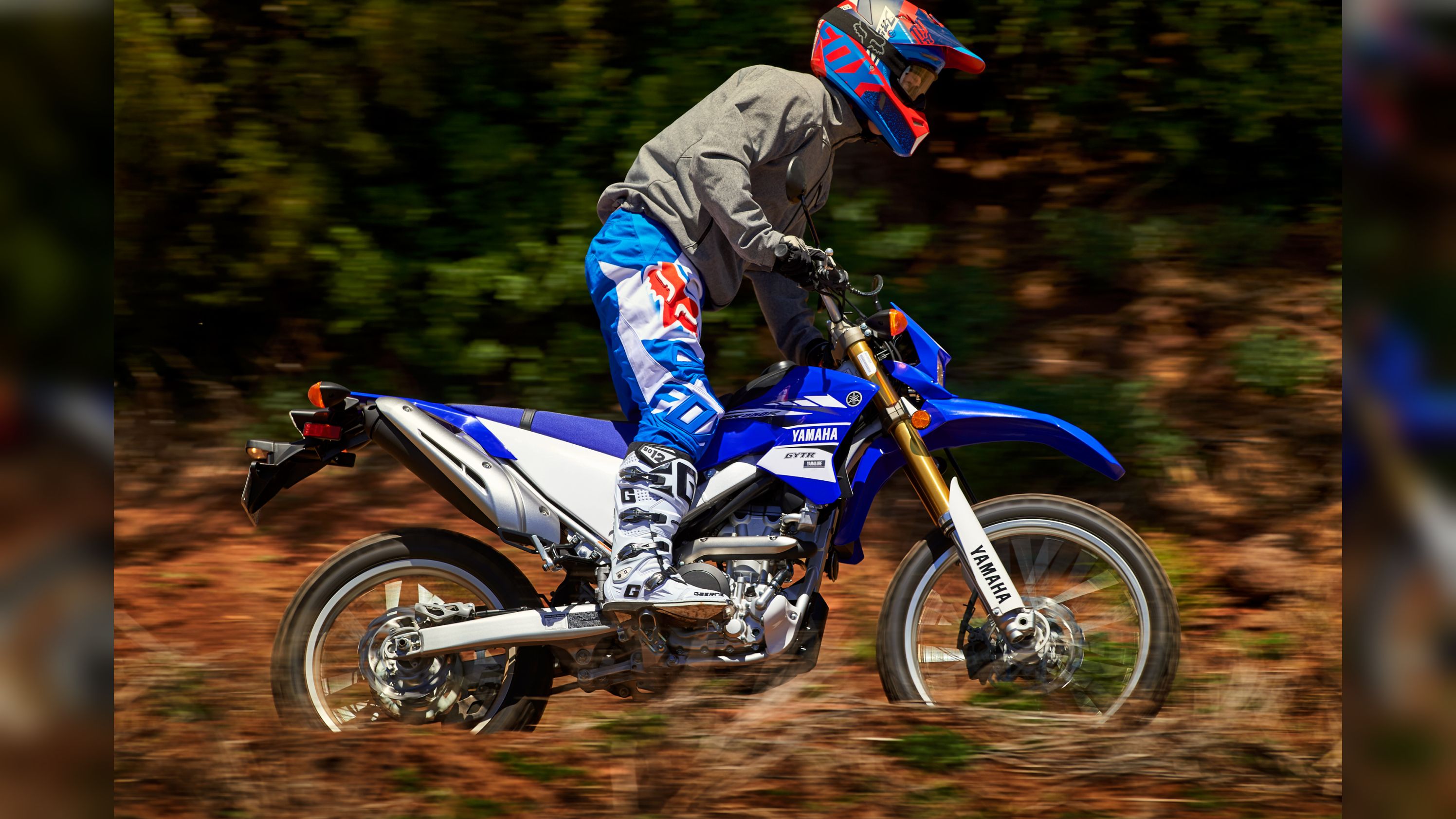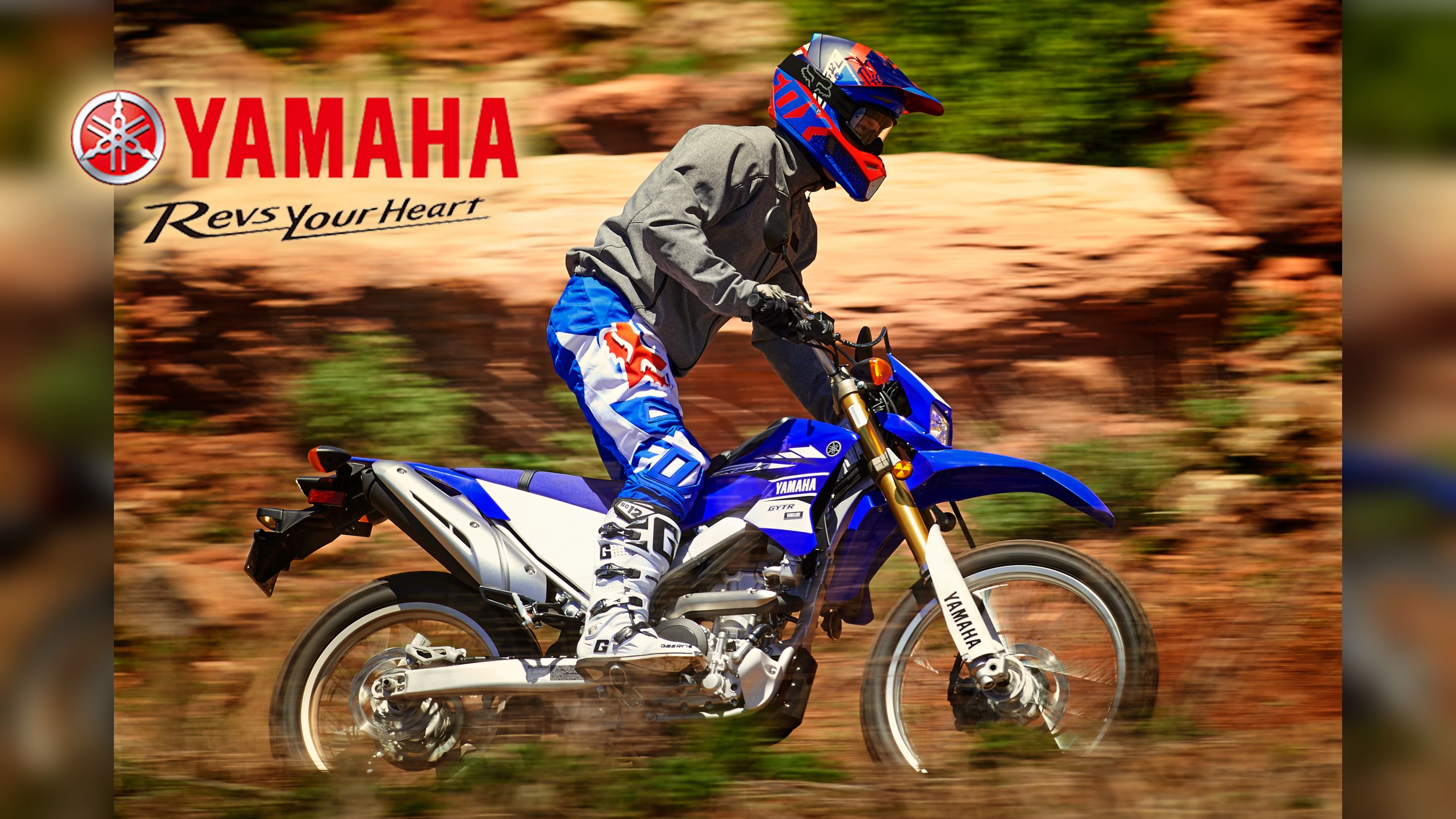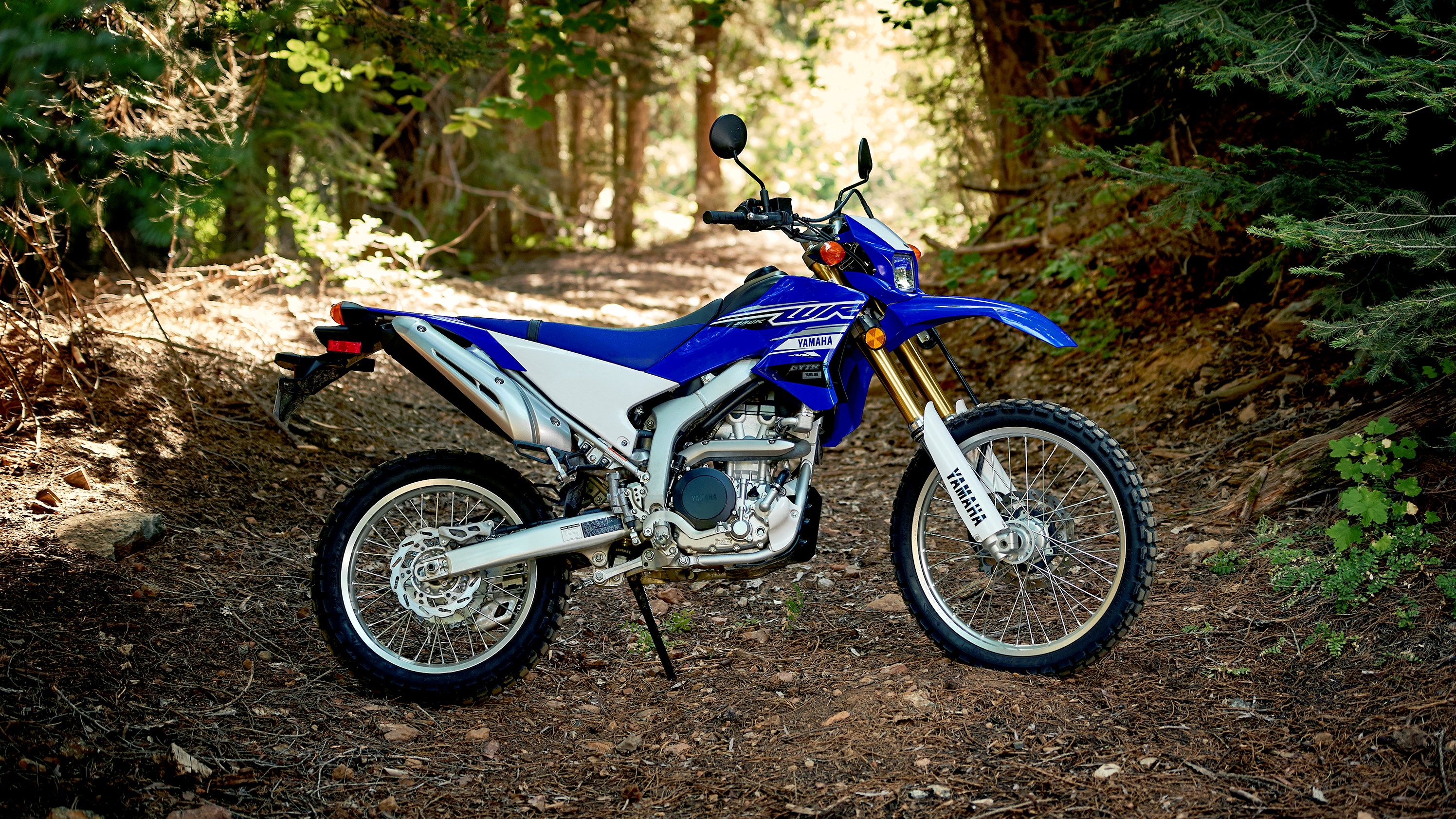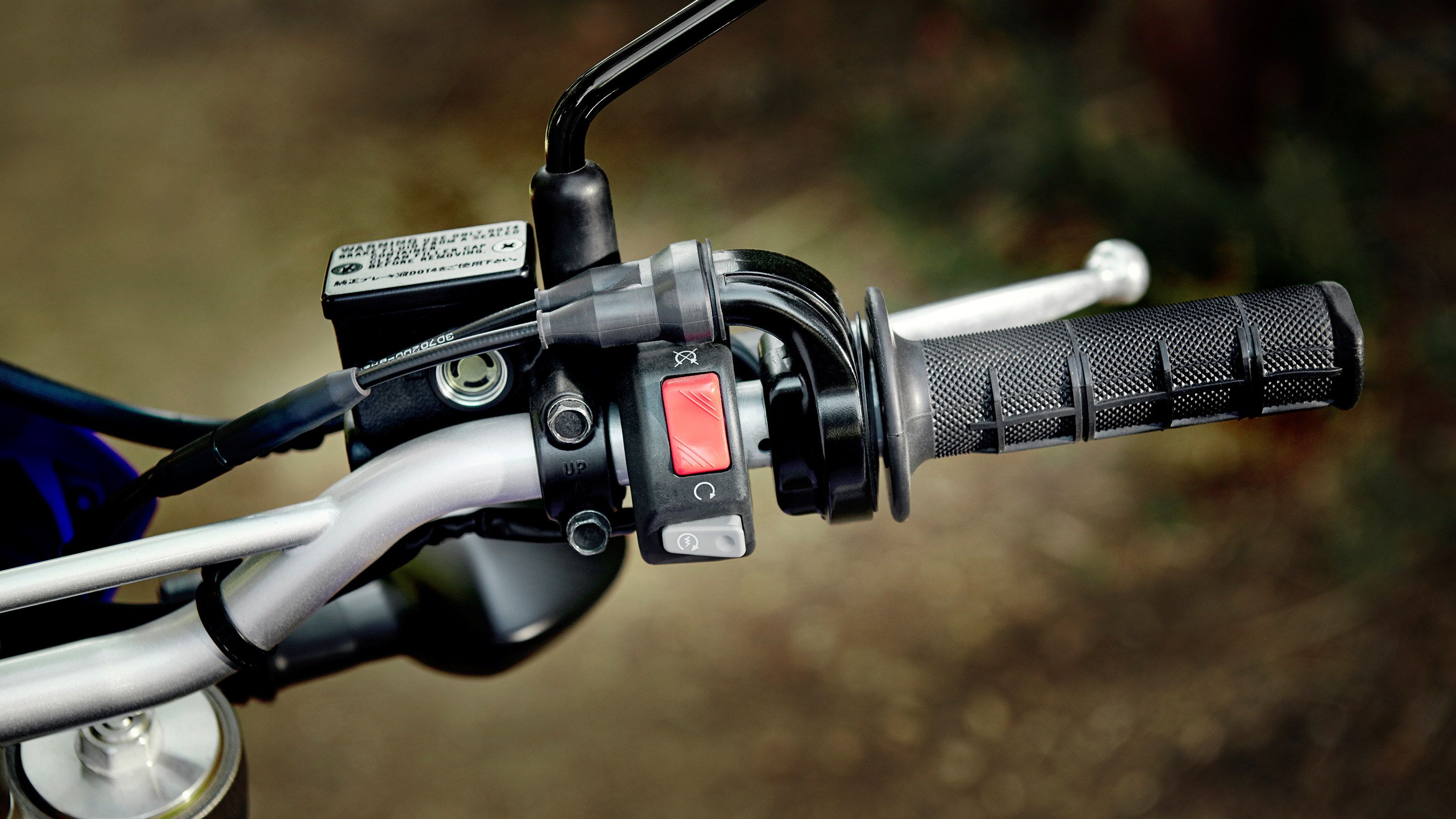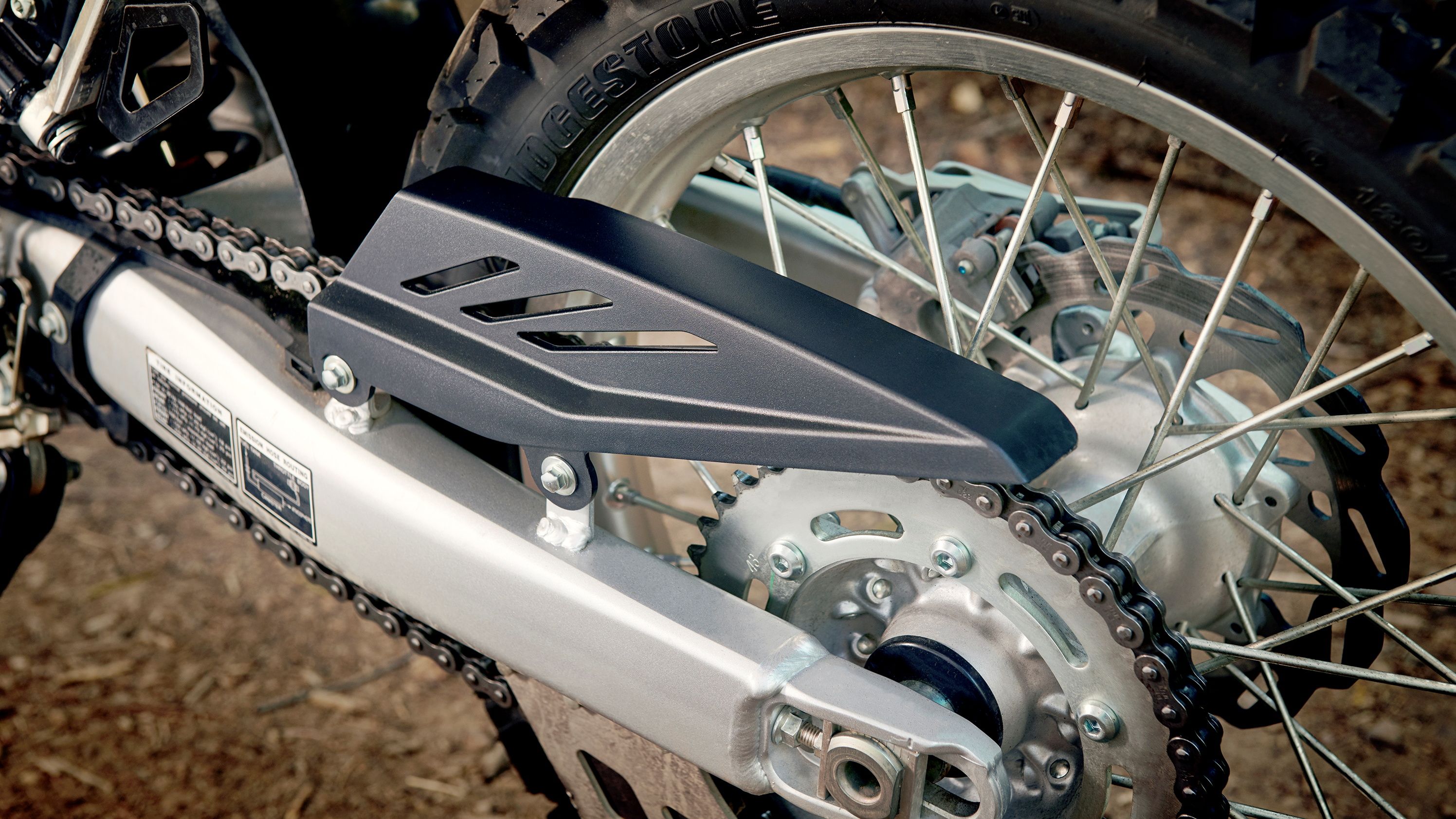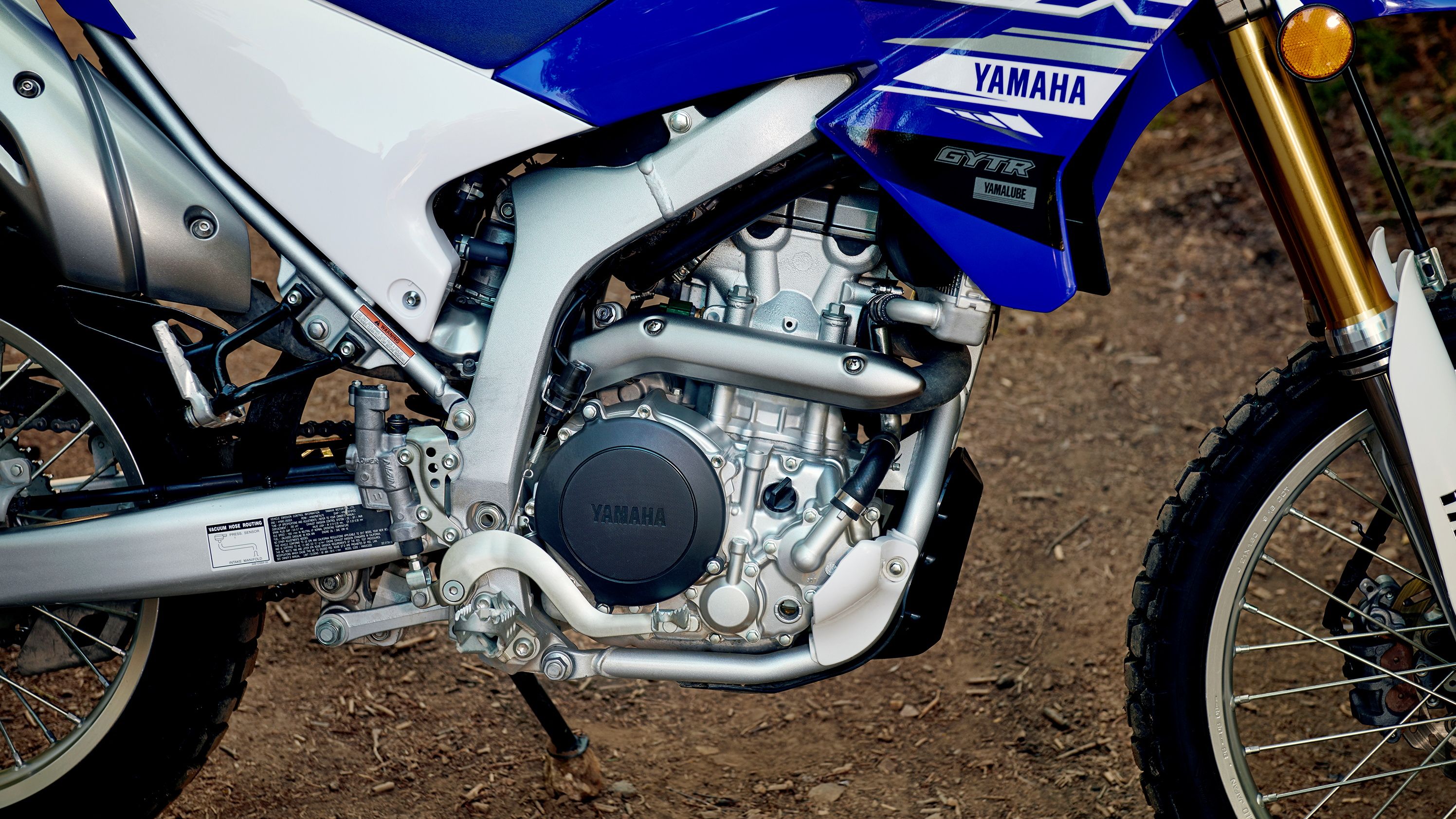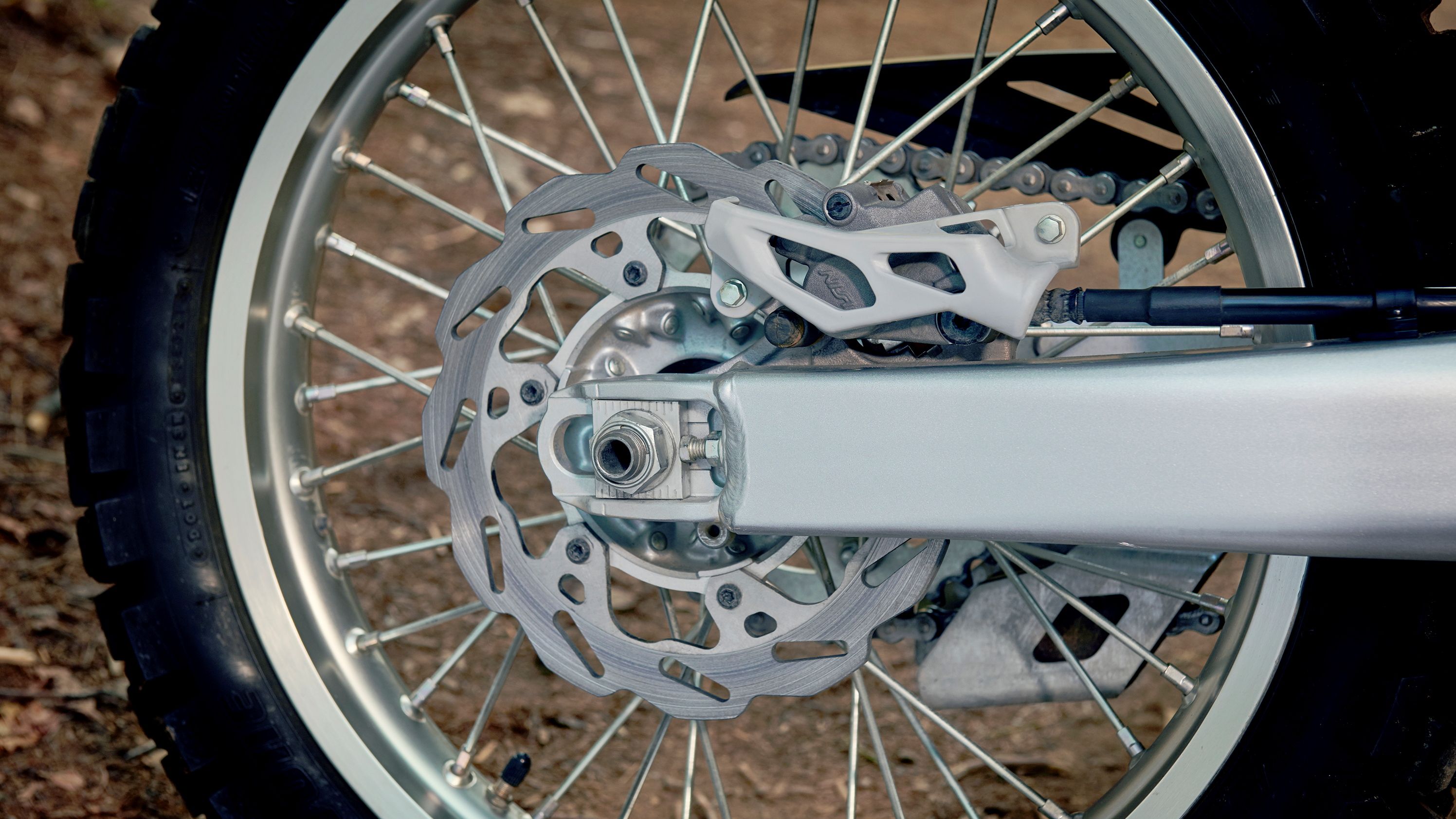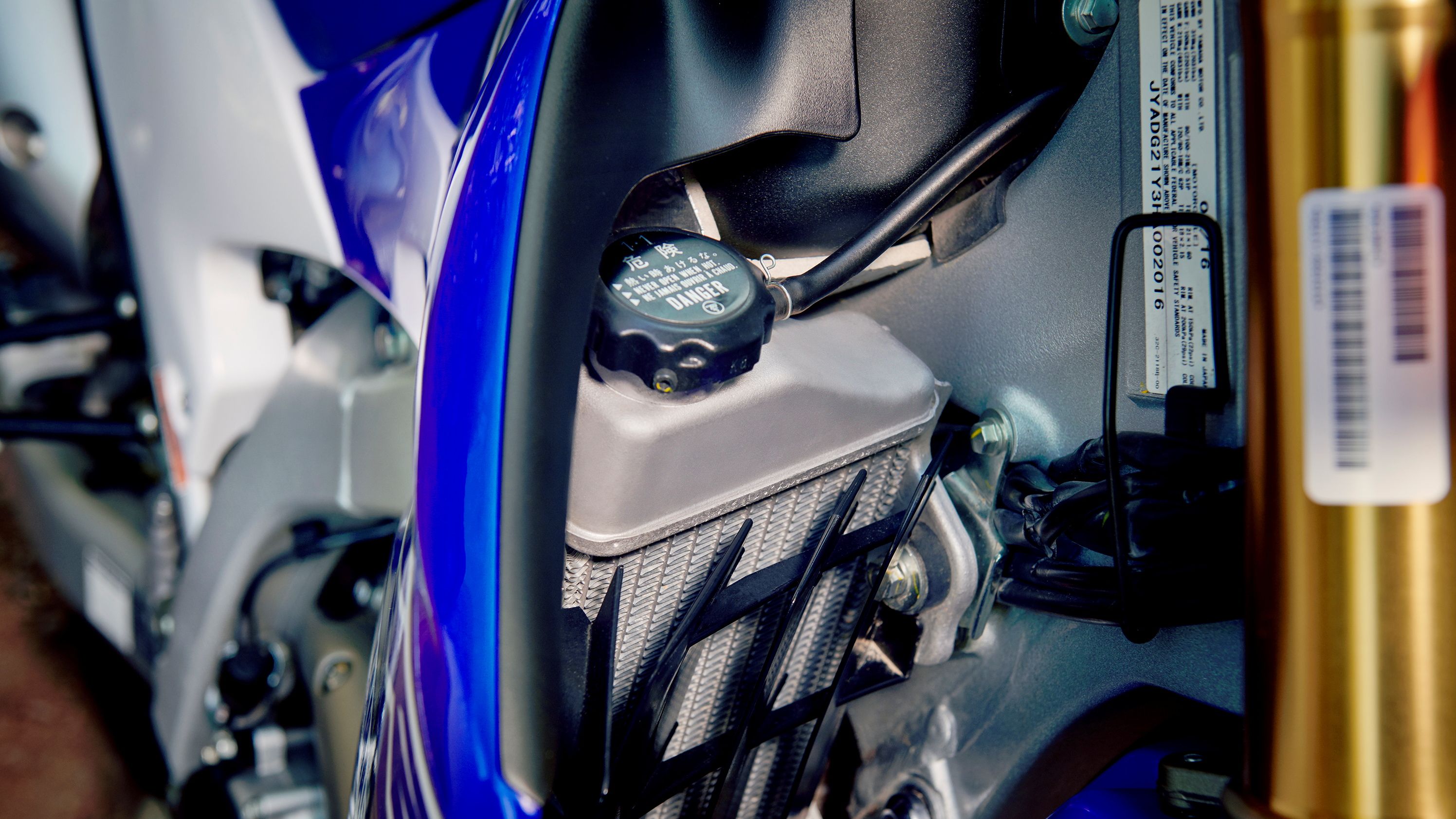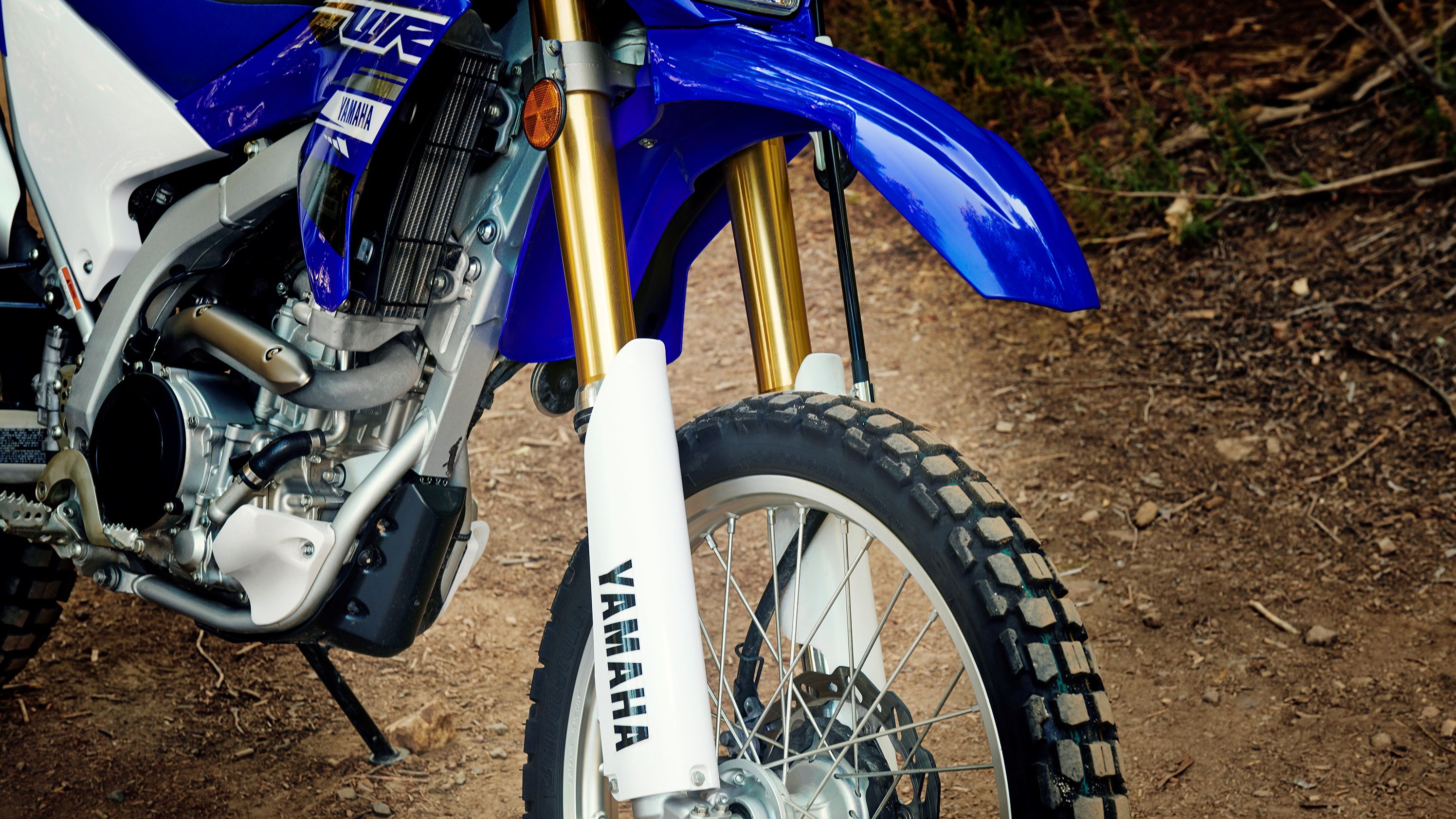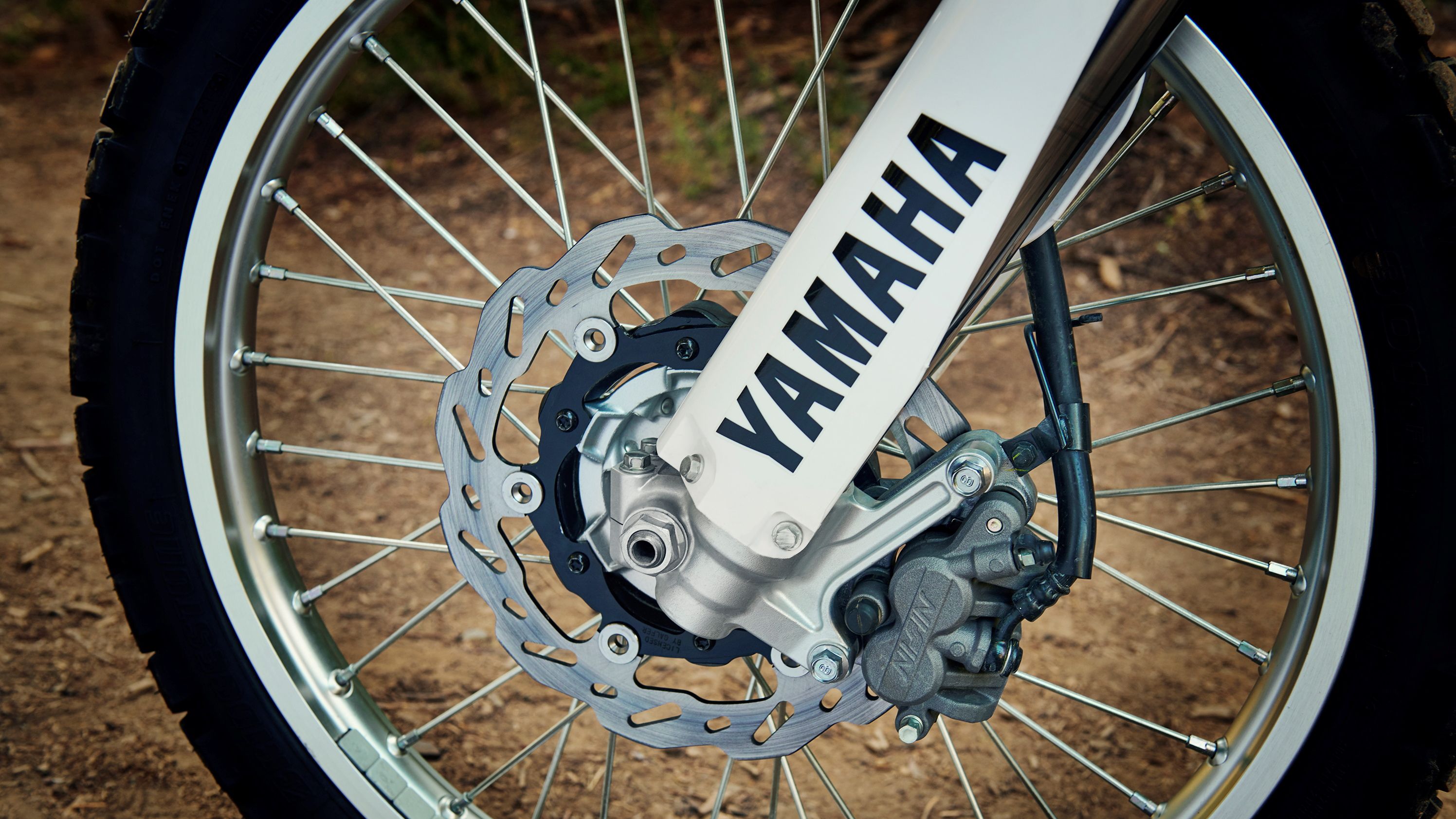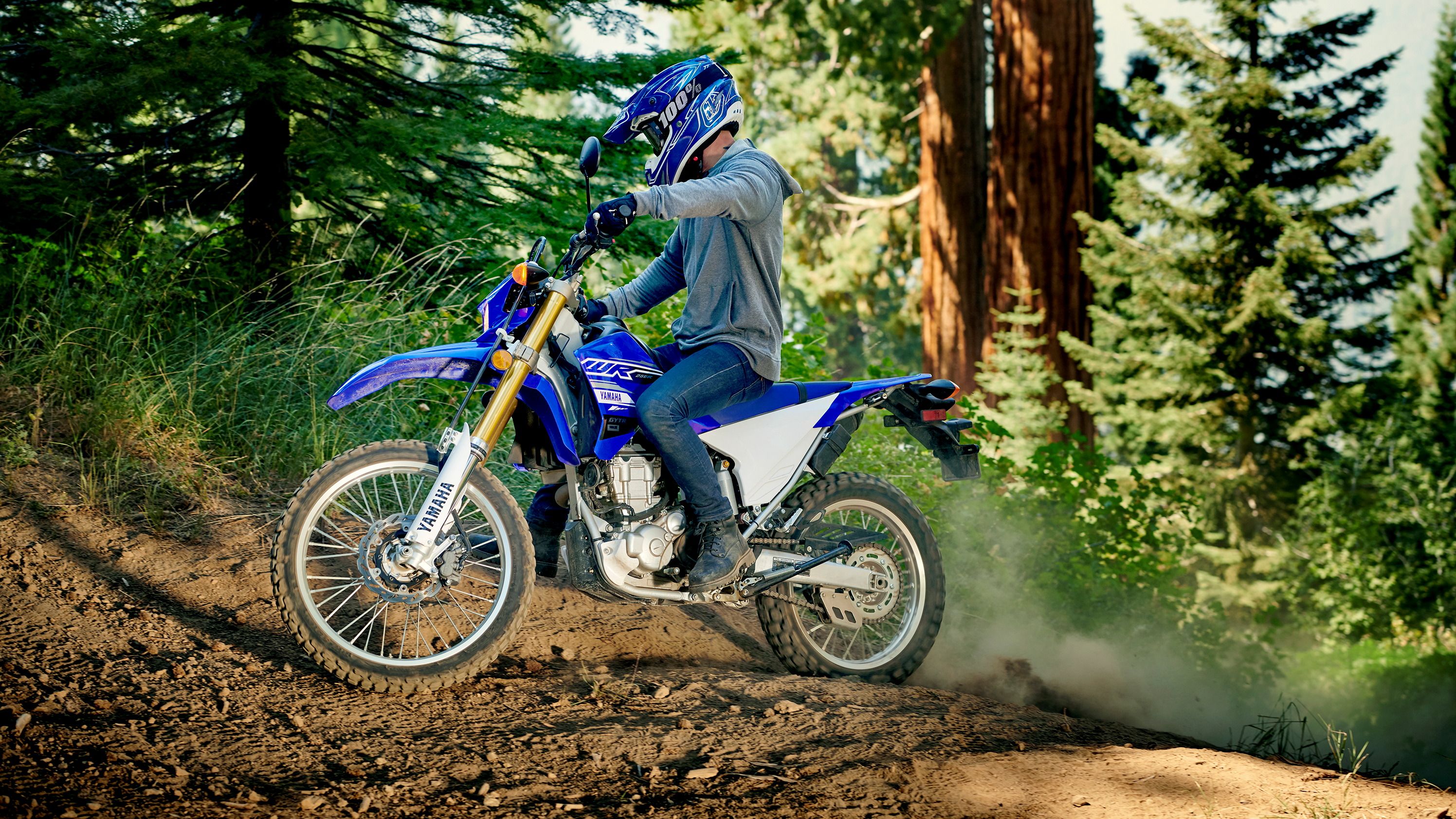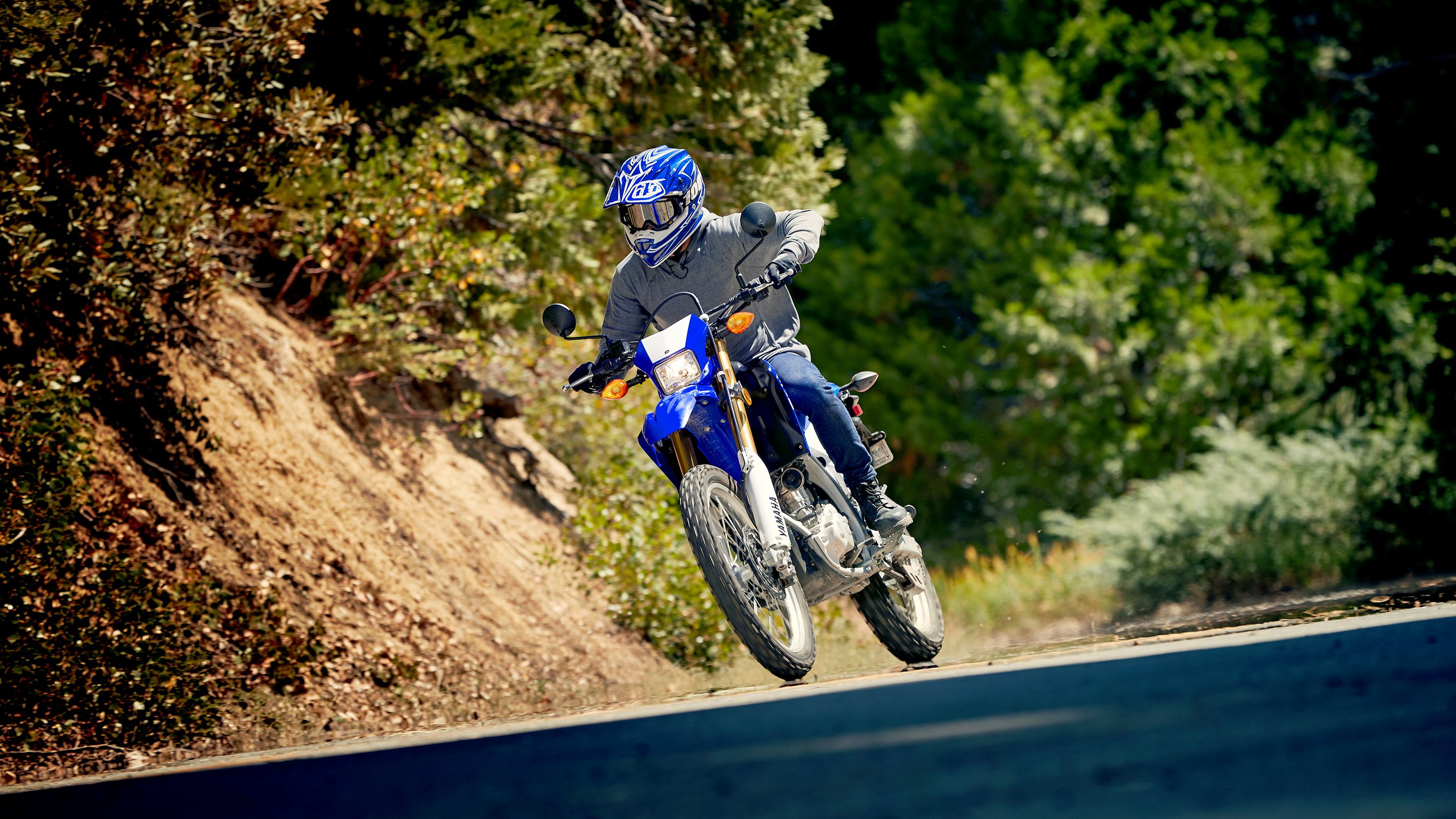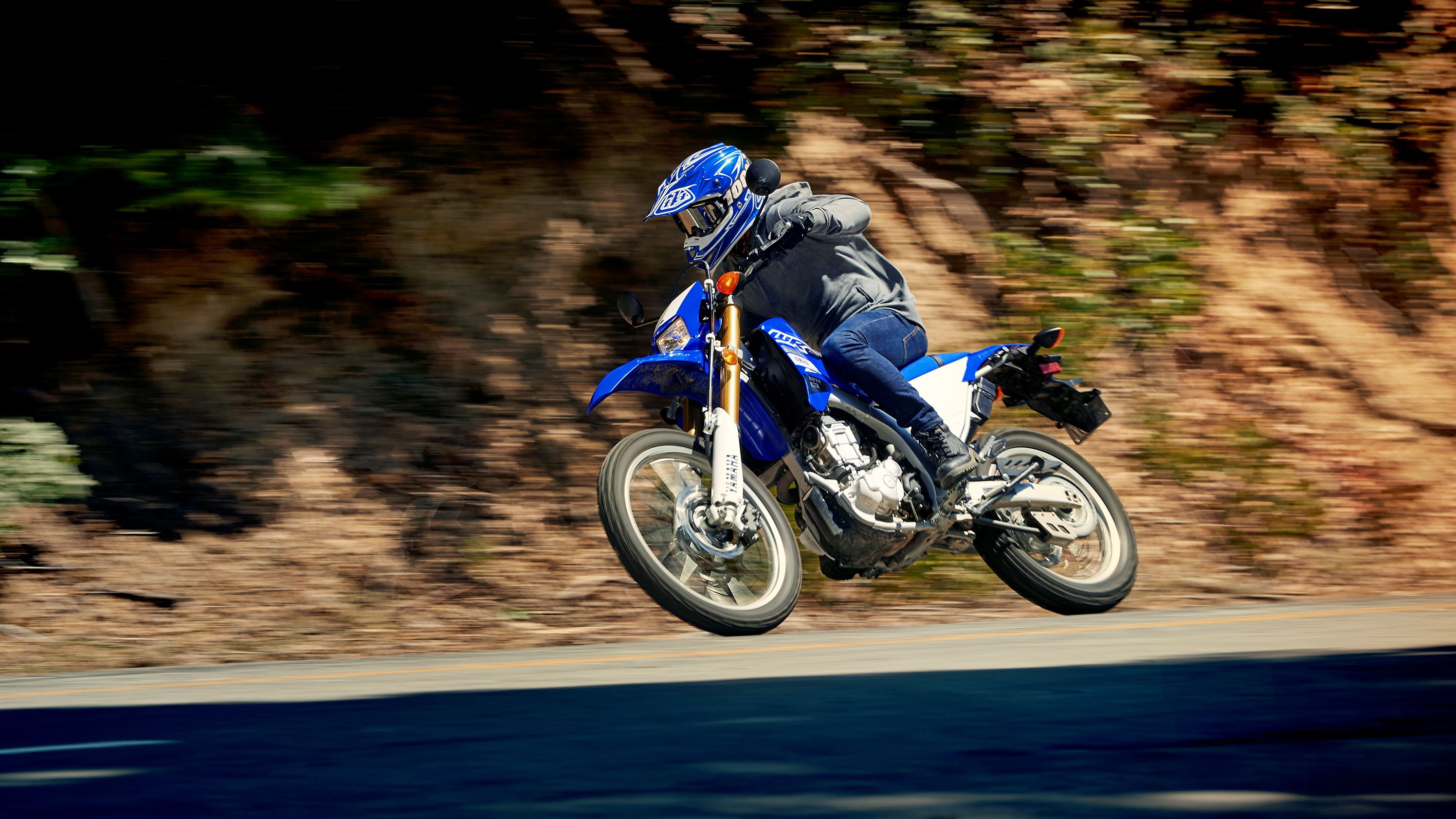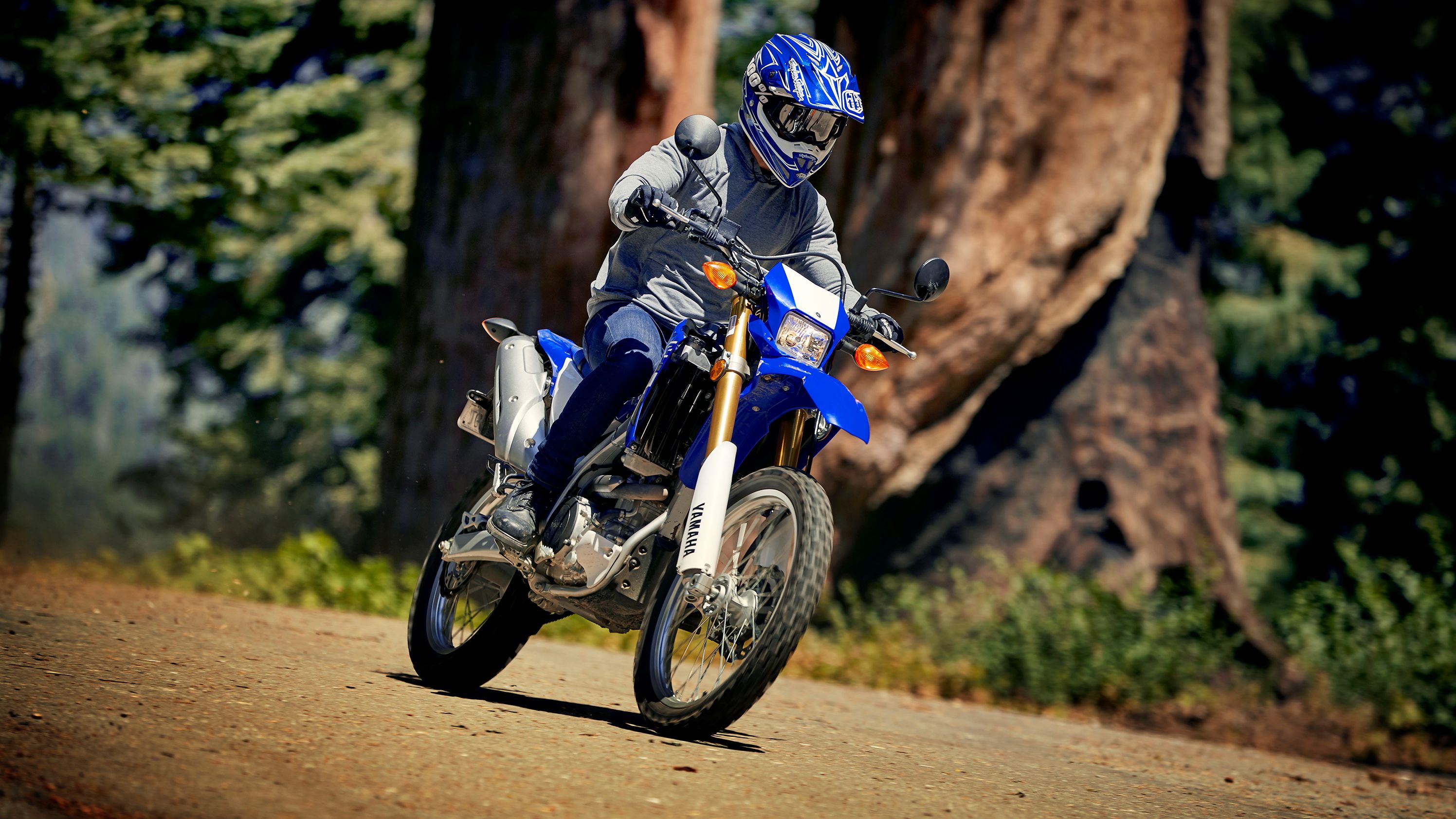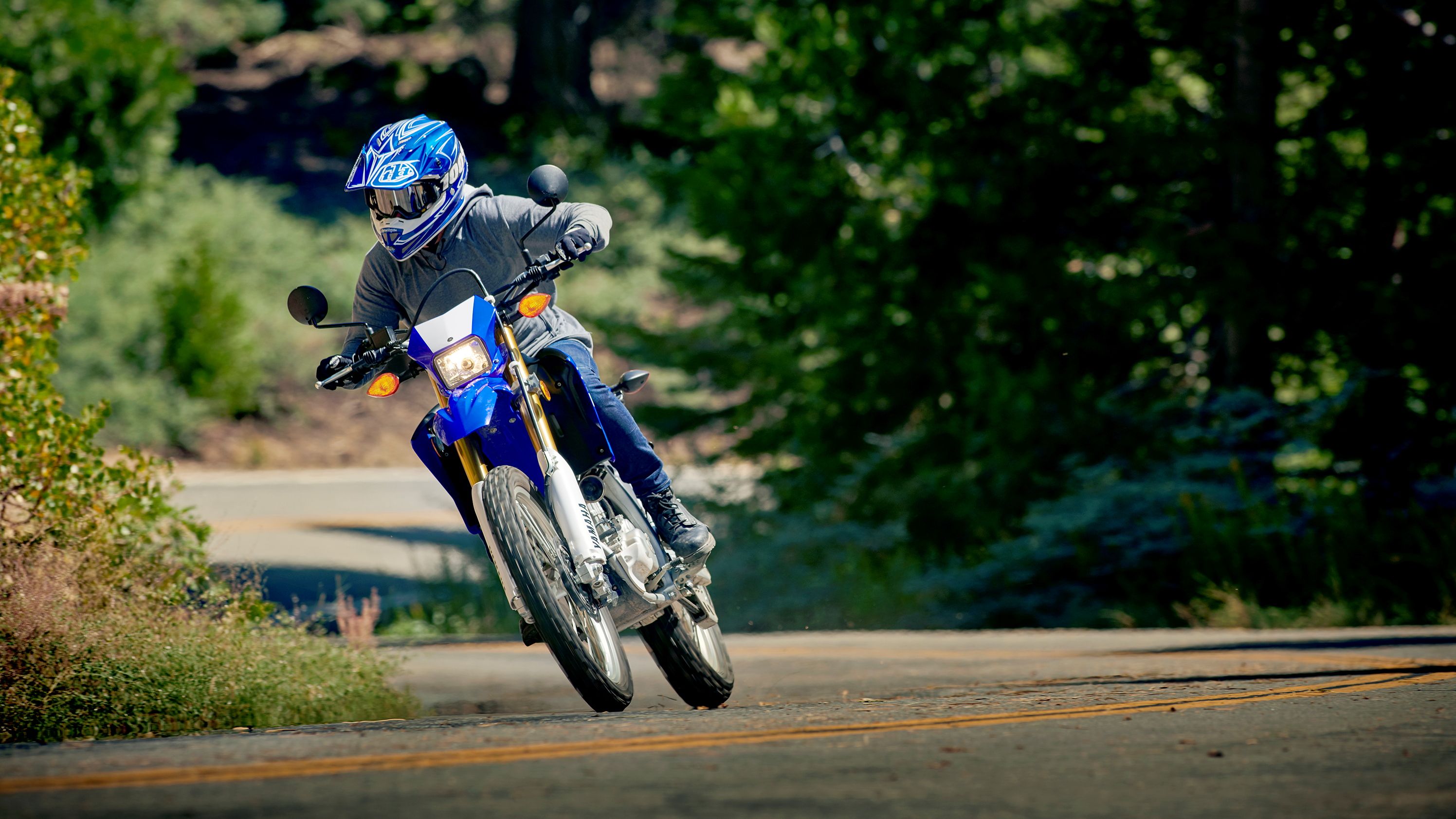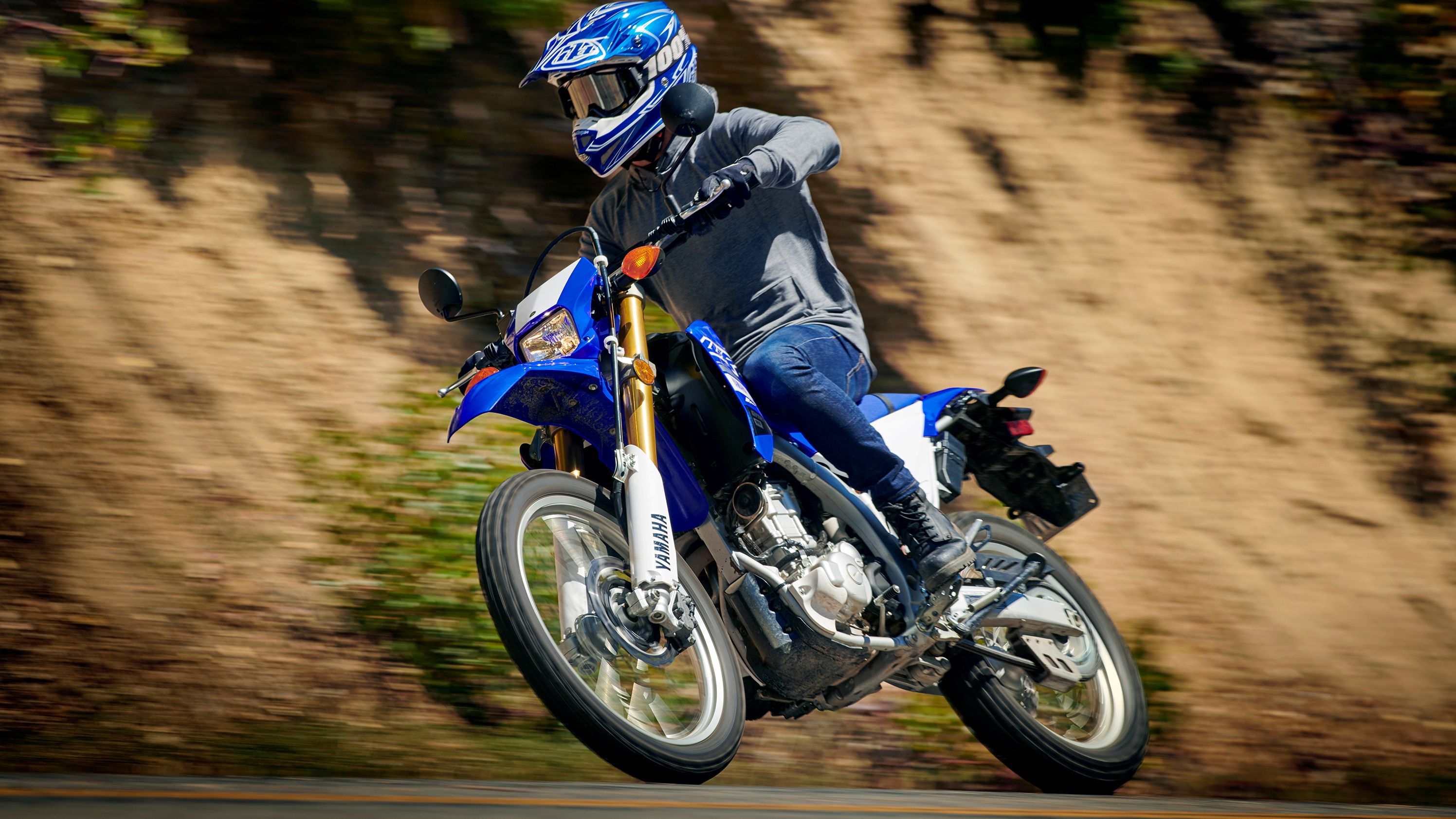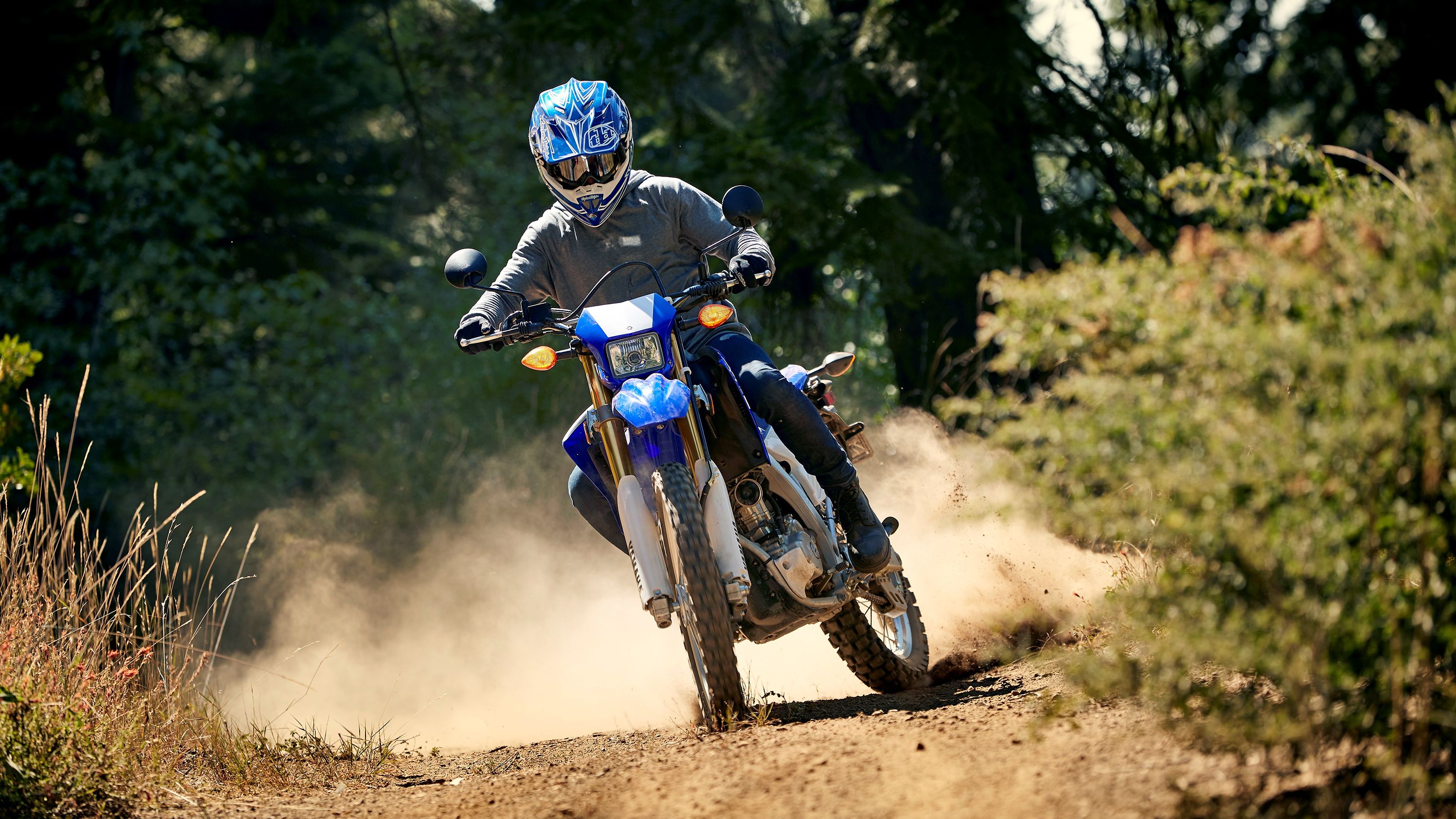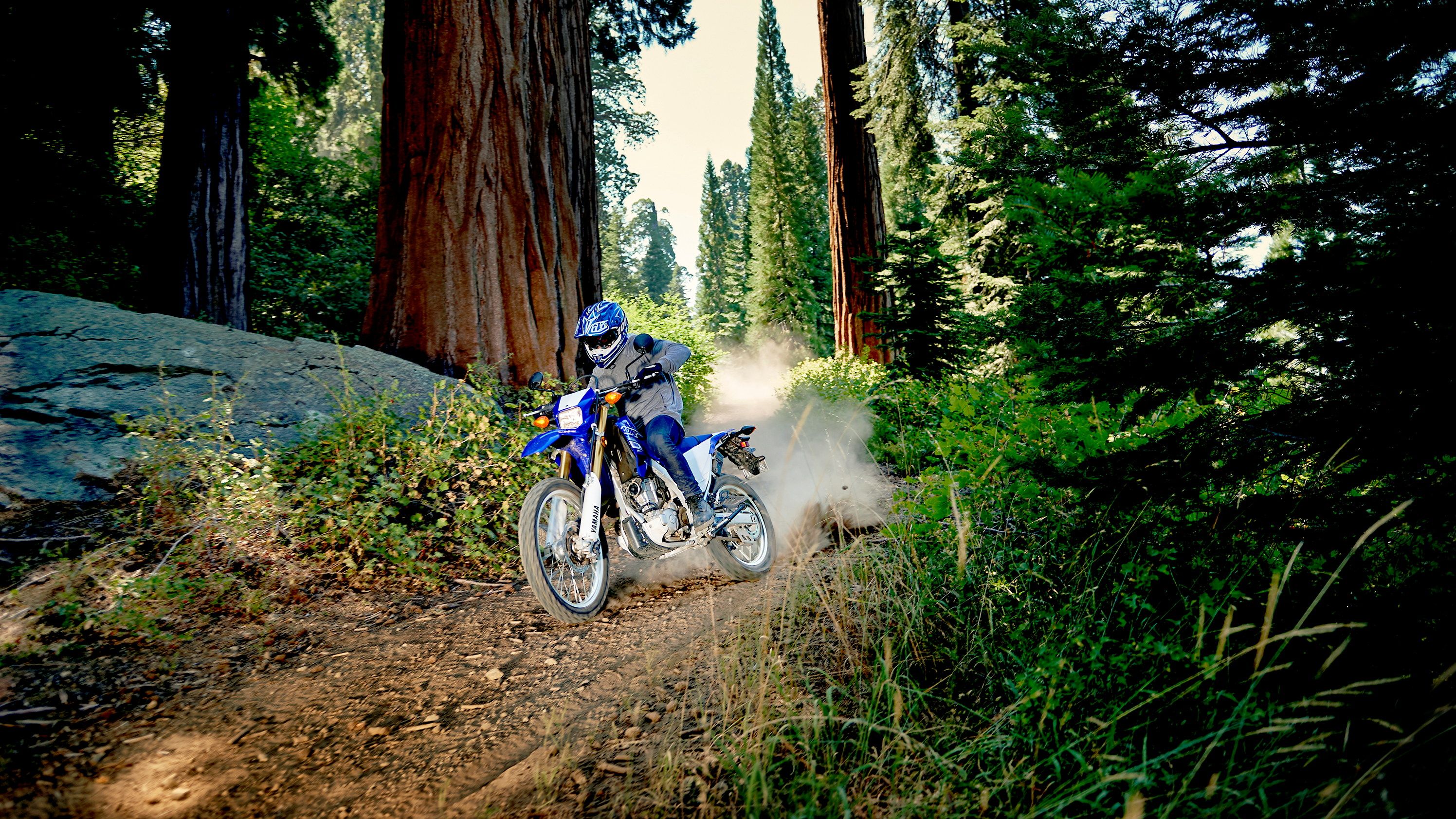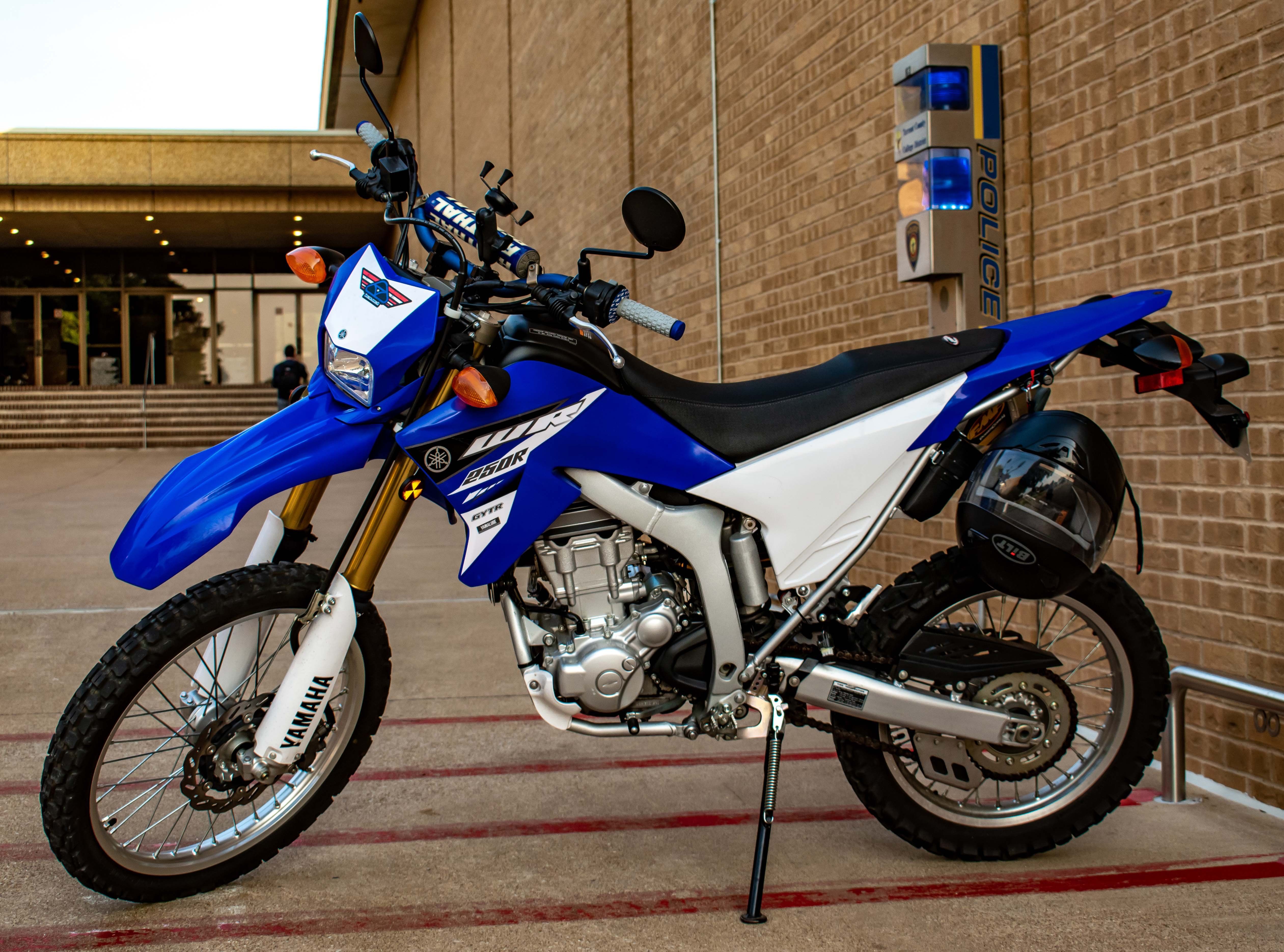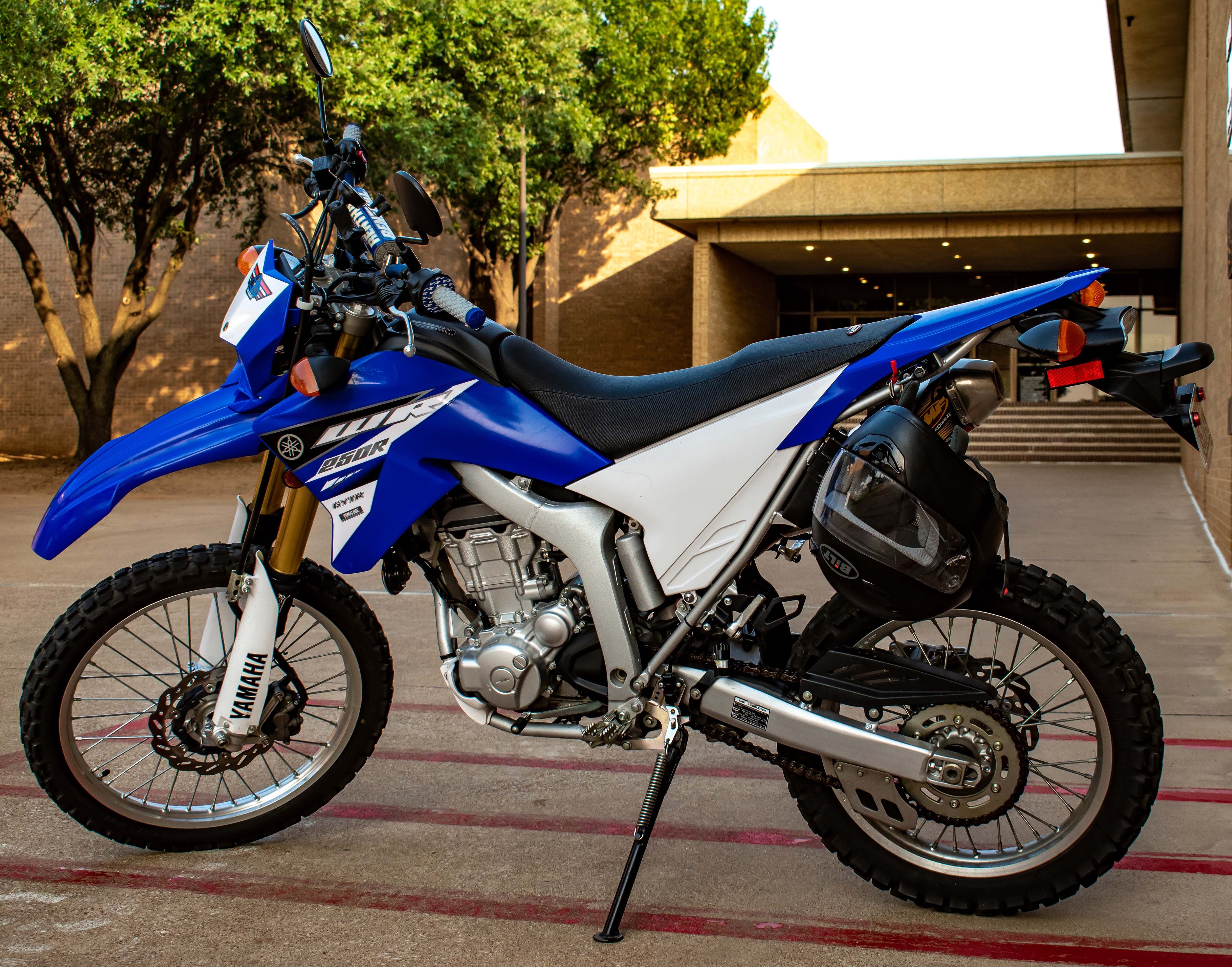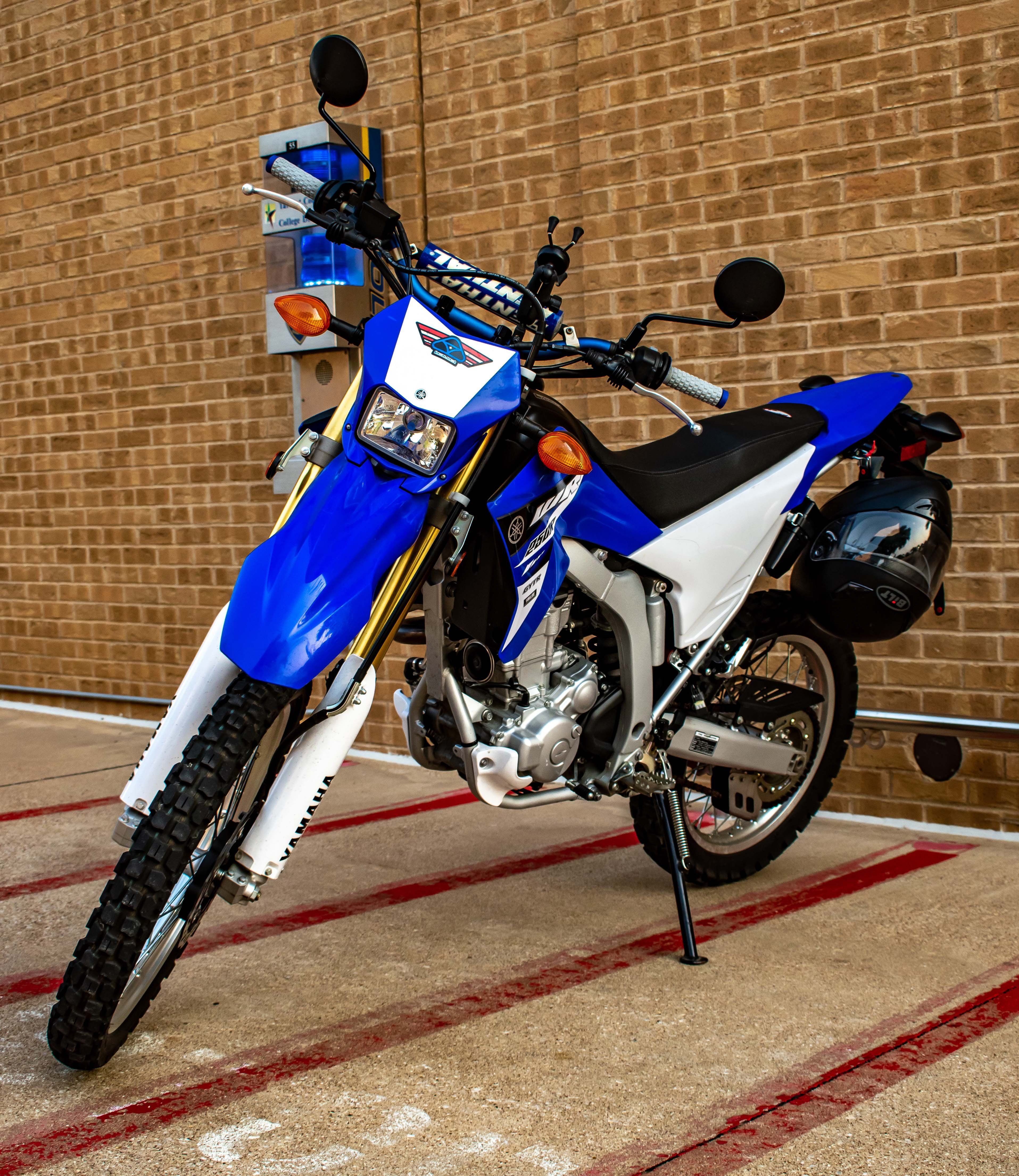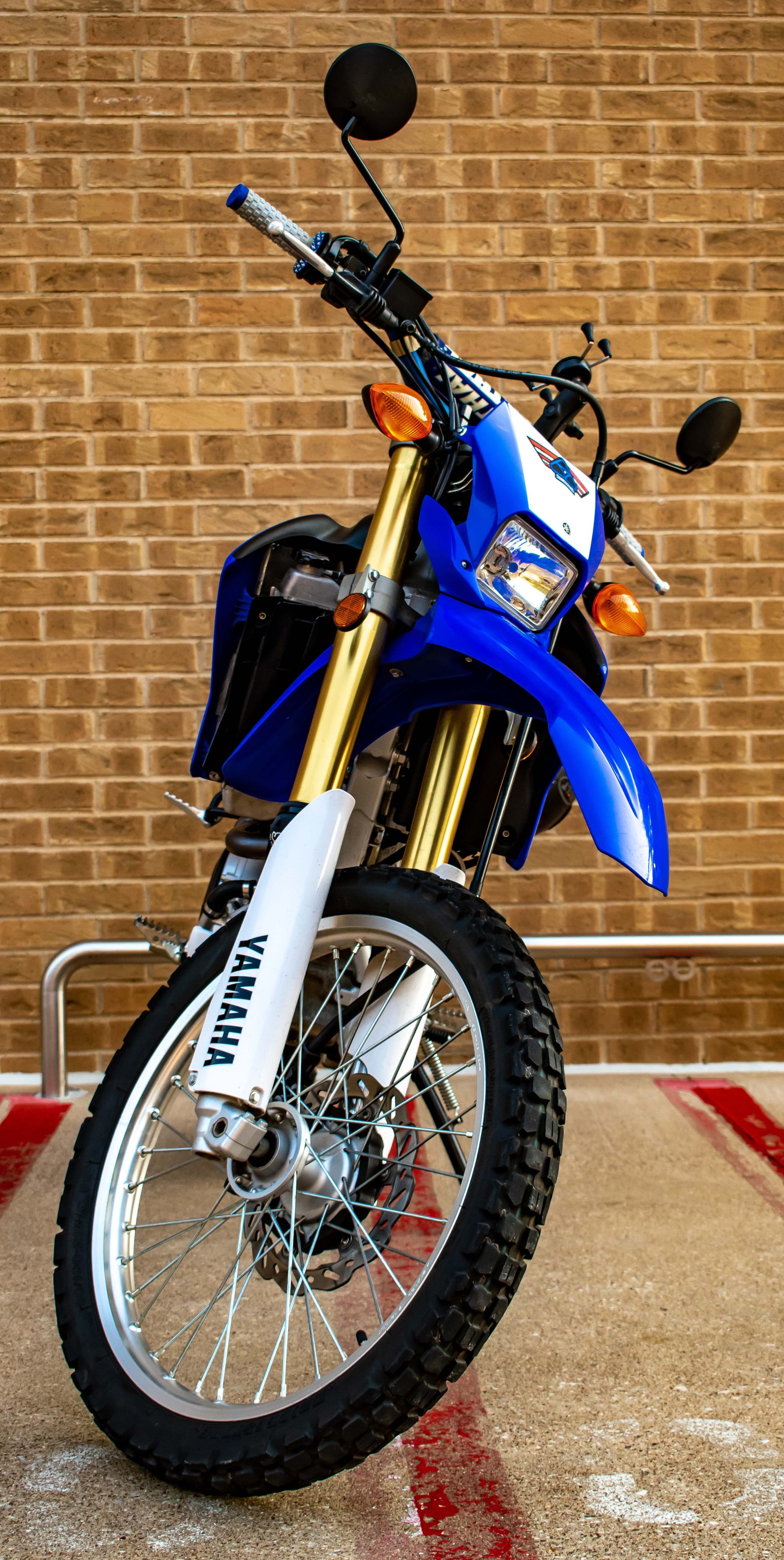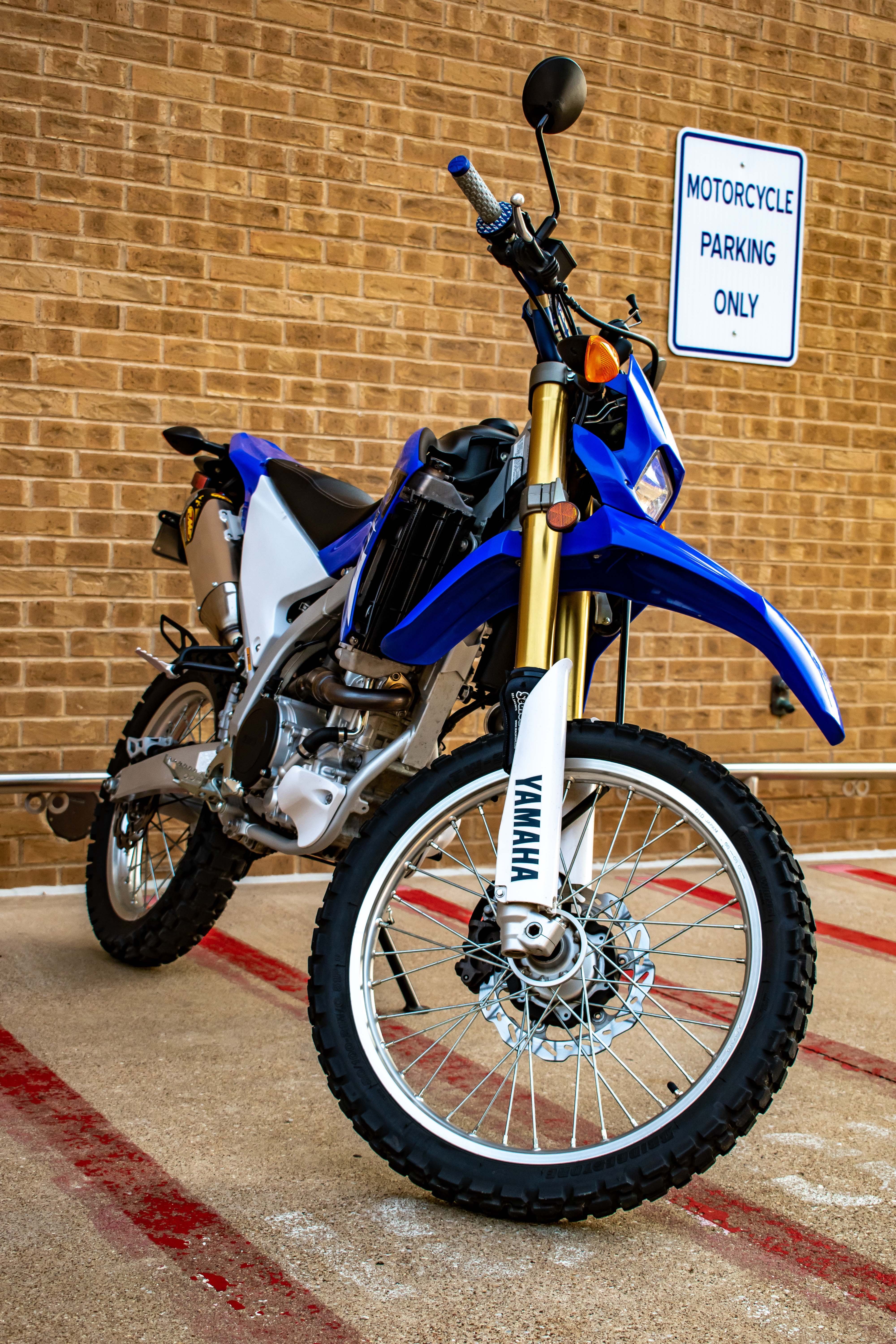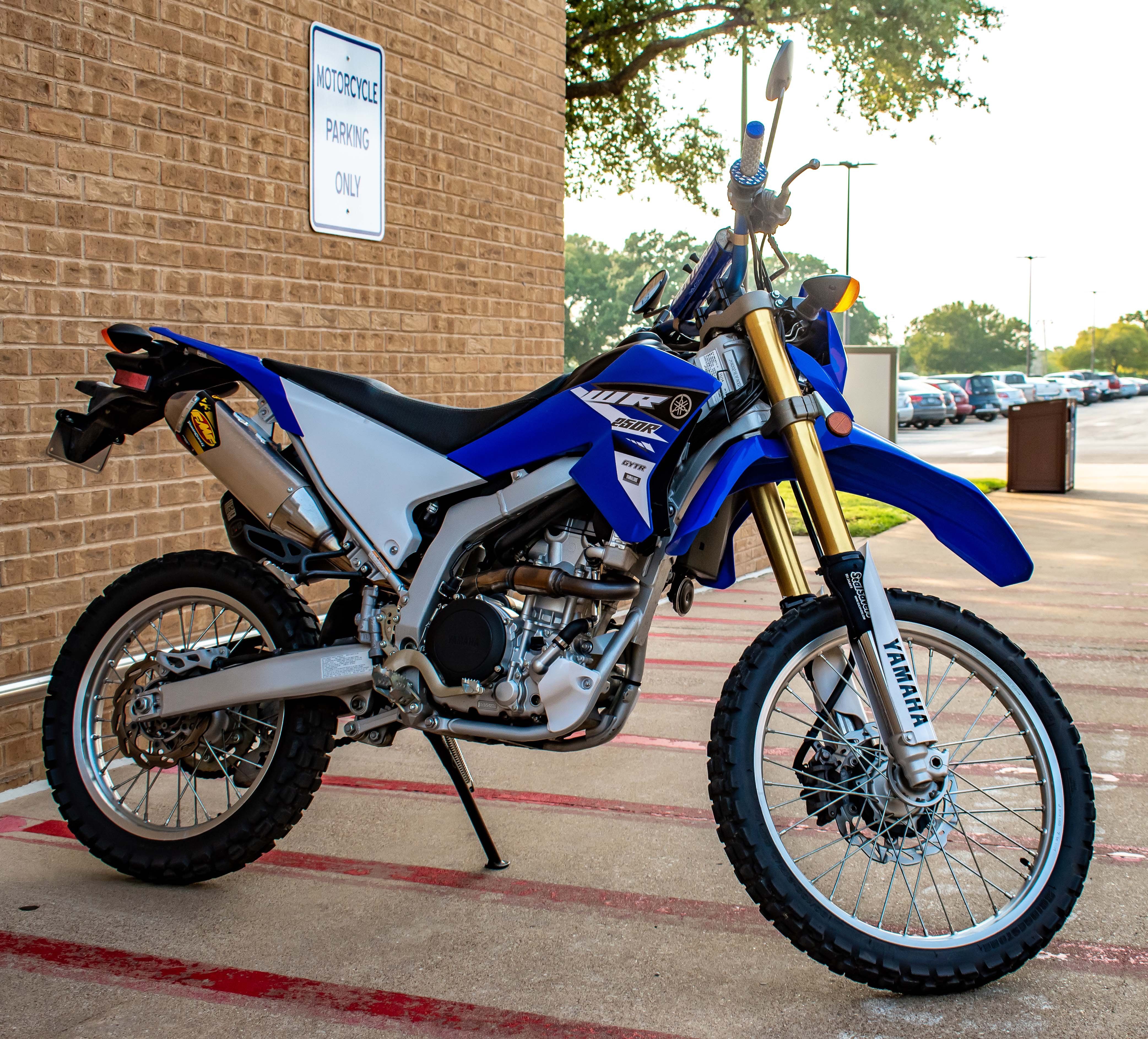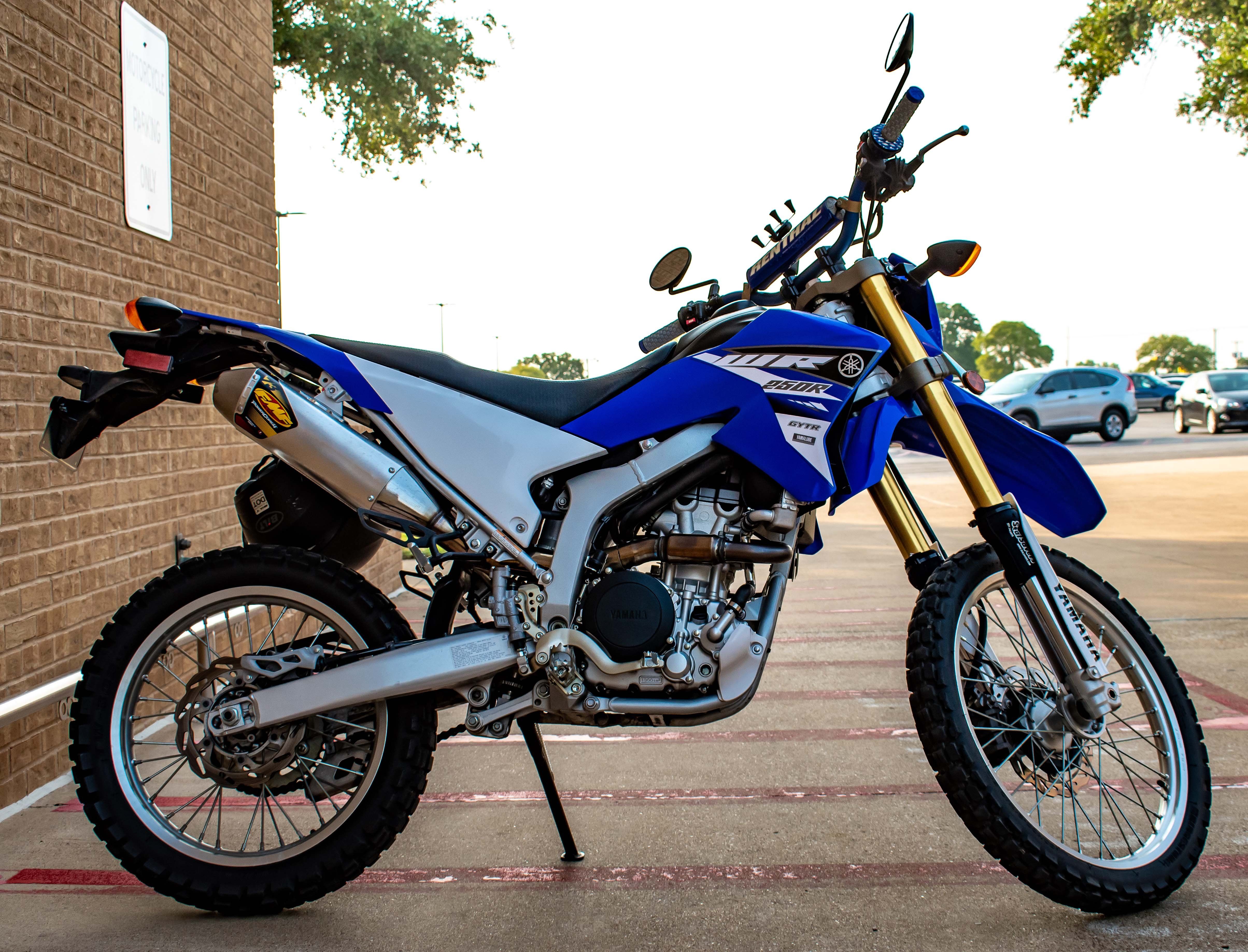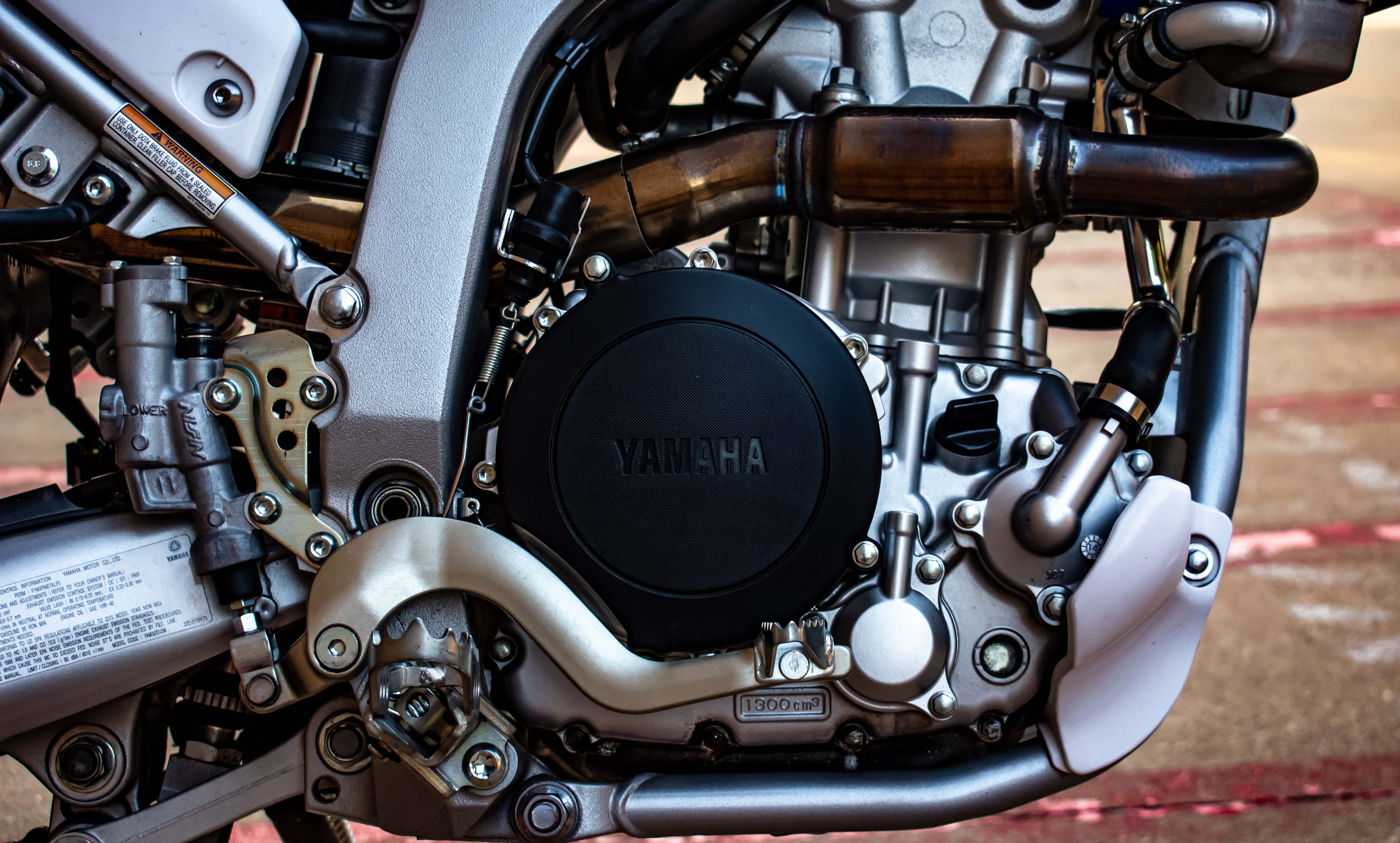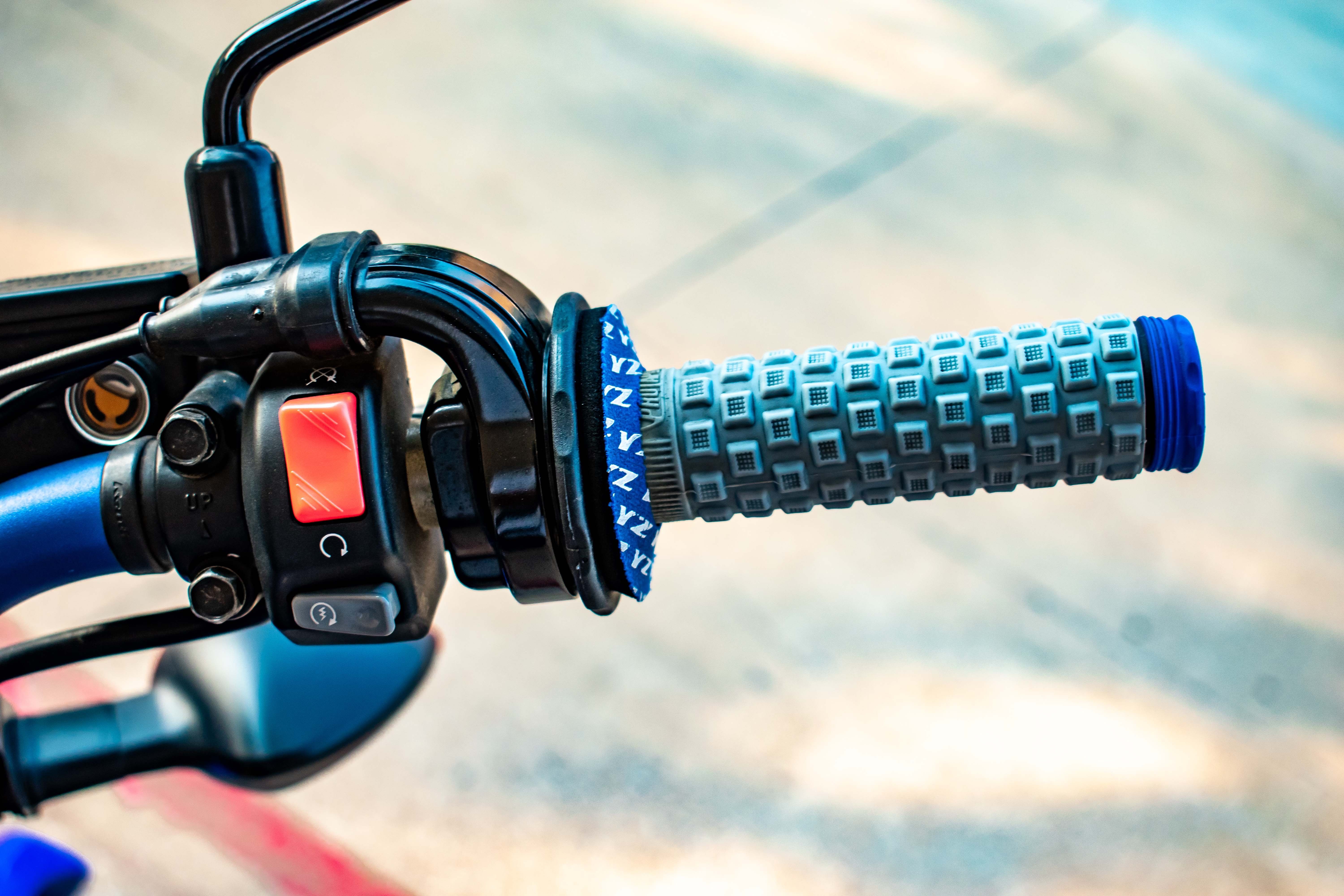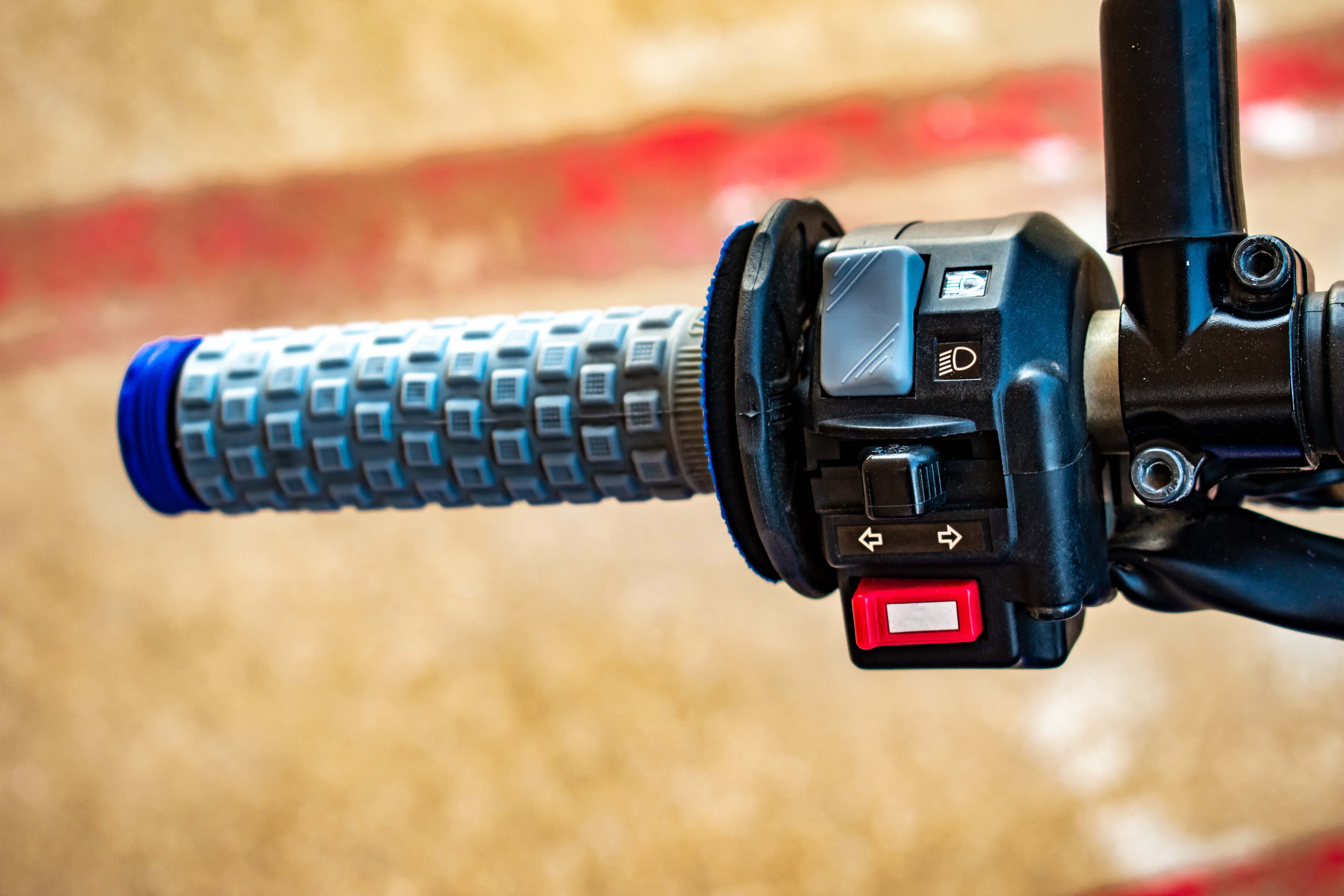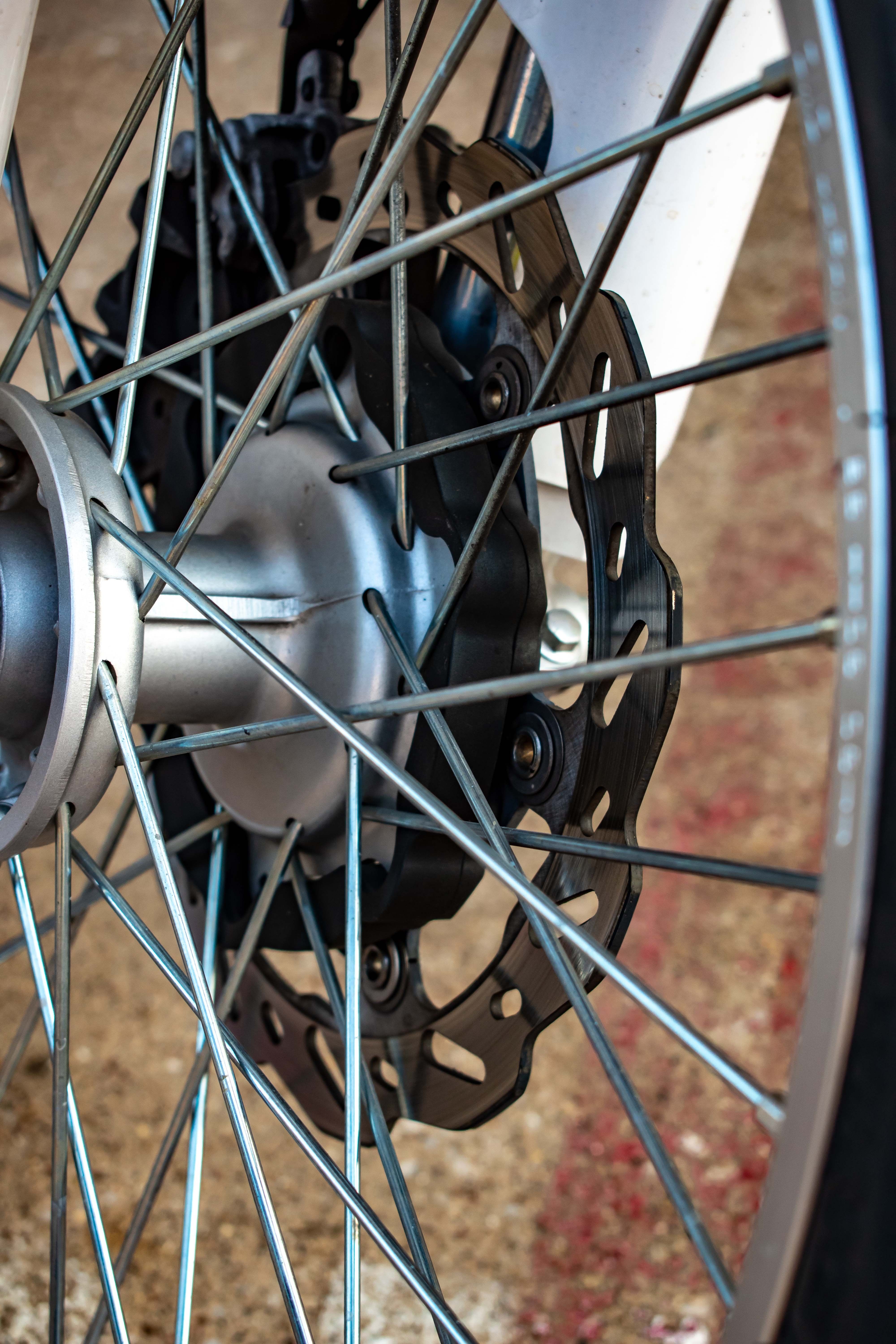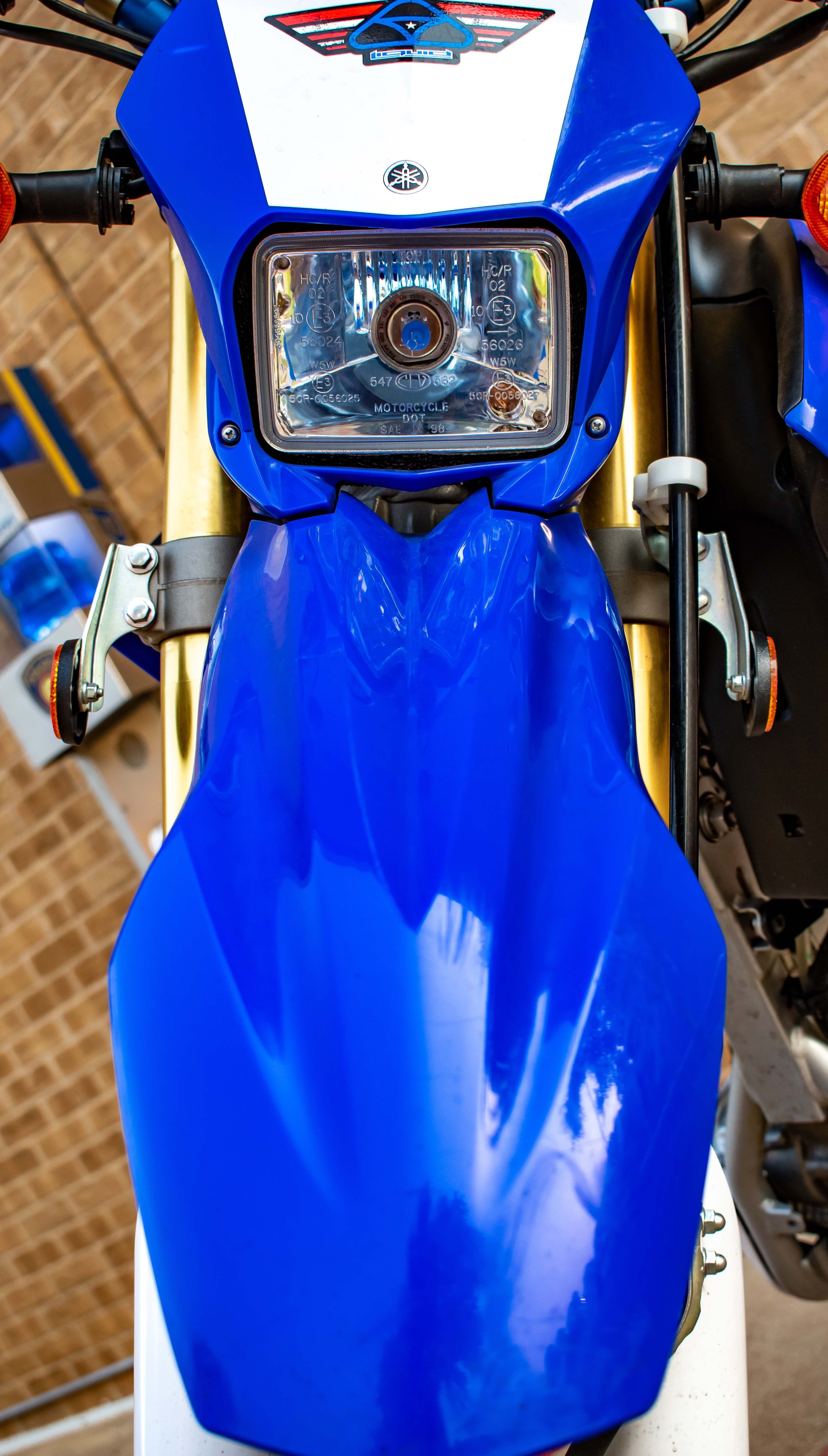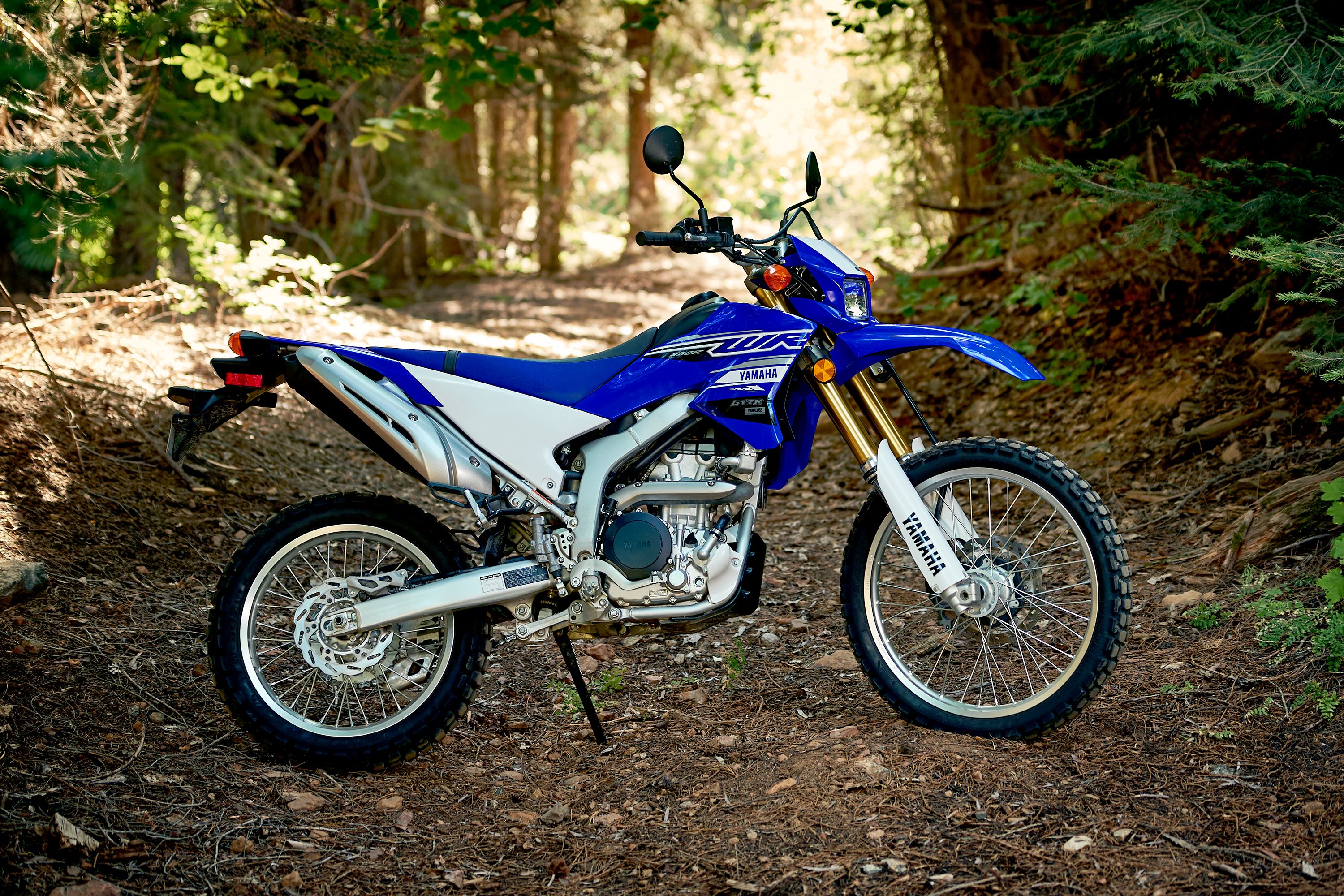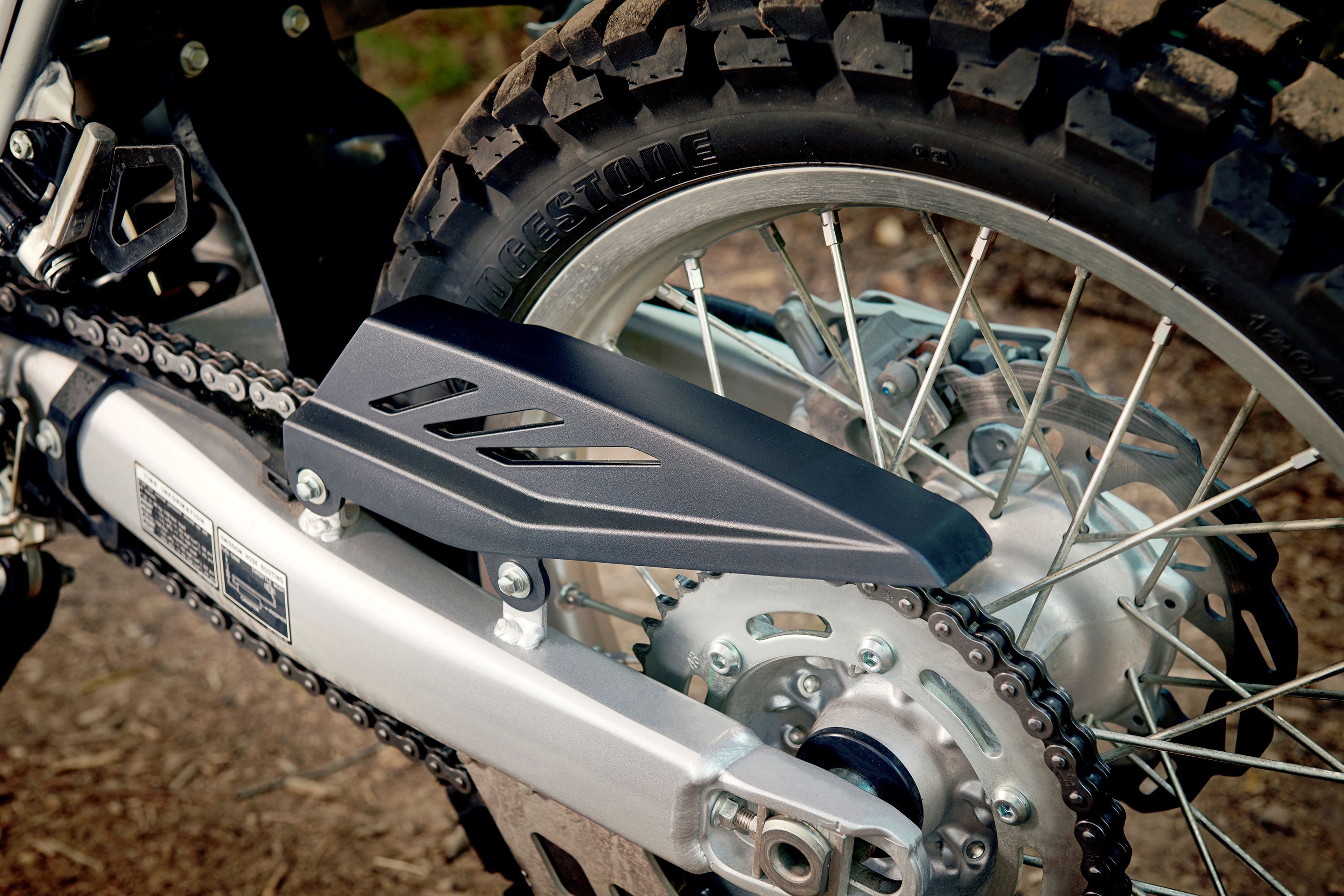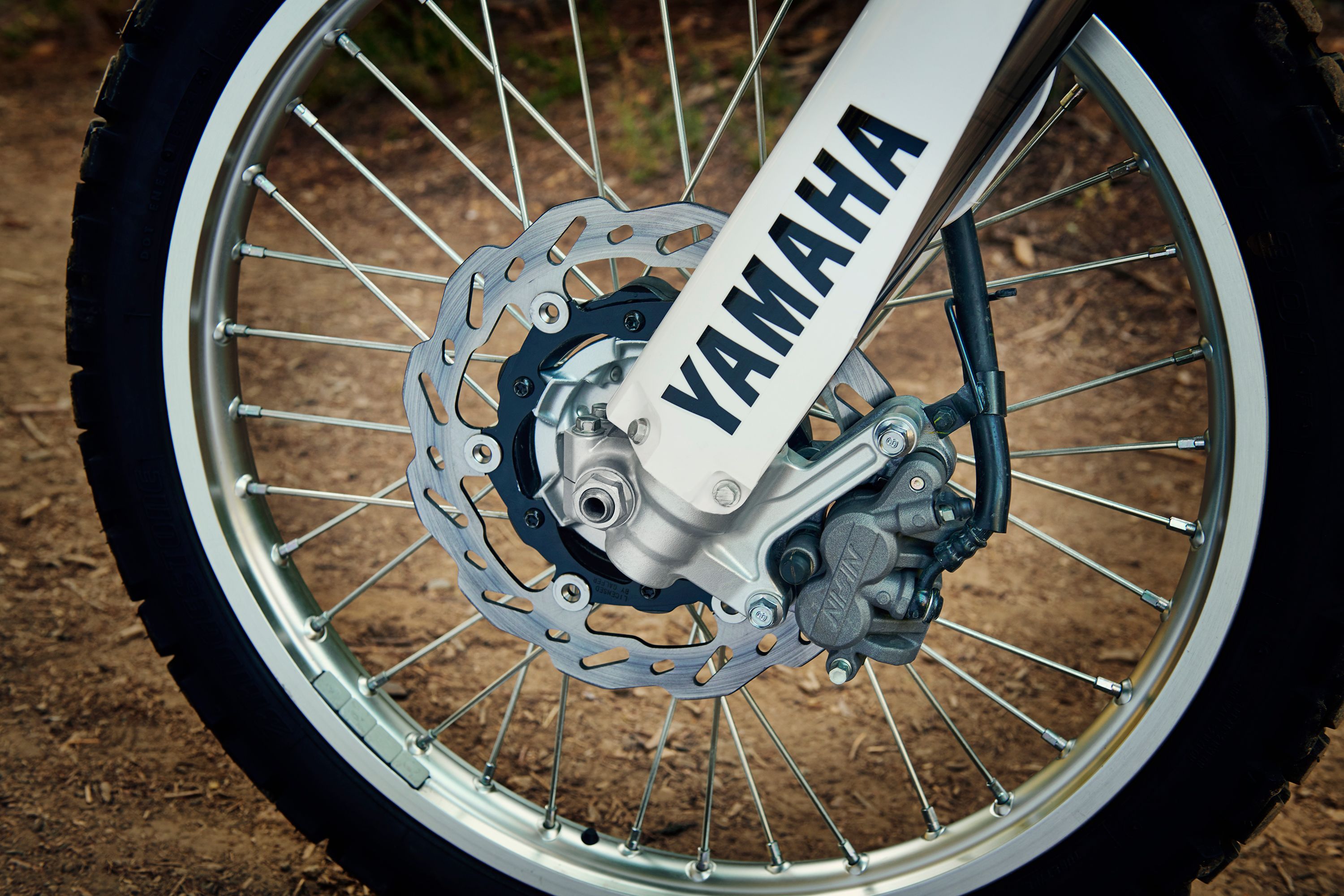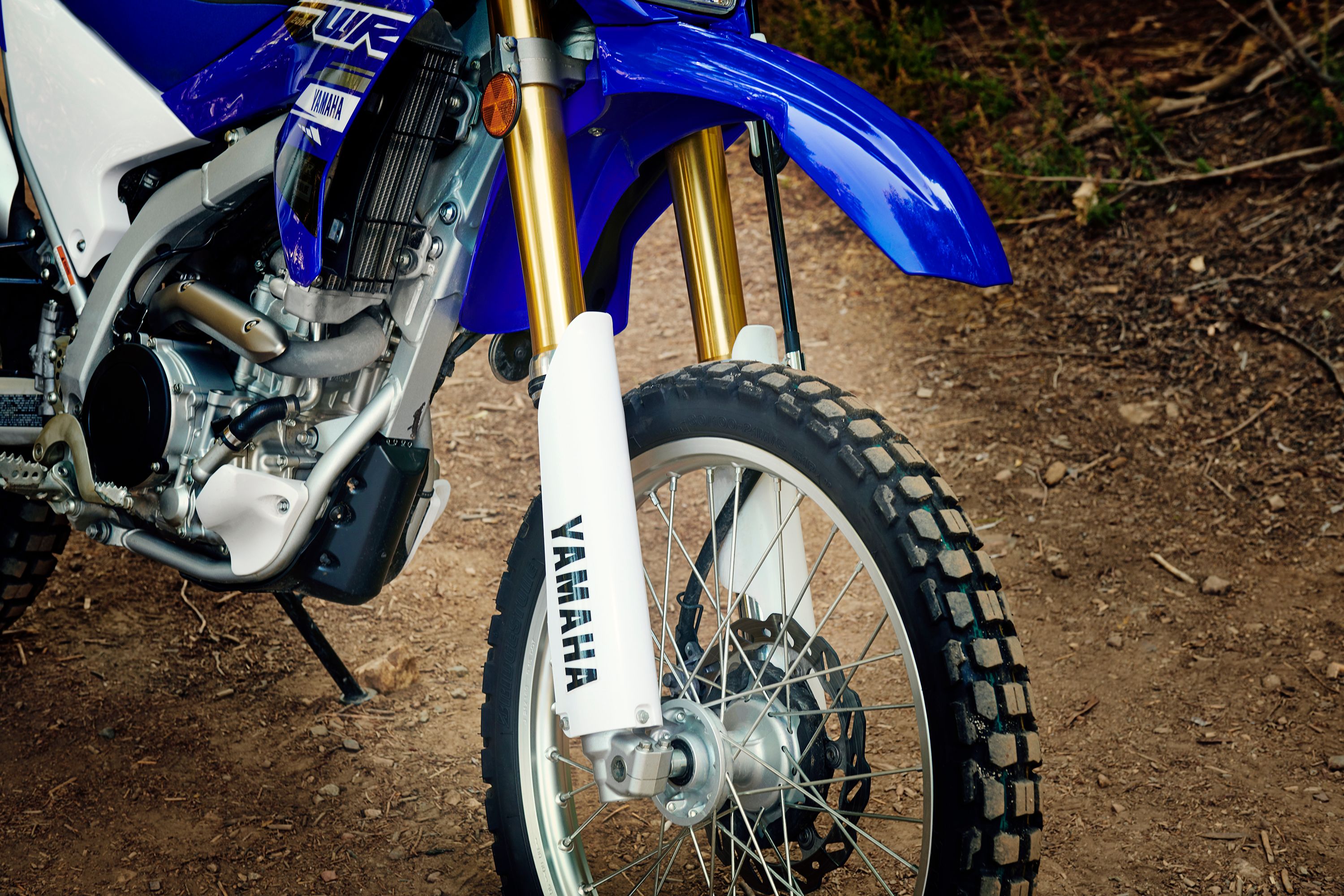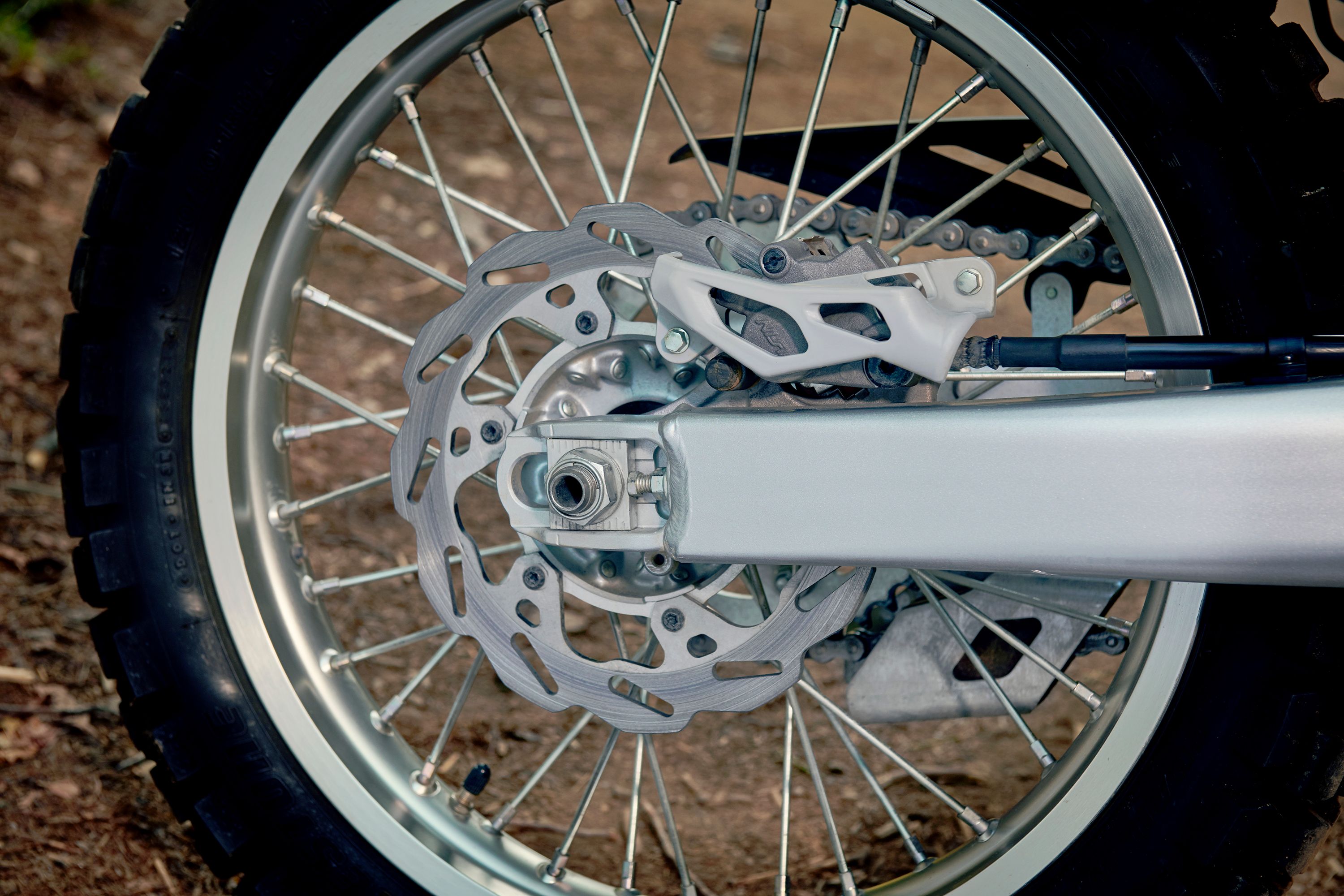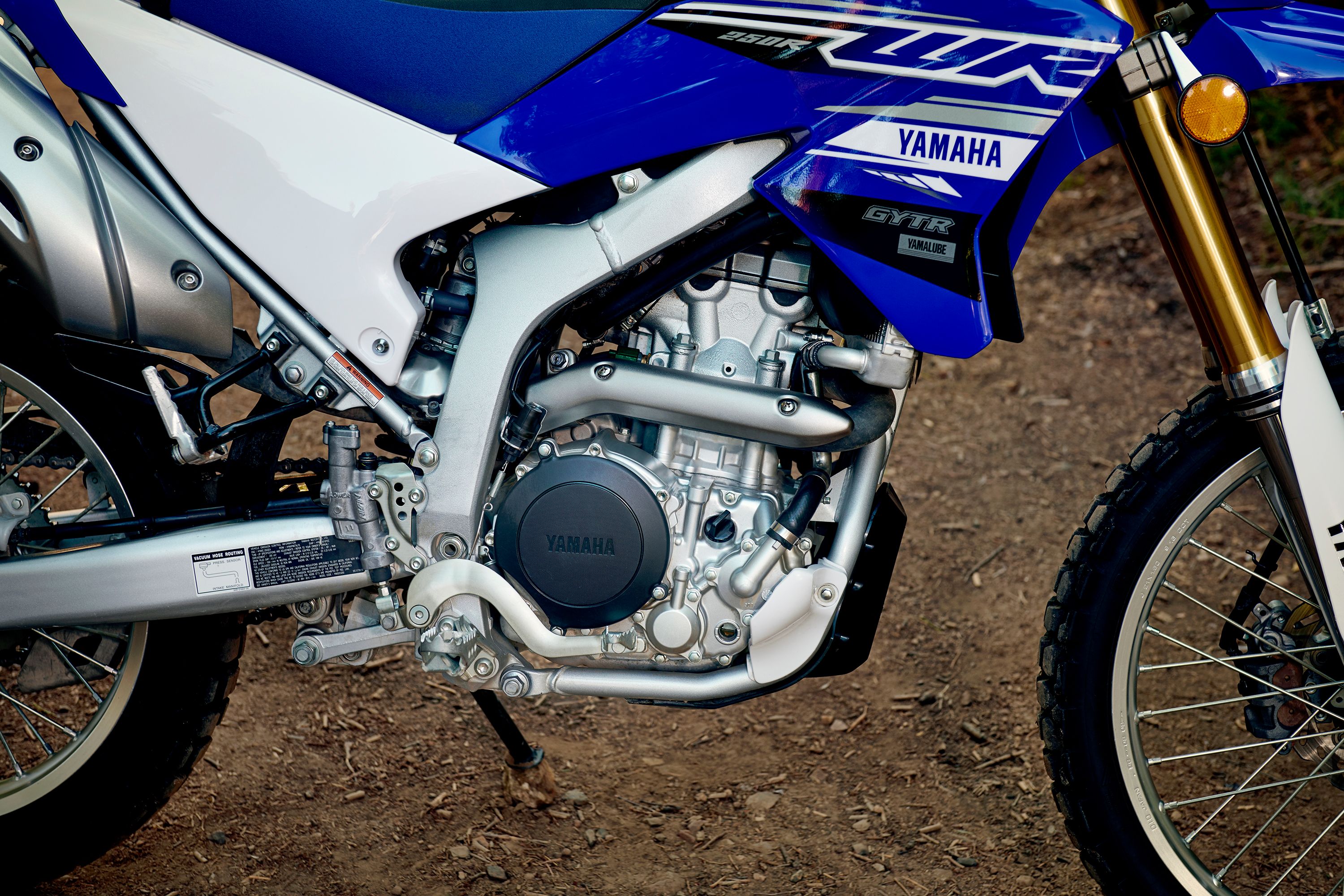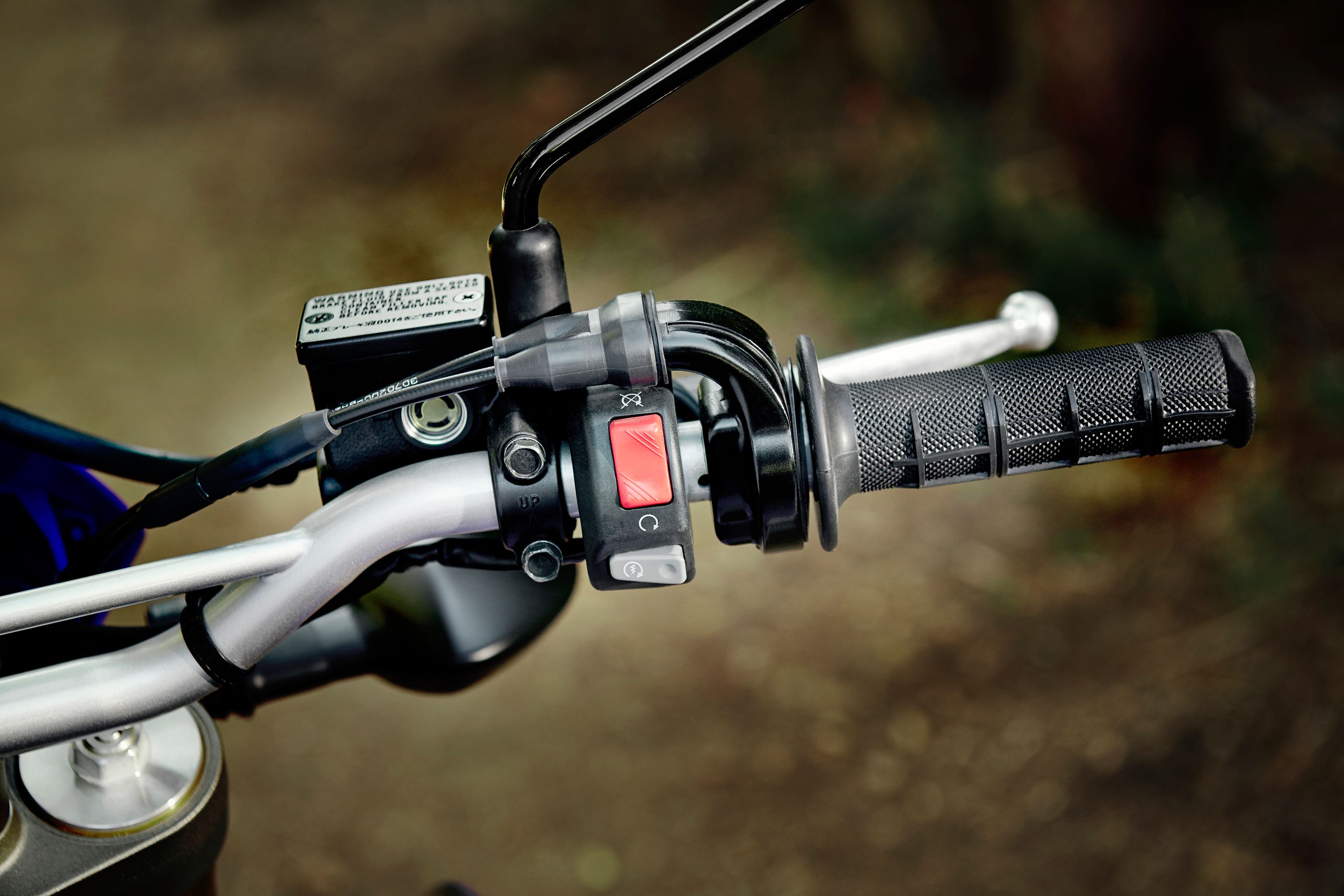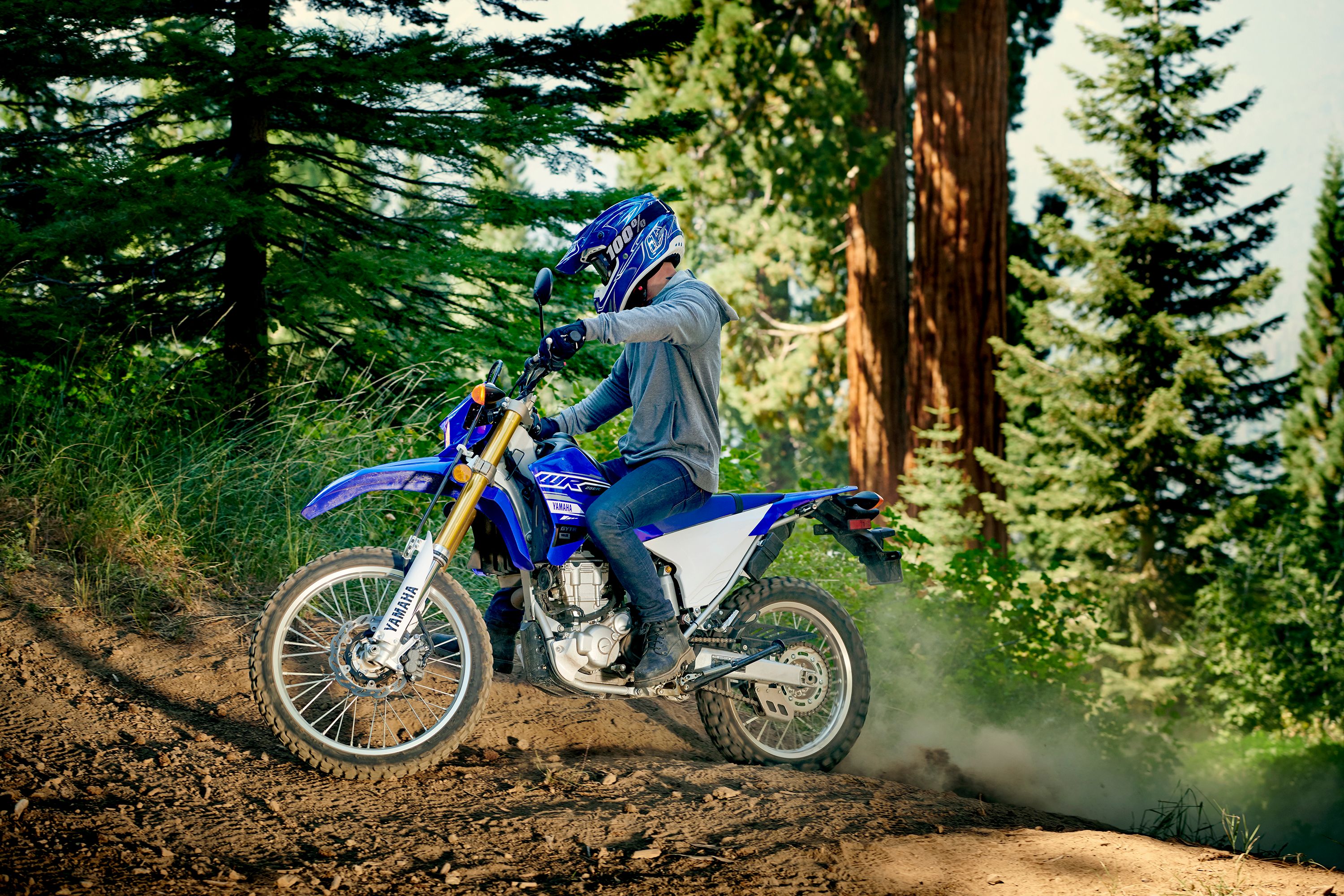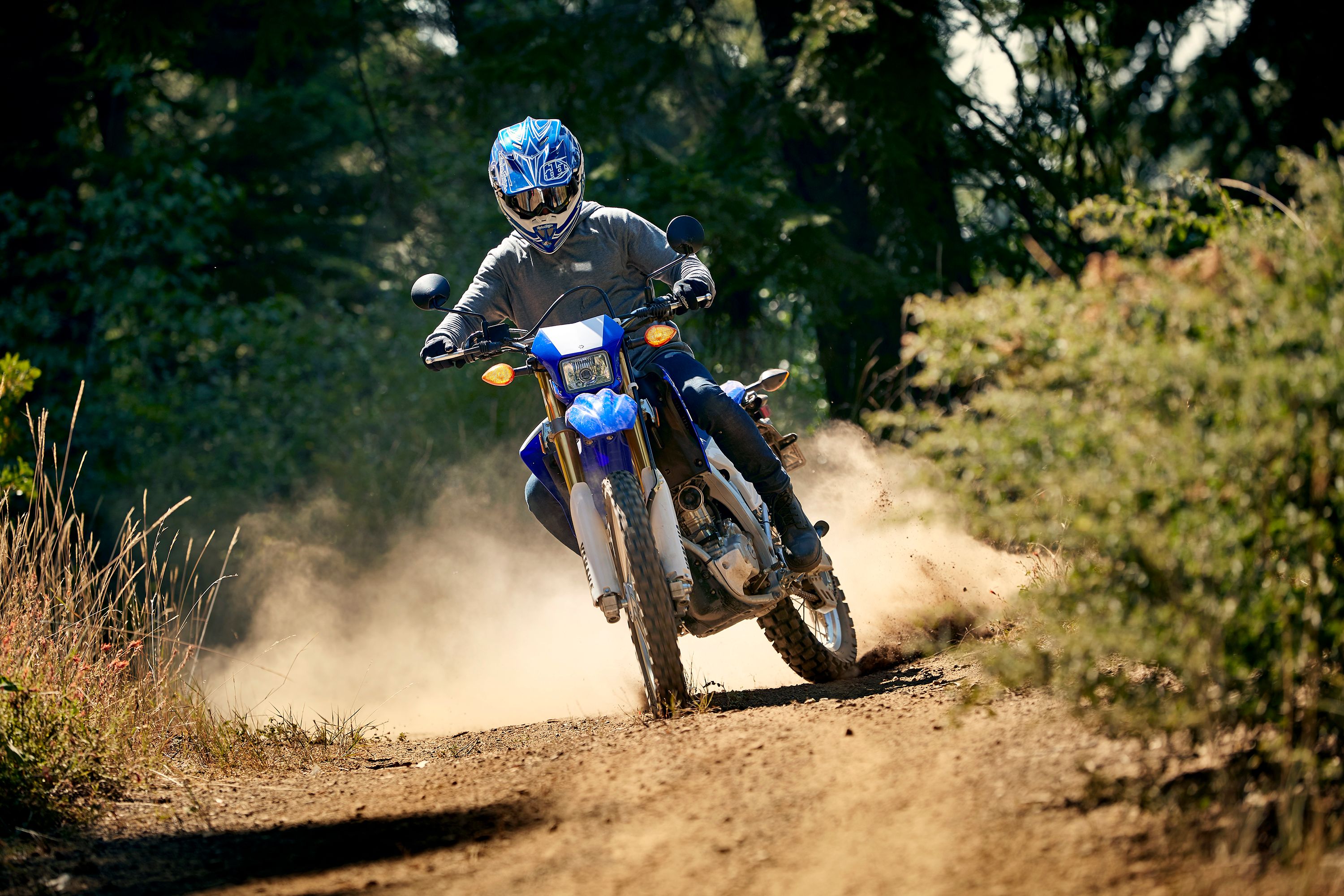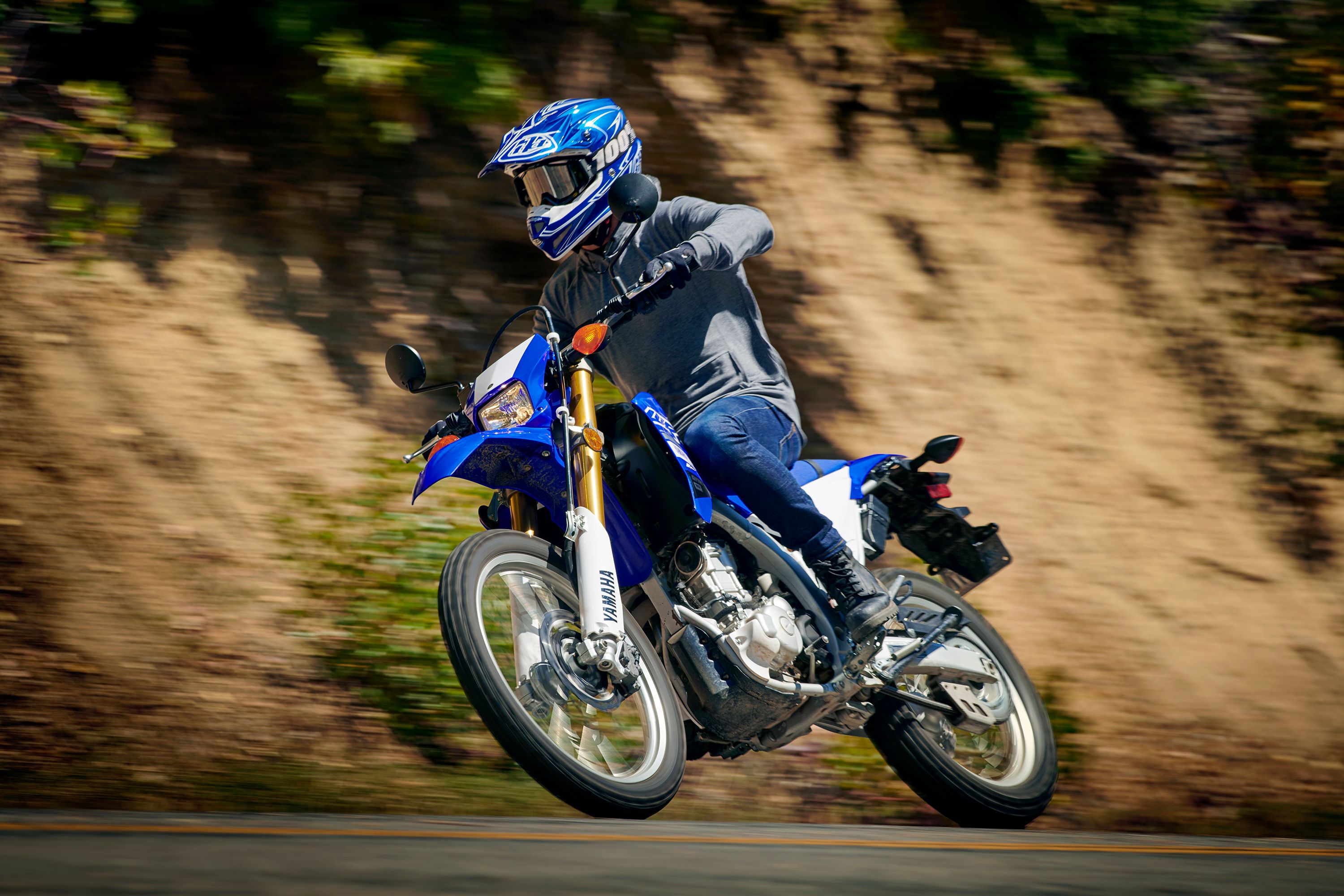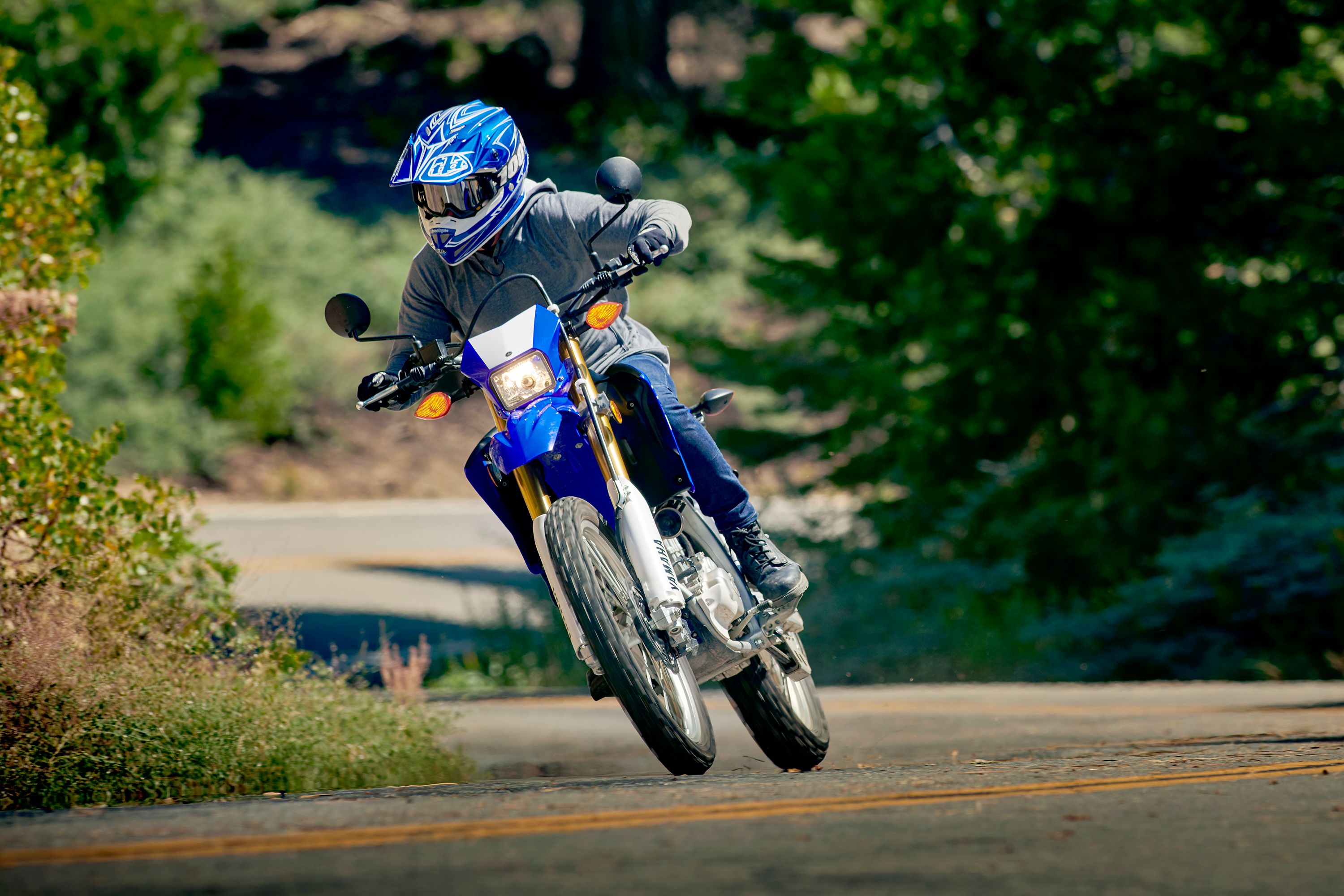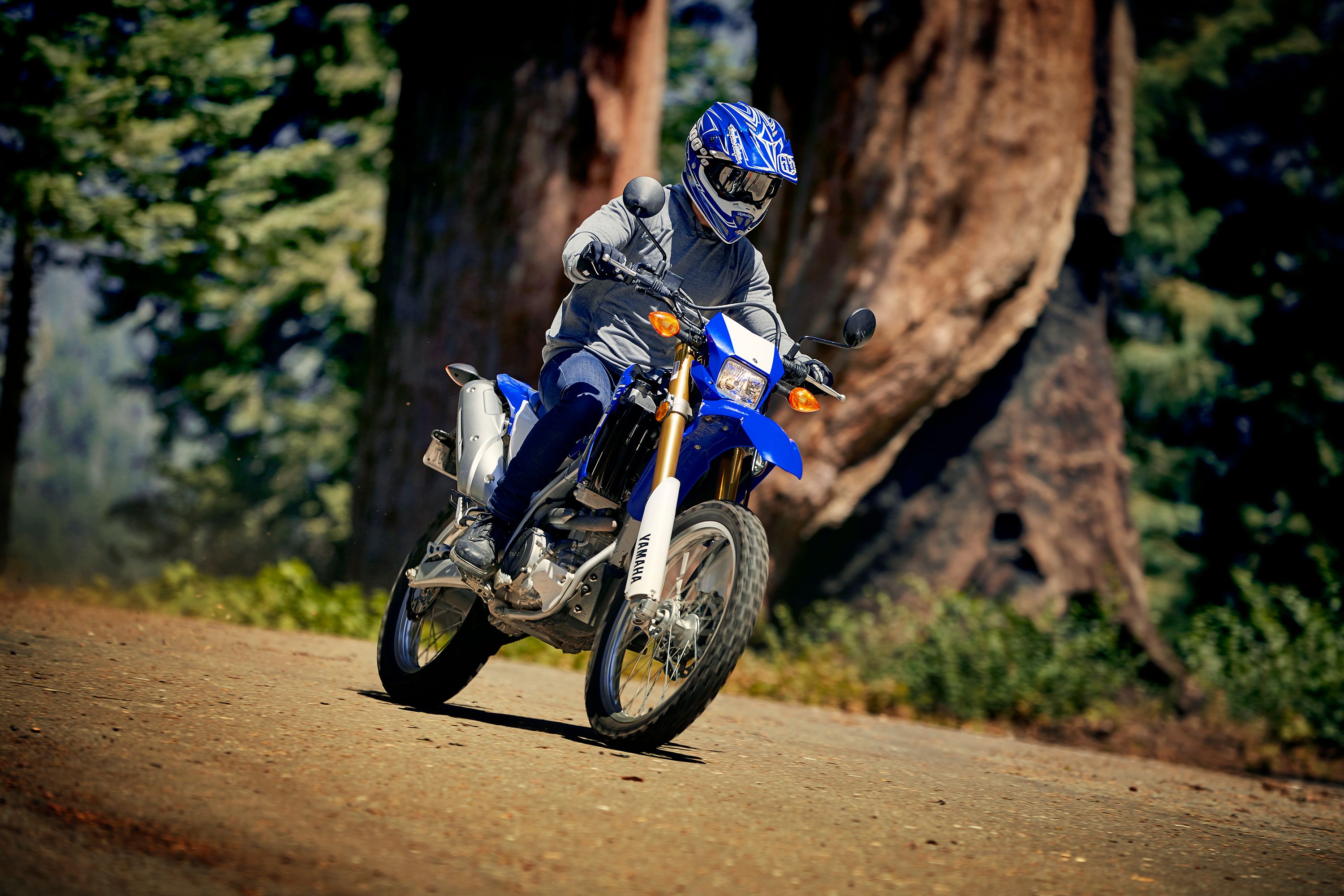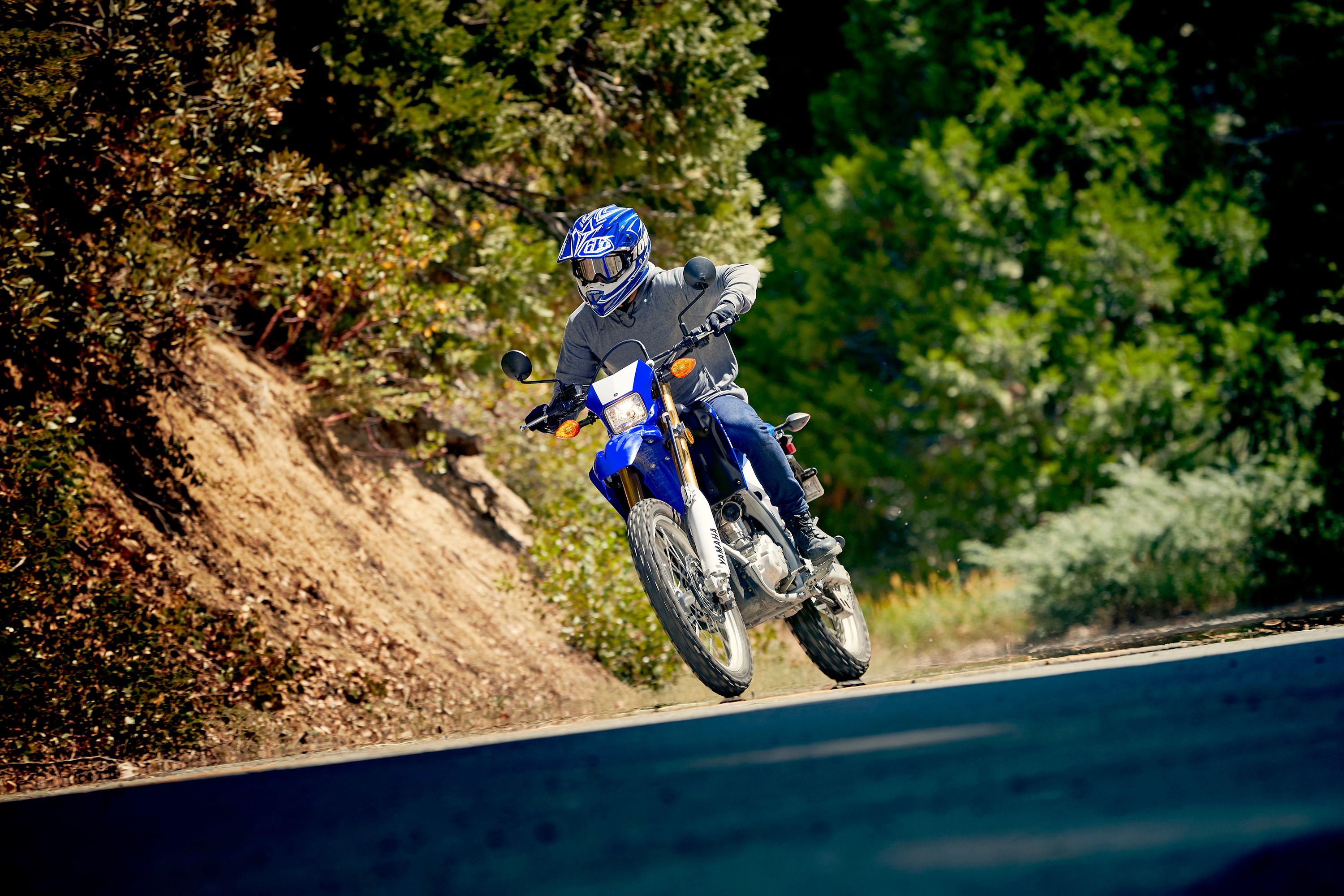Essentially a carry-over from 2008 when the WR250R was added as a street-legal offering in the Yamaha WR lineup, the 2020 model carries-on carrying-on dual-sport fun. It's not really a street-legal version of the WR250F, though the model designation tends to make it seem so. “WR” indicates it's a wide-ratio gear box, and beyond that, the sky's the limit. The wide-ratio gives an acceptable balance of highway capability and off-road responsiveness, both desirable in the dual-sport market
2015 - 2020 Yamaha WR250R
- Make: Array
- Model: 2015 - 2020 Yamaha WR250R
- Engine/Motor: Liquid-cooled DOHC 4-stroke; 4 valves
- [do not use] Vehicle Model: Array
Yamaha WR250R Design
The WR250R is not a fast bike; it's not supposed to be, but people love it. It's lightweight and agile and the 250 cc engine is spunky enough, though you have to wind it up pretty tight to get to speed. As a commuter, you can jump up the interstate for a few exits, but know that there's no roll-on left to you when cruising at those speeds. There's a little vibration at interstate speeds, but not enough to jiggle the mirrors; they stay solid and steady.
The seat height is rather tall -- a skosh over 36 inches -- so you'll have to be fairly tall to flat-foot it. The bike is very narrow, so you don't waste a lot of inseam between the seat and the ground, if that helps. The up-side to the lofty seat (which is hard as a rock, by the way) is that you have a great vantage point -- sitting high and upright gives you a commanding view.
Instrumentation is minimal. There is no fuel gauge, though it does have a low-fuel light. This speaks more to off-road than on-road and the whole display is quite small.
Yamaha WR250R Chassis
Yamaha borrowed design features from its 250 cc YZ and WR dirtbike range when setting up the composite frame for the WR250R. The upper parts of the twin-spar frame are made of either cast or forged aluminum, and use square and rectangular shapes for strength and rigidity.
Since the downtubes flow back to form a cradle that actually supports the engine, they had to be extra tough, so Yamaha clapped on a set of tubular-steel members to make up this crucial, load-bearing section and complete the unit. A tapered aluminum swingarm with extruded forks and cast braces completes the skeleton with a racetastic flair, and keeps unsprung weight low at the rear tire.
As I mentioned, seat height is up in dirtbike country at 36.6-inches tall -- a necessary evil in order to get the requisite ground clearance -- and fairly typical for the class. Really shorty-shorts might need to find a stump or something to use as an “upping block.”
The WR250R favors the brown over the black, and the suspension capabilities approach that of full-blown dirtbikes. Beefy-looking and tough as nails, the 46 mm, inverted front forks come fully adjustable with compression- and rebound-damping tweaks, as well as variable spring preload. A centrally located, linkage-mount monoshock supports the rear with the same adjustable parameters as the front, and components at both ends provide 10.6 inches of wheel travel.
The 26.7-degree rake and 4.4-inch trail is a good balance for a dual-purpose bike, and the 11.8-inch ground clearance and mild suspension is sufficient for all but the most enthusiastic off-road shenanigans. Yamaha doubles down on the off-road bias with laced rims to mount the 80/100-21 front and 120/80-18 rear tires that are really much more a straight-up knobby than many of the dual-surface tires available today. Brakes are sized for dirt as well, with a twin-pot caliper binding a 250 mm, wave-cut front disc and a single-piston caliper pinching the 230 mm, wave-cut rear.
|
Suspension, Front: |
Inverted fork; fully adjustable, 10.6-in travel |
|
Suspension, Rear: |
Single shock; fully adjustable, 10.6-in travel |
|
Brakes, Front: |
Hydraulic single-disc brake, 250mm |
|
Brakes, Rear: |
Hydraulic single-disc brake, 230mm |
|
Tires, Front: |
80/100-21 |
|
Tires, Rear: |
120/80-18 |
Yamaha WR250R Drivetrain
The engine on the WR250R has more of a streetwise temperament, with a linear power delivery that works well on any surface. Power generation comes courtesy of the 77 mm by 53.6 mm, 250 cc, water-cooled thumper that churns out 28 ponies and 17 pounds of grunt, but you have to wind it out to a screaming 10 grand to get all of it. Good news is; the engine likes to be wound up, so you can go ahead and wring the throttle with abandon. Part of this power comes from the Yamaha Fuel Injection (YFI) system and ECU-controlled, coil-on-plug ignition system.
The factory also uses something it calls the “EXUP Exhaust” valve and electronic intake-control valve to stretch the usable powerband a bit, and the results are encouraging. Between the engine performance, the six-speed tranny gearing and final-drive ratio, the WR250R can prowl around rocks and rough terrain with almost trials-bike control and resistance to stalling. The mill delivers its power while sipping at the gas at an impressive 71 mpg, and if you have the nerve for it, a top speed somewhere just shy of 90 mph. That's on the superslab of course, not off-road. I'm quite sure I don't want to go that fast on any surface riding on knobbies, but maybe that's just me.
|
Engine Type: |
Liquid-cooled DOHC 4-stroke; 4 valves |
|
Displacement: |
250 cc |
|
Bore x Stroke: |
77.0 mm x 53.6 mm |
|
Compression Ratio: |
11.8:1 |
|
Fuel Delivery: |
Fuel injection |
|
Ignition: |
TCI with direct ignition coil |
|
Transmission: |
Constant-mesh 6-speed; multiplate wet clutch |
Yamaha WR250R Pricing
MSRP on the 2020 Yamaha WR250R is $6,699, essentially the same price as it has been since 2012. It should be no surprise that the only available colorway is the persistent Team Yamaha Blue/White. Yamaha gives you a one-year limited factory warranty on your new WR250R.
|
Warranty: |
1 Year (Limited Factory Warranty) |
|
Color: |
Team Yamaha Blue/White |
|
Price: |
$6,699 |
Yamaha WR250R Competitors
Honda is hot on Yamaha's heels with its own take on dual-sport bikes in the CRF250L “Rally.” The Honda entry carries more protection with a wider fairing than the Yamaha WR250R along with a stock vented windscreen and handguards. Like the Yamaha, the Rally comes equipped with street-legal equipment – headlights, blinkers, and taillight – that puts both rides squarely in the post-enduro bracket.
The Rally has a bench seat to allow for body shifts fore-and-aft, as well as side-to-side, during technical work. Both have dirtbike-like flylines with wire-spoke wheels that off-road riders prefer, and the hoops have a definite bias toward the brown though they do carry street flats for road work.
Honda's suspension comes with fixed values, but more importantly, they bring long stroke ranges to soak up the abuse of terrain and/or poorly maintained roads. The Rally totes a 249.6 cc engine to fall just a hair shy of the Yamaha's plant, and it measures in with 24 ponies and 16.7 pounds o' grunt against 28/17 to fall short yet again.
You can get the Rally with or without ABS for $6,249 or $5,949, respectively, so the Honda enjoys a slight victory at the checkout, but that offset is unlikely to buy the Red Riders much business, especially in light of the Yamaha's power advantage.
He Said
My husband and fellow motorcycle writer, TJ Hinton, says, “As usual, you can pencil me in as 'just don't get it'. These bikes do the same thing as enduro bikes, in the same way, heck they even look a lot alike; dirtbikes with turn signals. While adventure bikes are a real thing, I think these little dual-sports are just enduros with a kitschy new marketing name, and are really nothing particularly new or exciting under the sun.”
She Said
“Since I tend to gravitate to off-road on these dual-sports, I would have to spring for some accessories: chain and caliper guards, hand guards.....stuff like that. Fuel economy would put this squarely in the commuter category, as well. It's a spunky little fun bike and with this trend in recent years to go to smaller cc engines, this ride might just be what you need to combine some fun with a short commute.”
Yamaha WR250R Specifications
|
Engine & Drivetrain: |
|
|
Engine: |
Liquid-cooled DOHC 4-stroke; 4 valves |
|
Displacement: |
250 cc |
|
Bore x Stroke: |
77.0 mm x 53.6mm |
|
Compression Ratio: |
11.8:1 |
|
Fuel Delivery: |
Fuel injection |
|
Ignition: |
TCI with direct ignition coil |
|
Transmission: |
Constant-mesh 6-speed; multiplate wet clutch |
|
Final Drive: |
Chain |
|
Chassis: |
|
|
Suspension, Front: |
Inverted fork; fully adjustable, 10.6-in travel |
|
Suspension, Rear: |
Single shock; fully adjustable, 10.6-in travel |
|
Brakes, Front: |
Hydraulic single-disc brake, 250 mm |
|
Brakes, Rear: |
Hydraulic single-disc brake, 230 mm |
|
Tires, Front: |
80/100-21 |
|
Tires, Rear: |
120/80-18 |
|
Dimensions & Capacities: |
|
|
L x W x H: |
85.6 x 31.9 x 48.4 in |
|
Seat Height: |
36.6 in |
|
Wheelbase: |
55.9 in |
|
Ground Clearance: |
11.8 in |
|
Fuel Capacity: |
2.0 gal / California model 1.9 gal |
|
Fuel Economy: |
71 mpg |
|
Wet Weight: |
295 lb |
|
Top Speed: |
87 mph (est) |
|
Details: |
|
|
Warranty: |
1 Year (Limited Factory Warranty) |
|
Color: |
Team Yamaha Blue/White |
|
Price: |
$6,699 |
Further Reading
Honda CRF250L / CRF250L Rally
See our review of the Honda CRF250L CRF250L Rally.
Yamaha WR250F
See our review of the Yamaha WR250F.
Yamaha
Read more Yamaha news.


